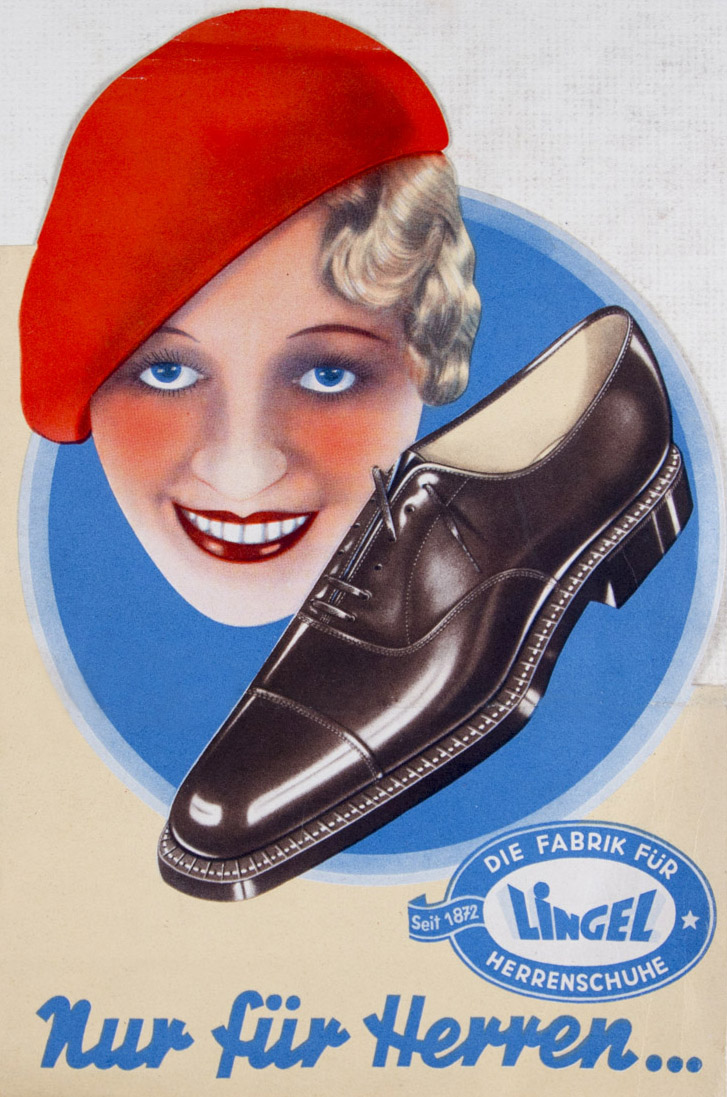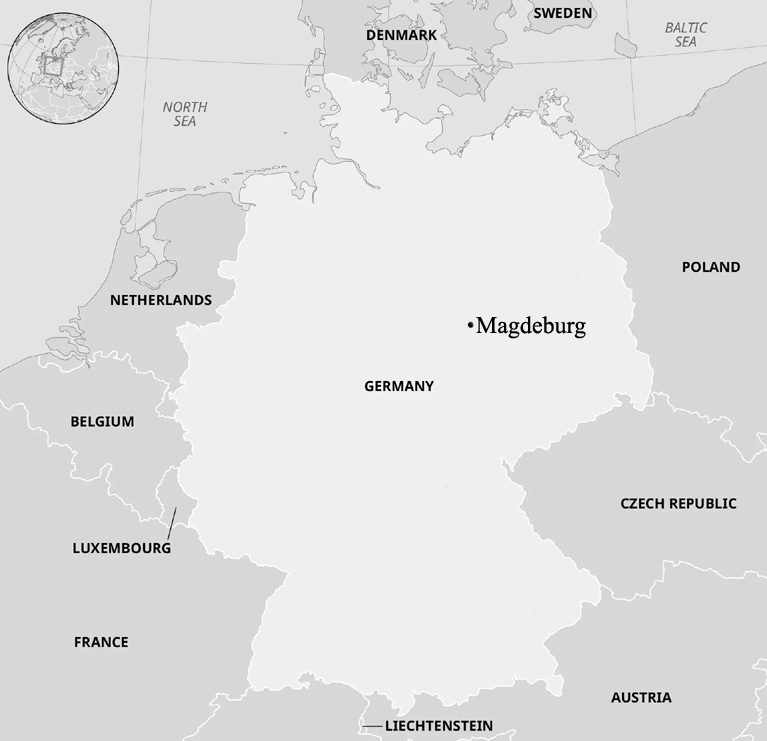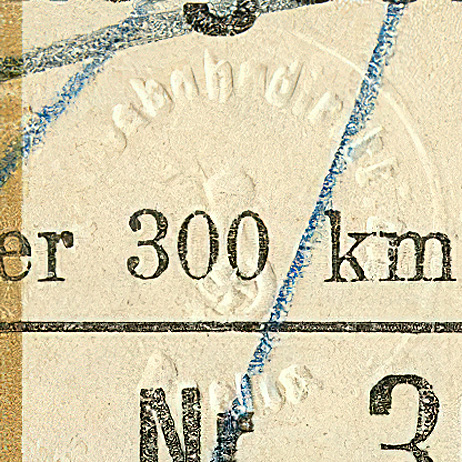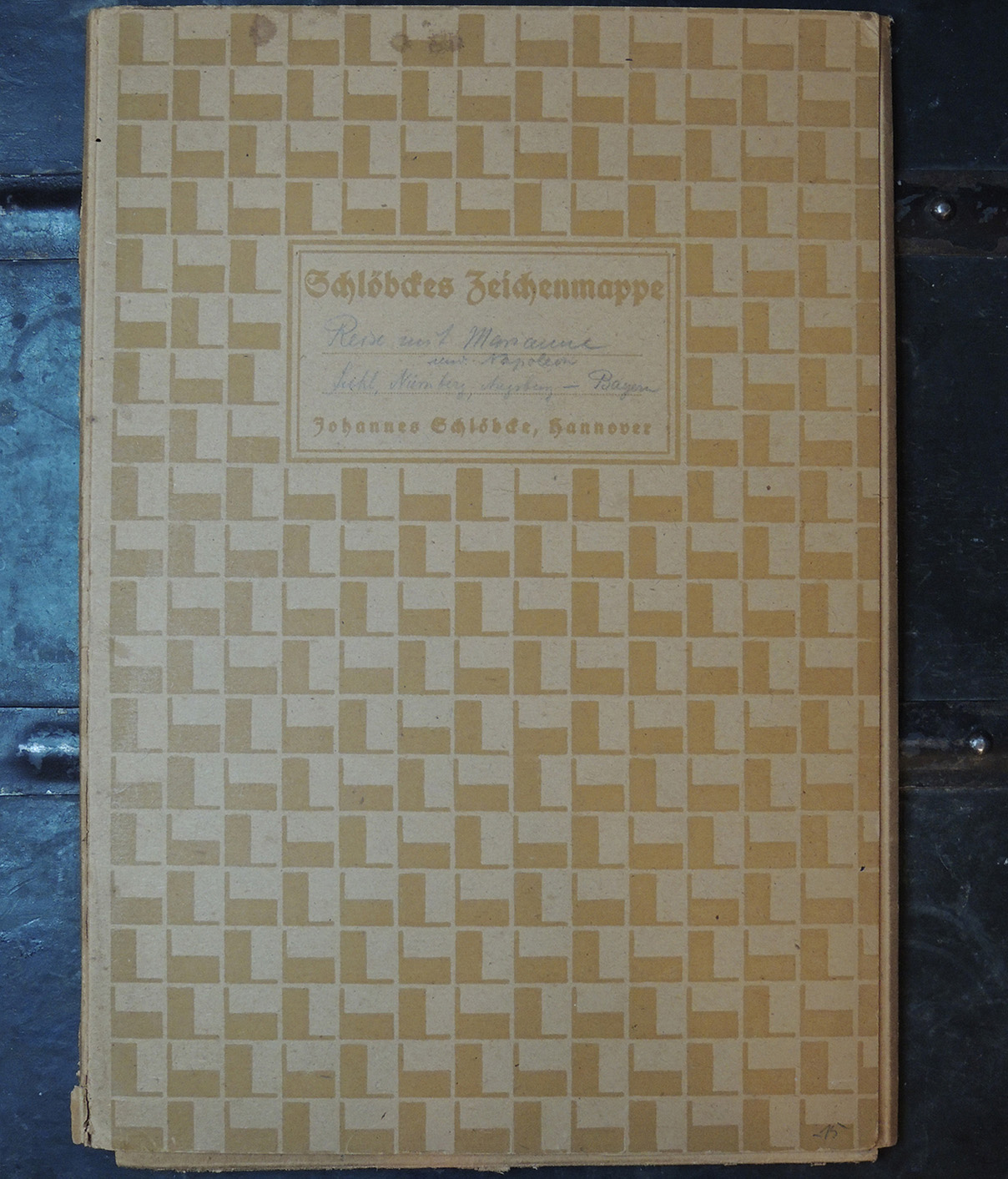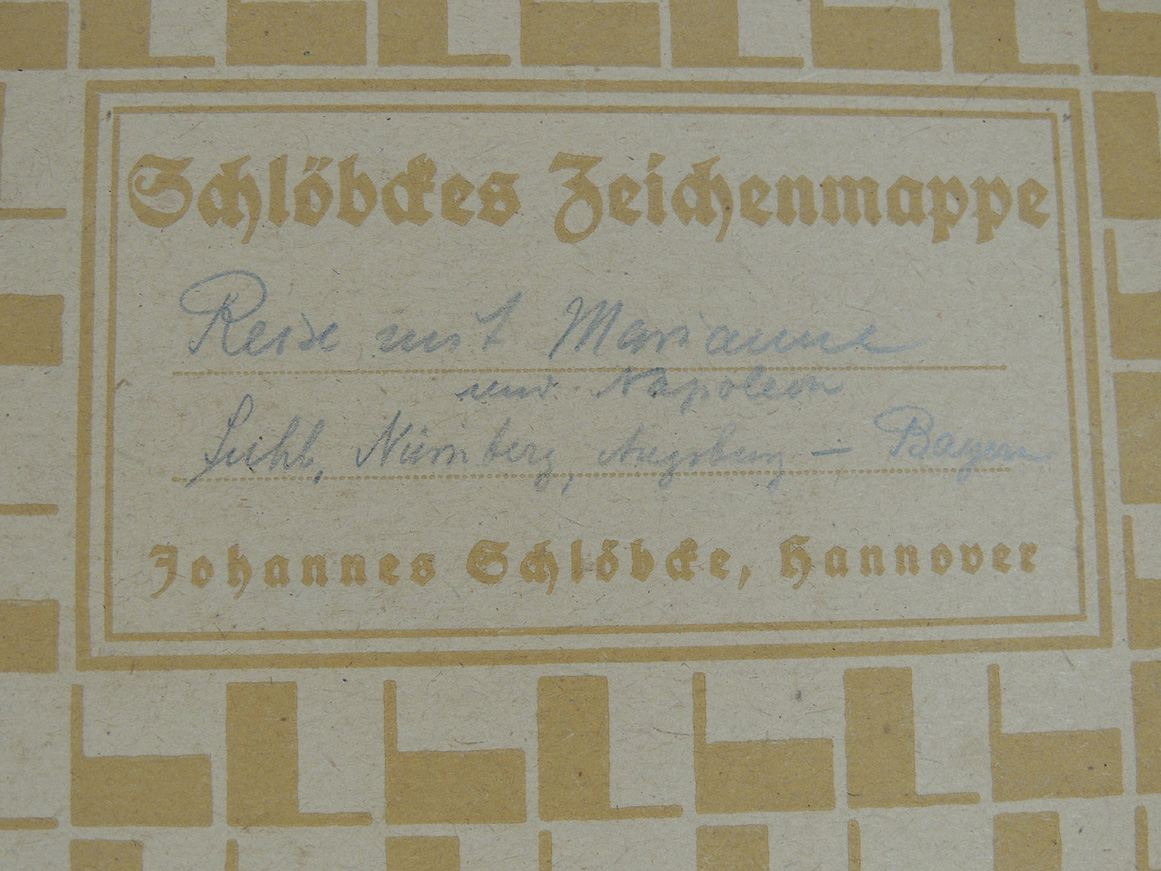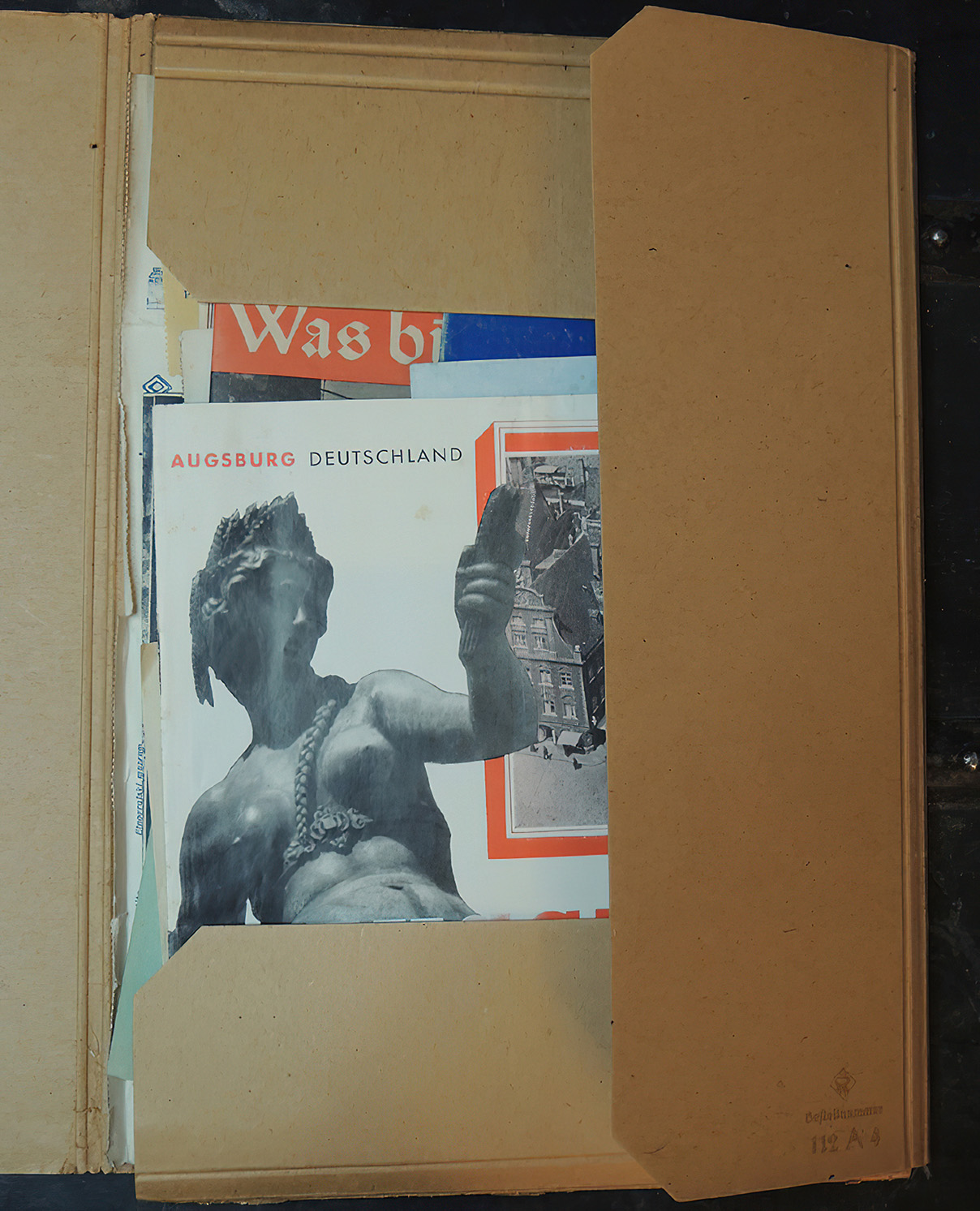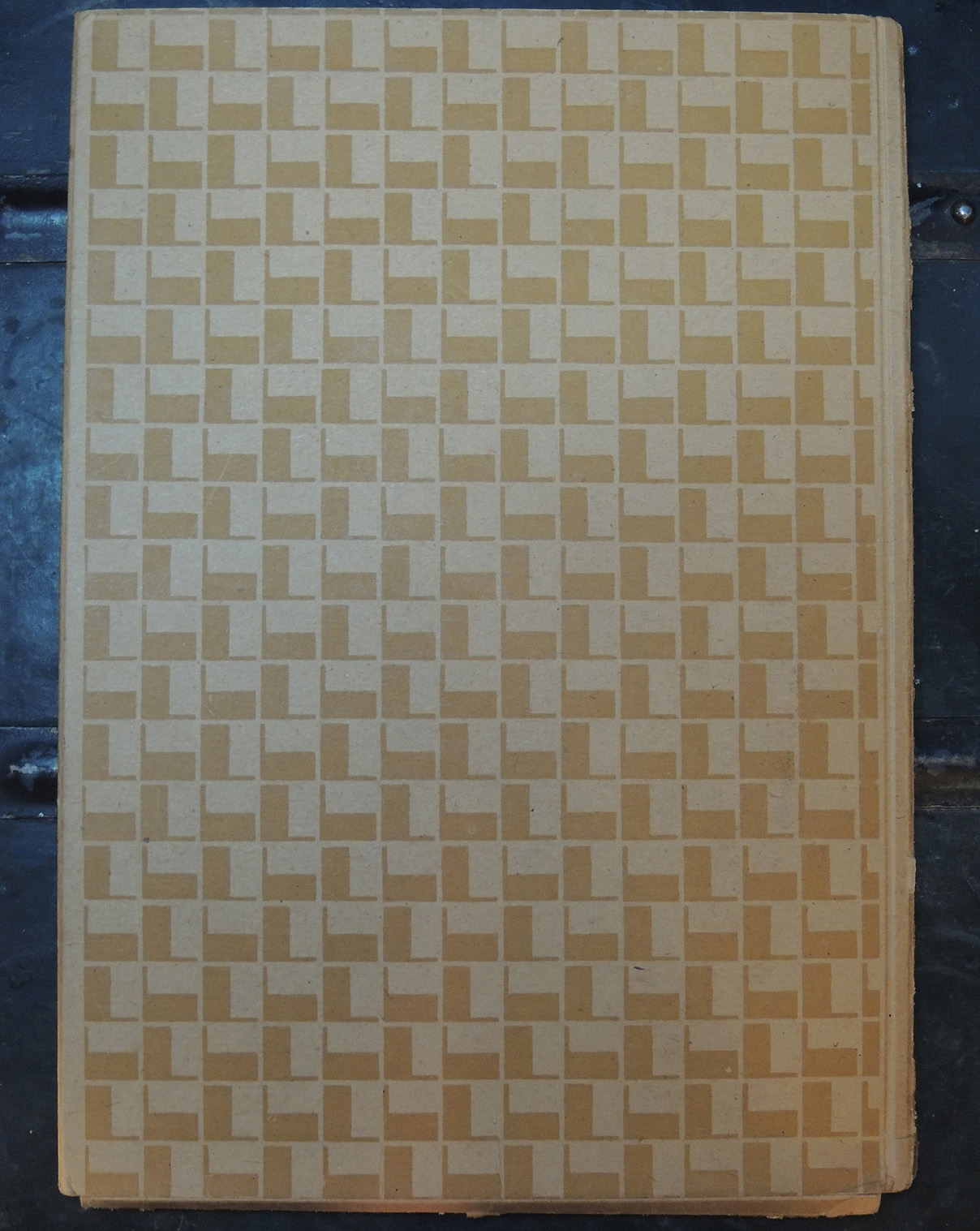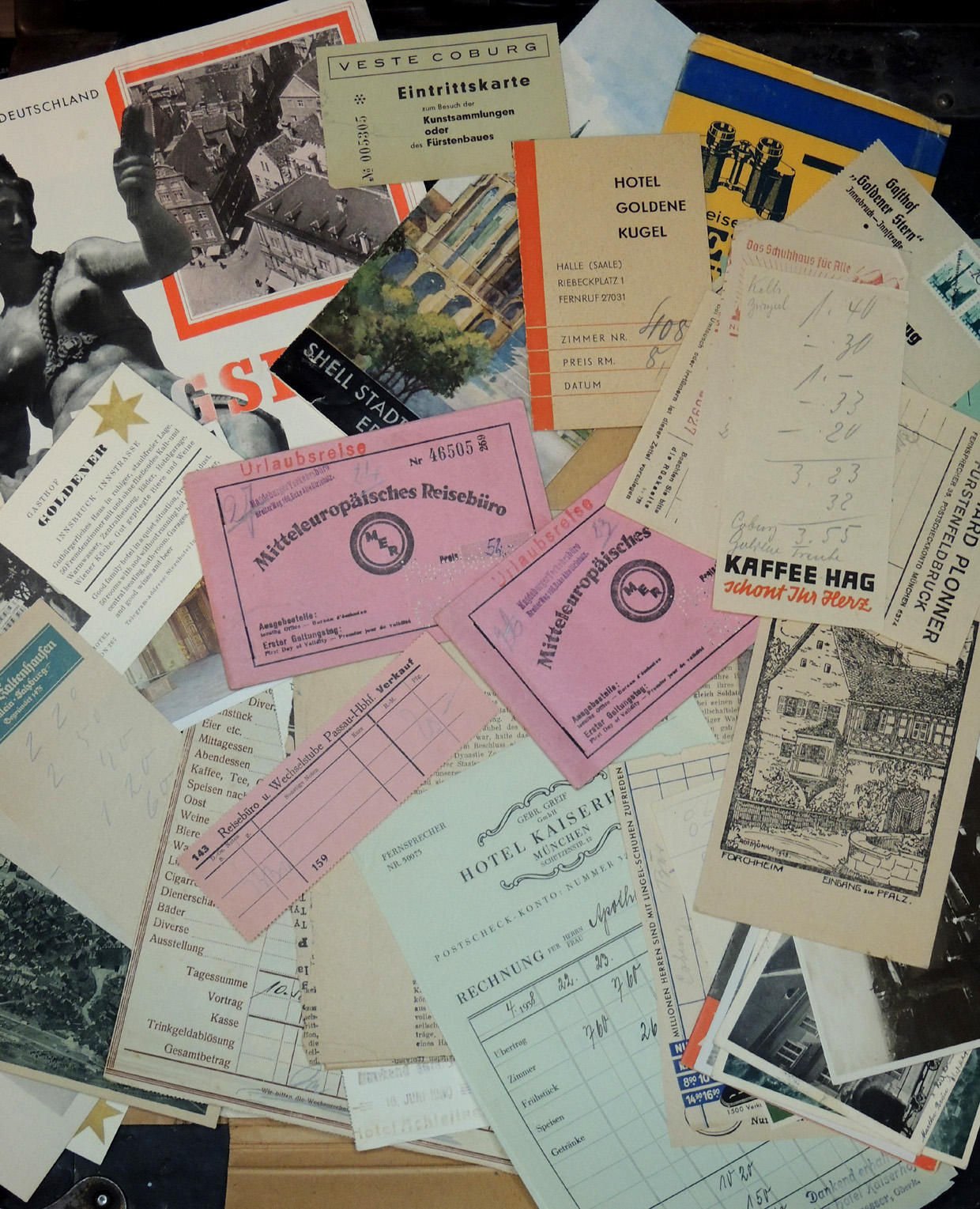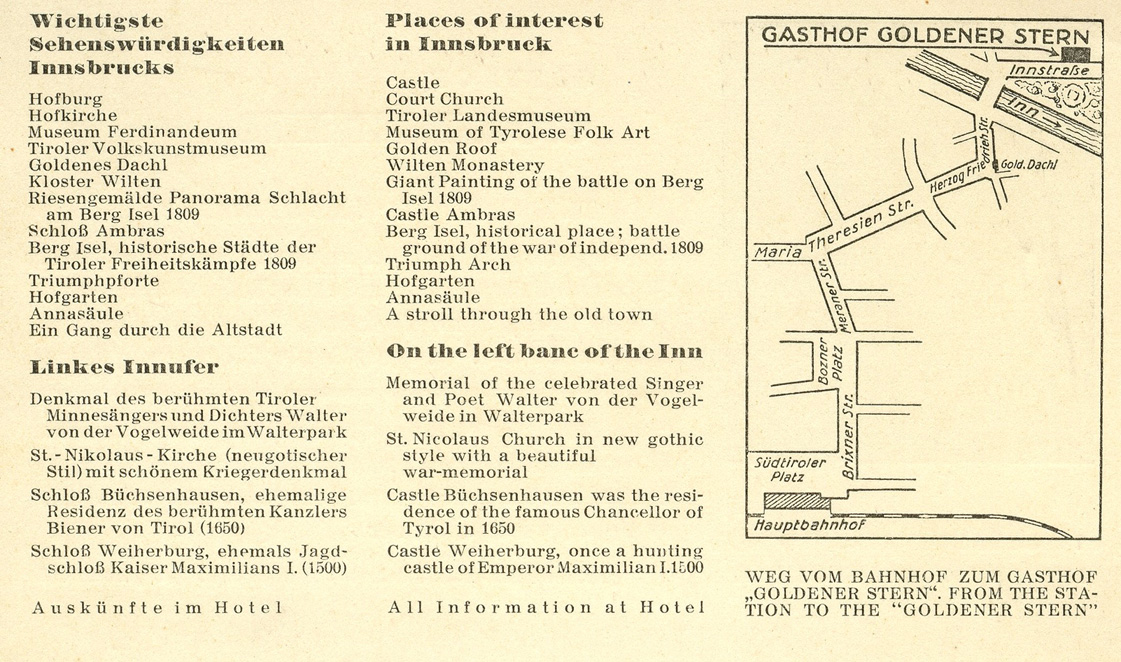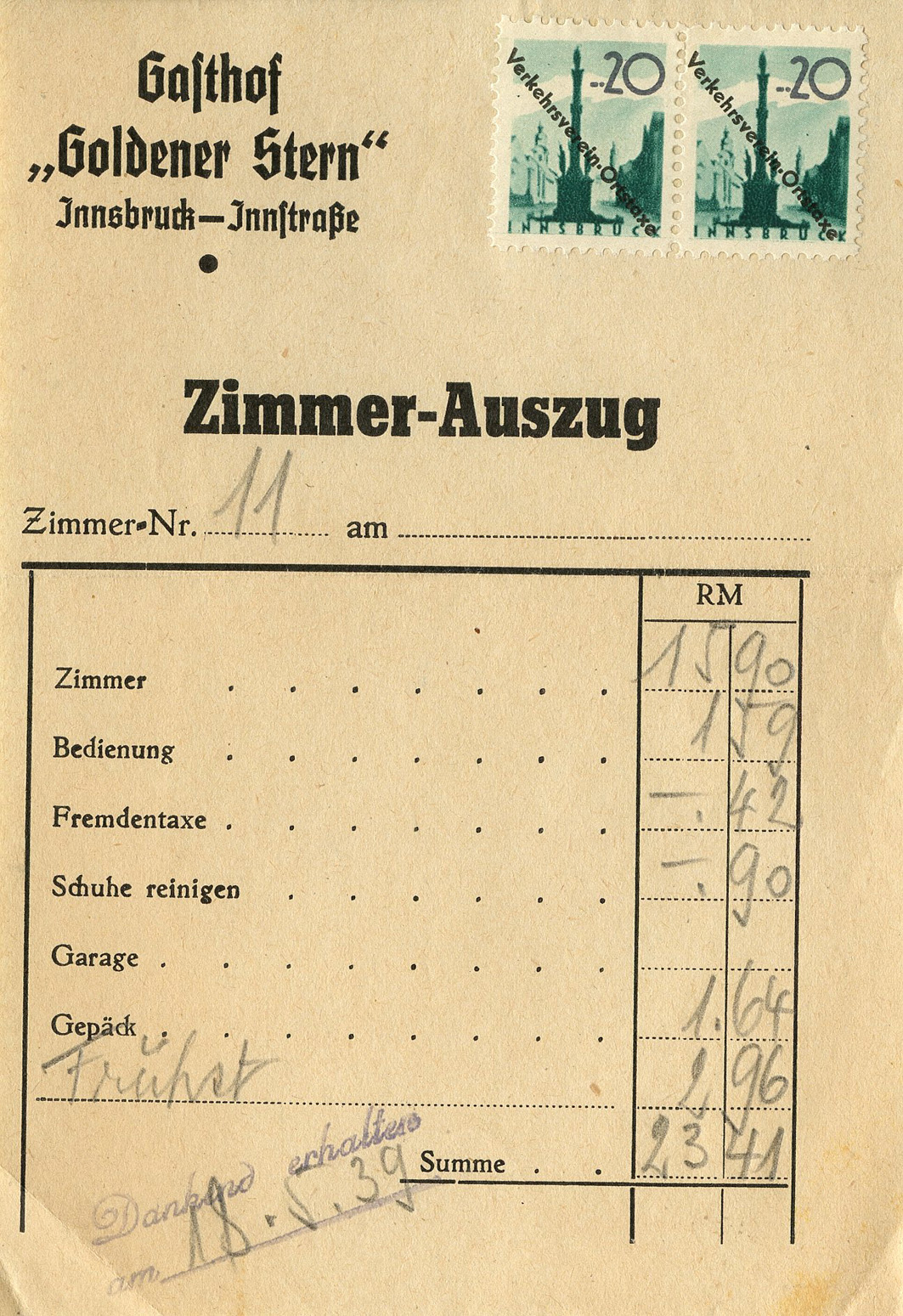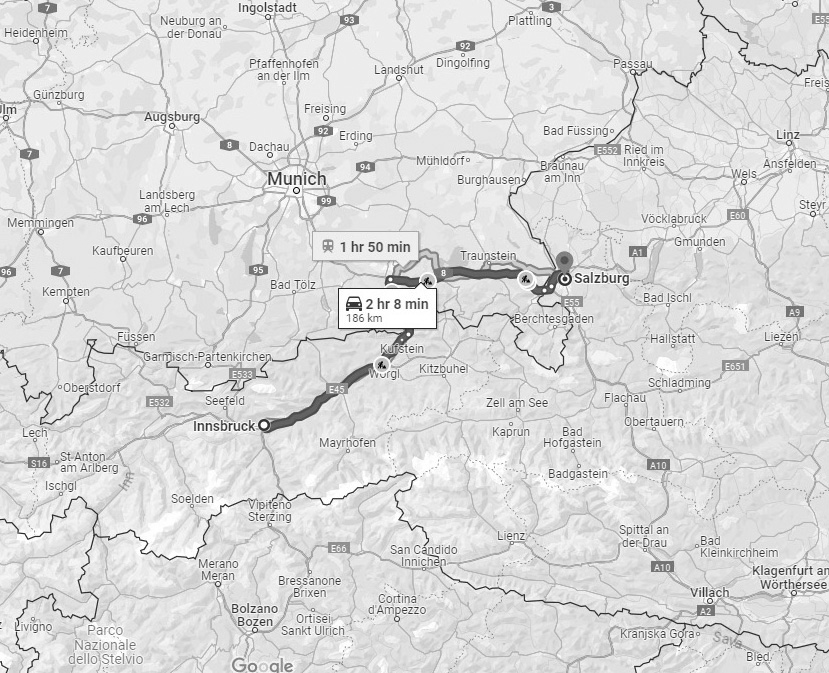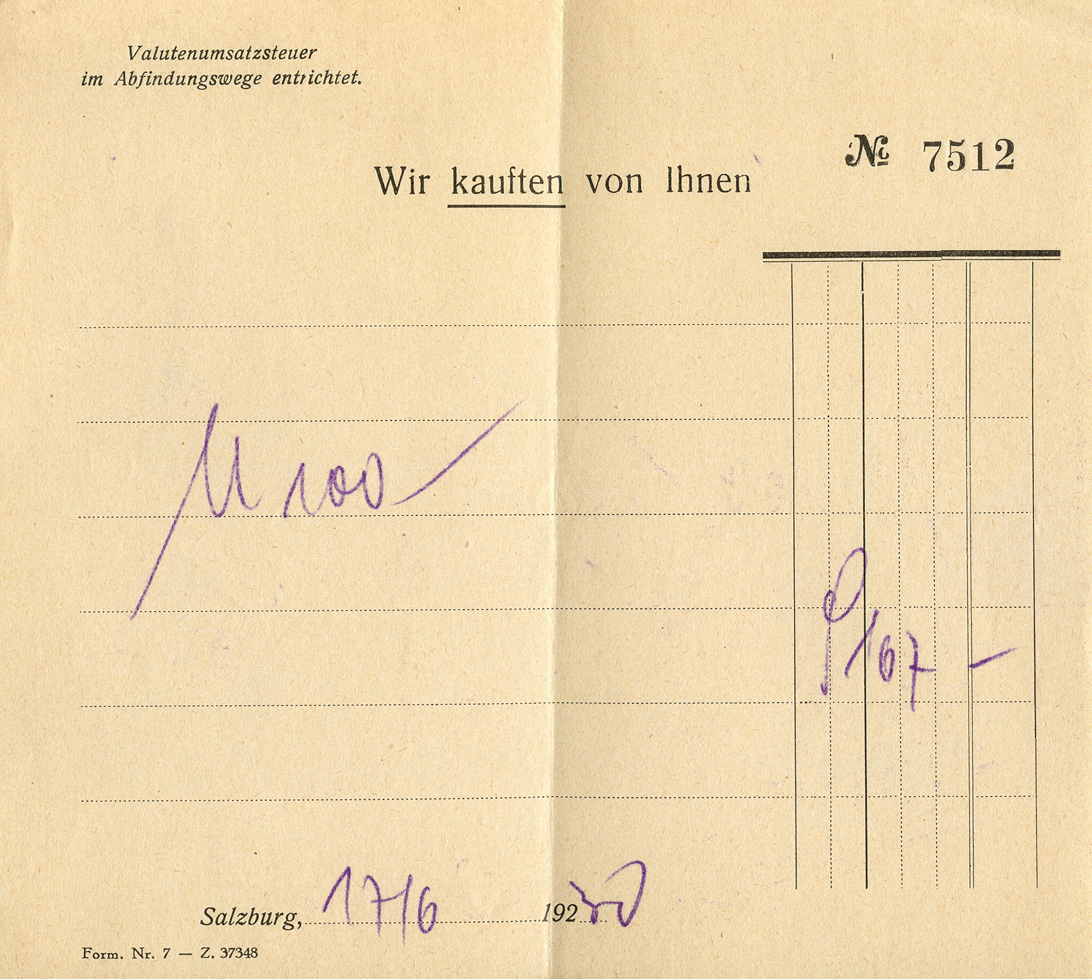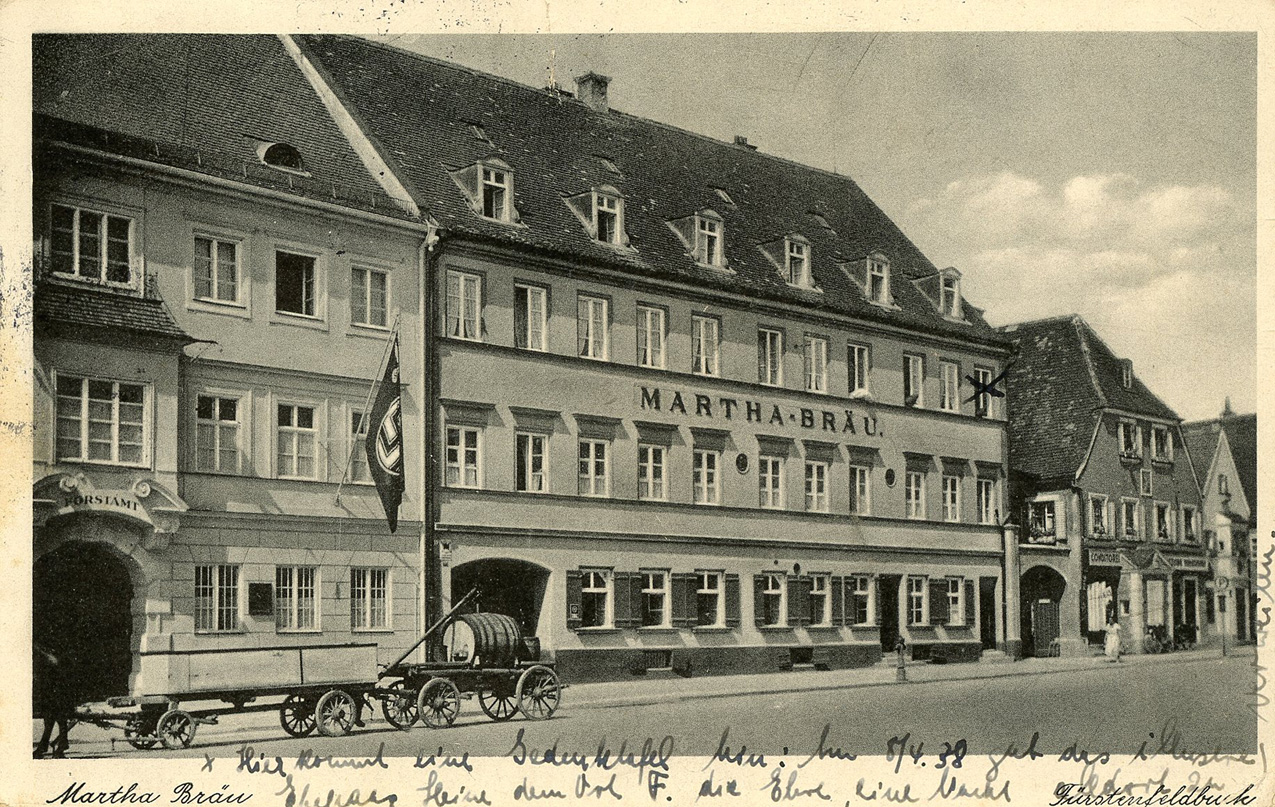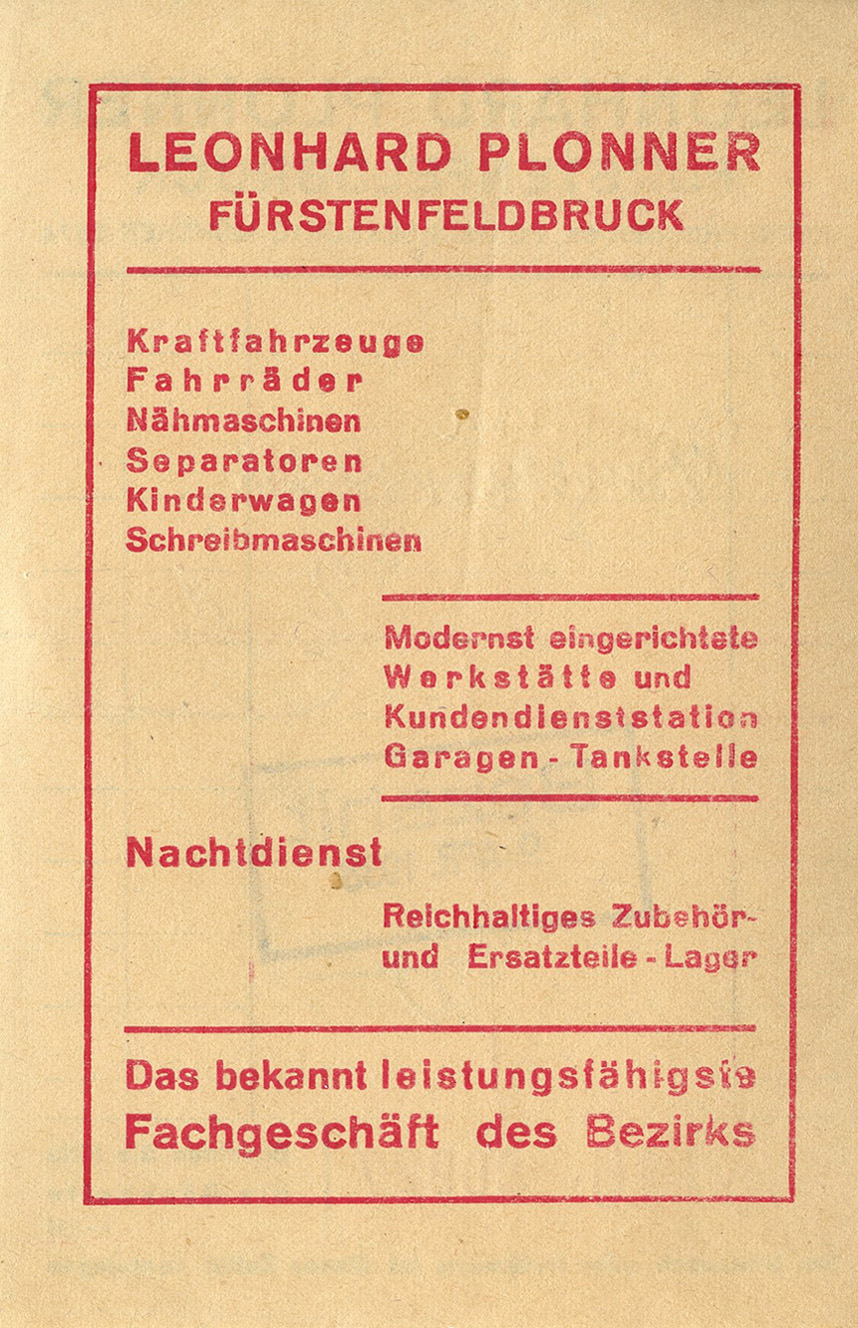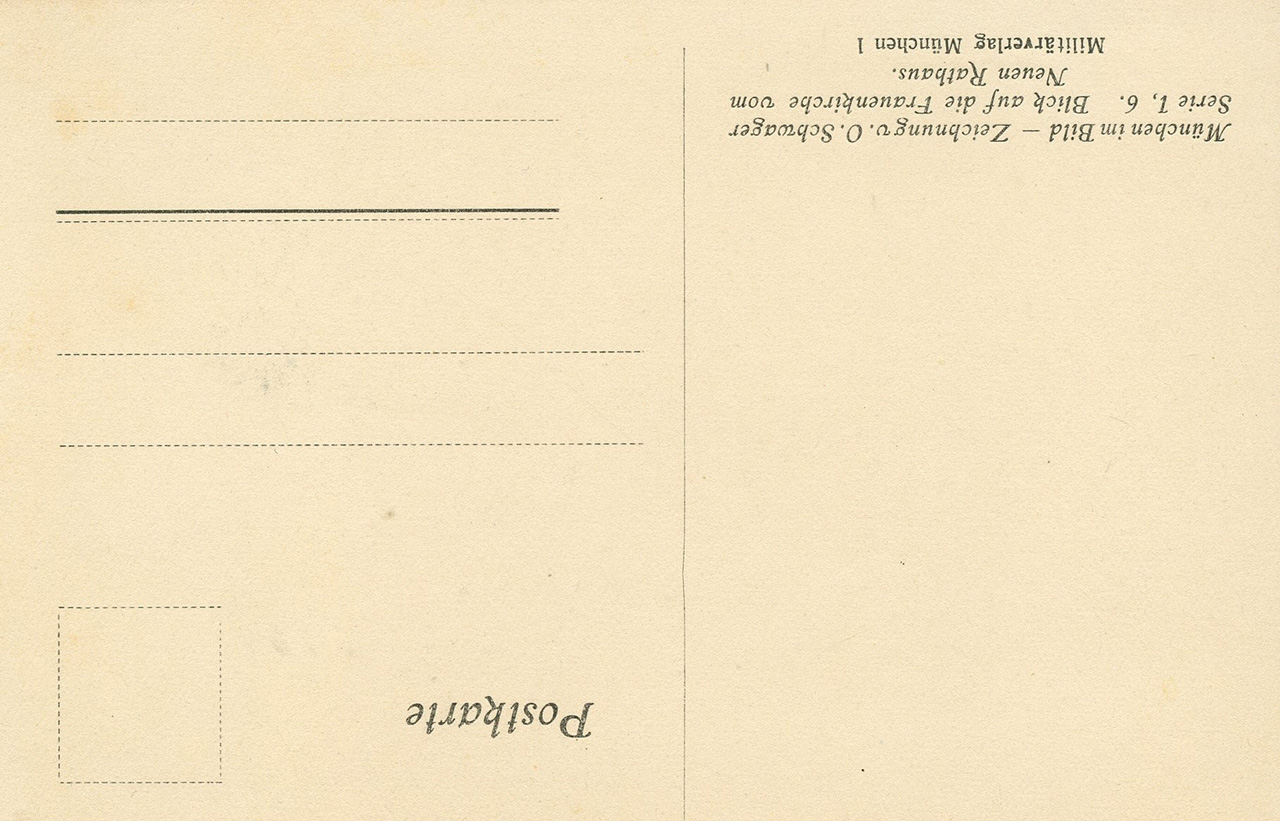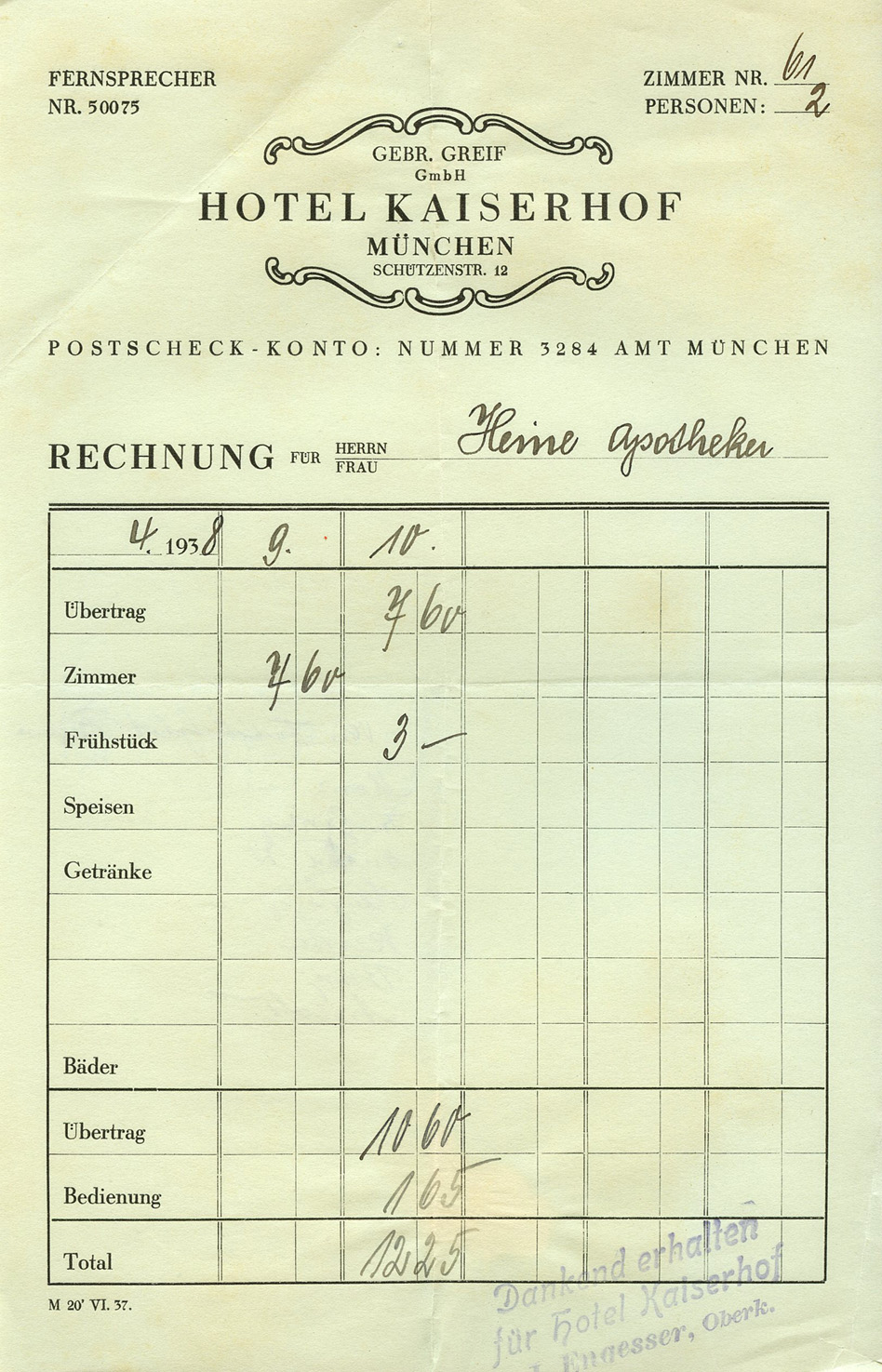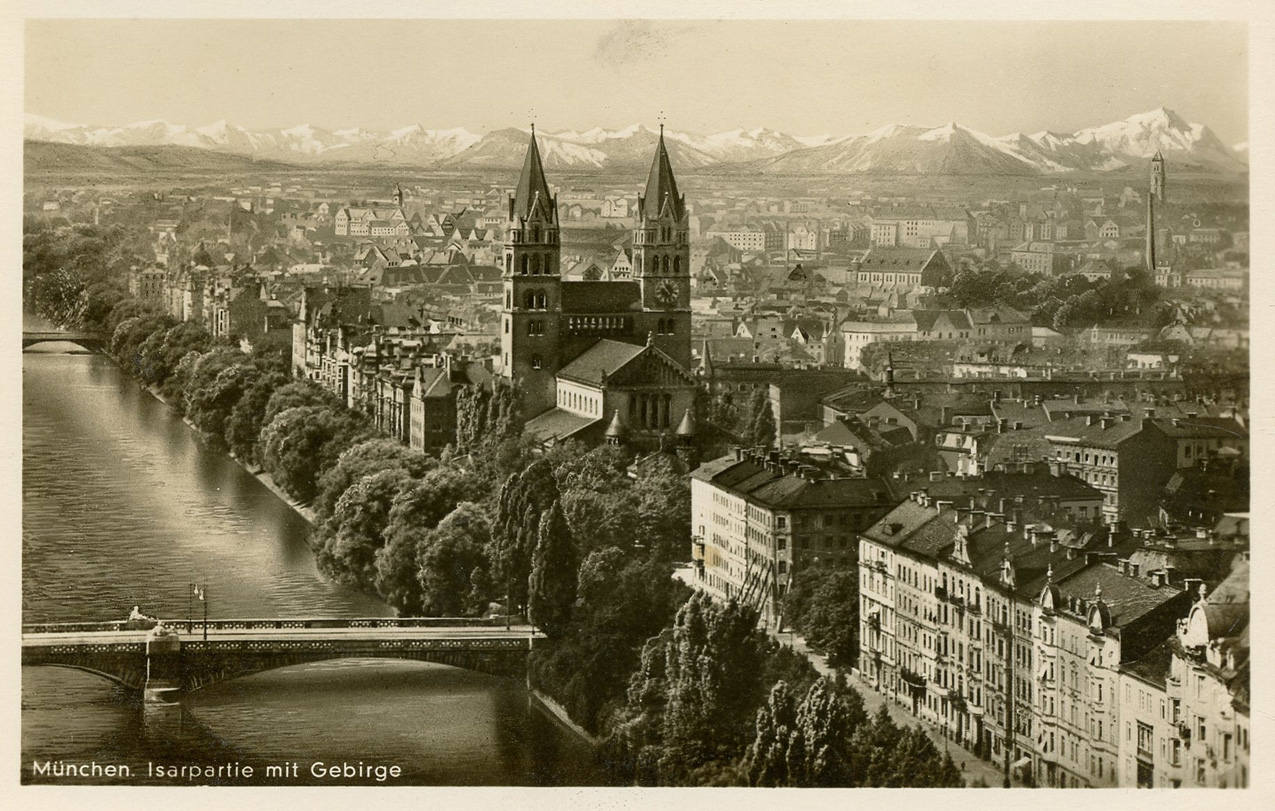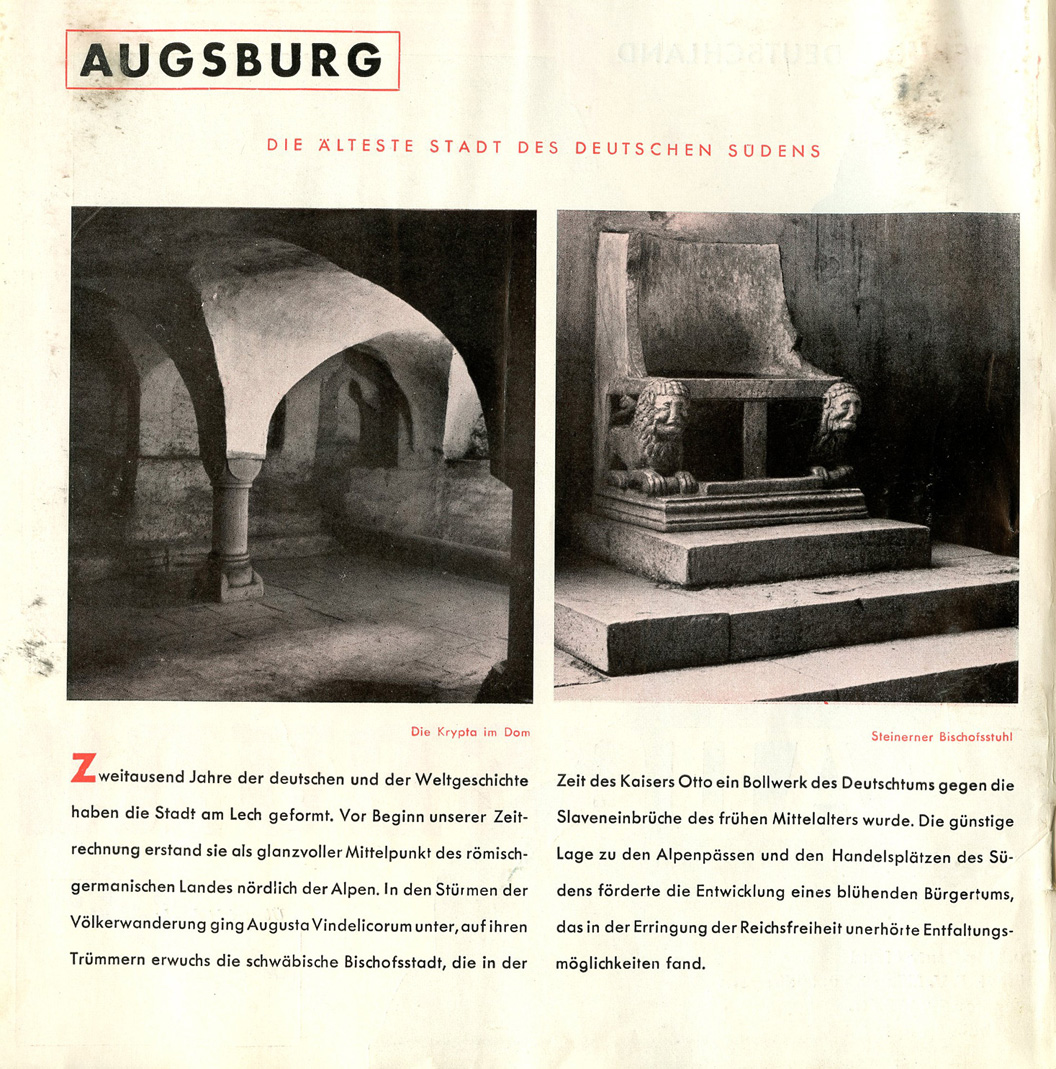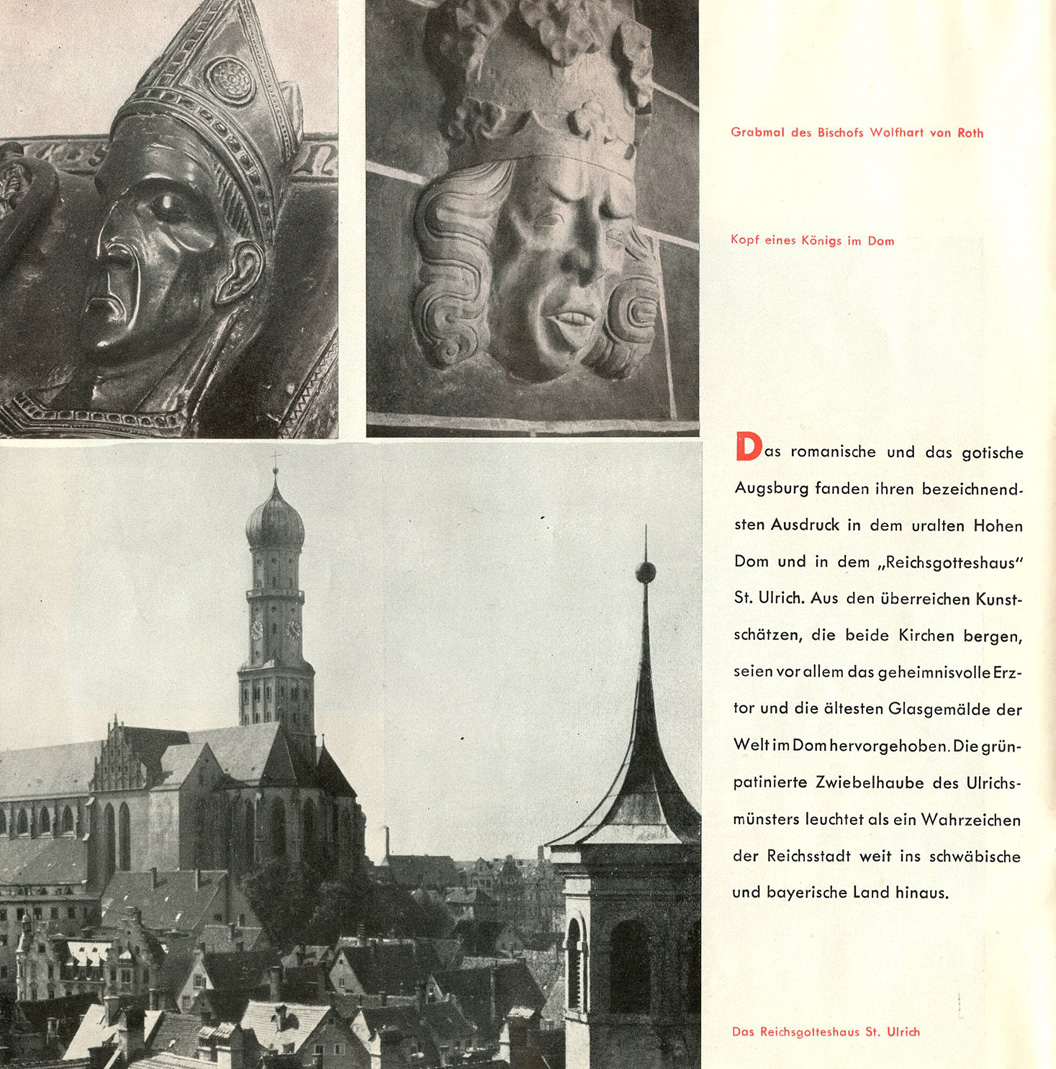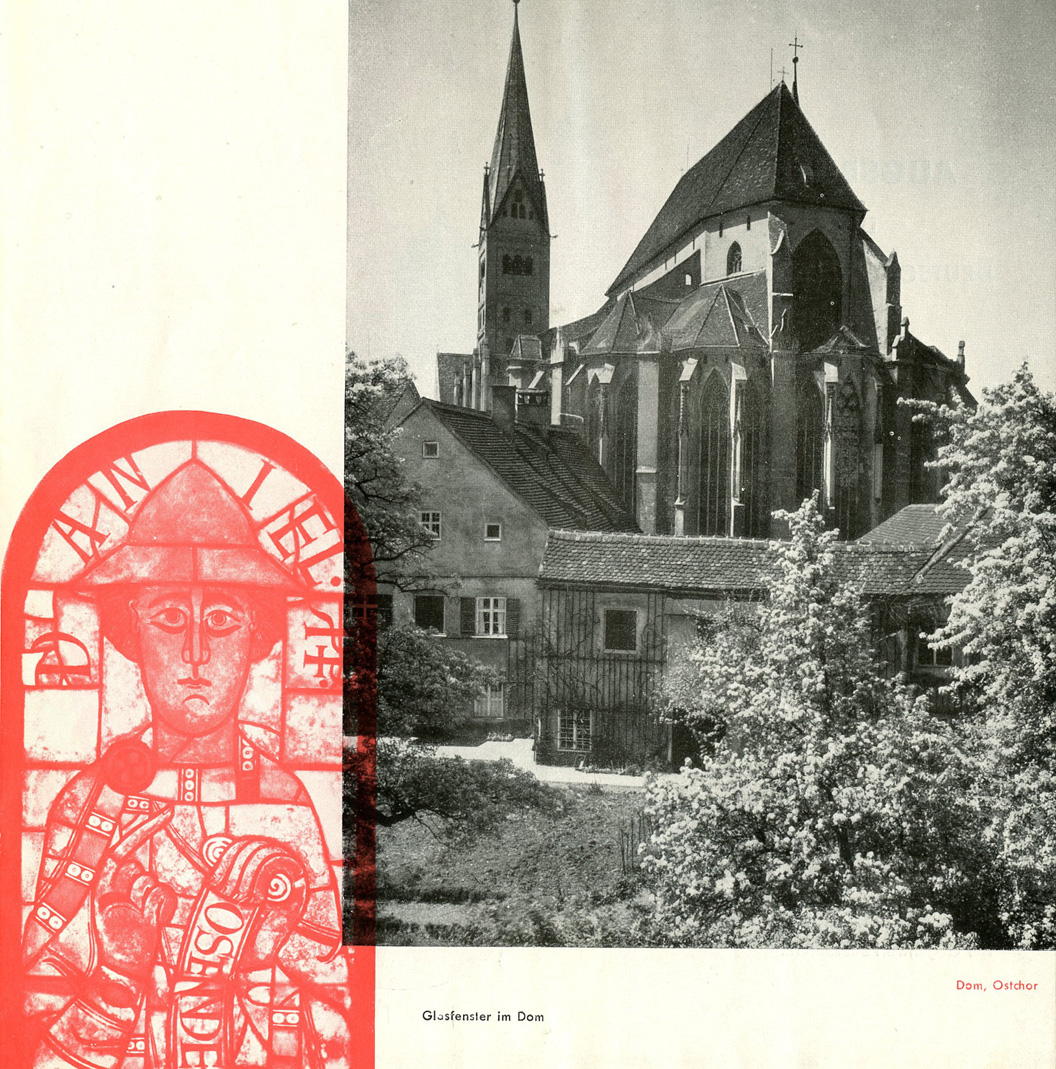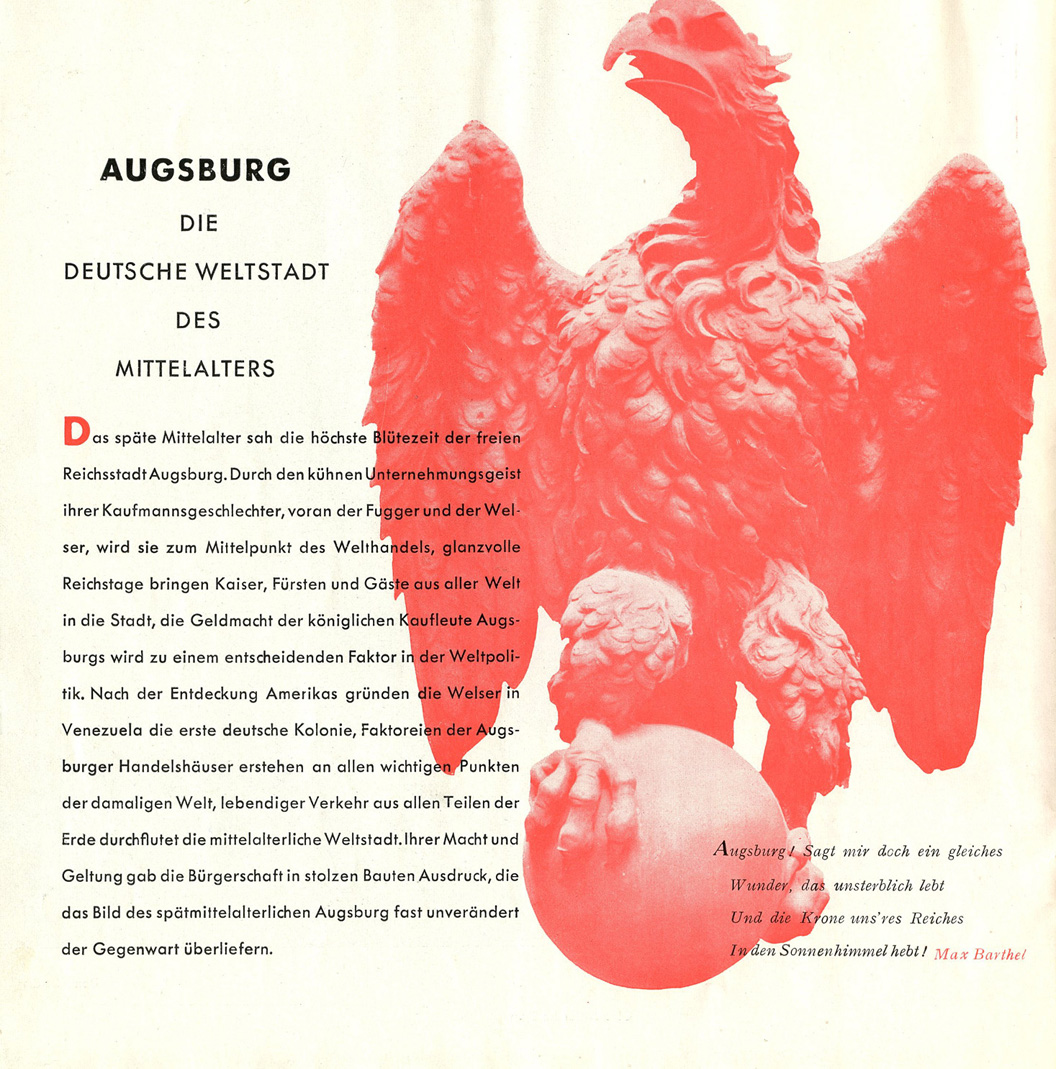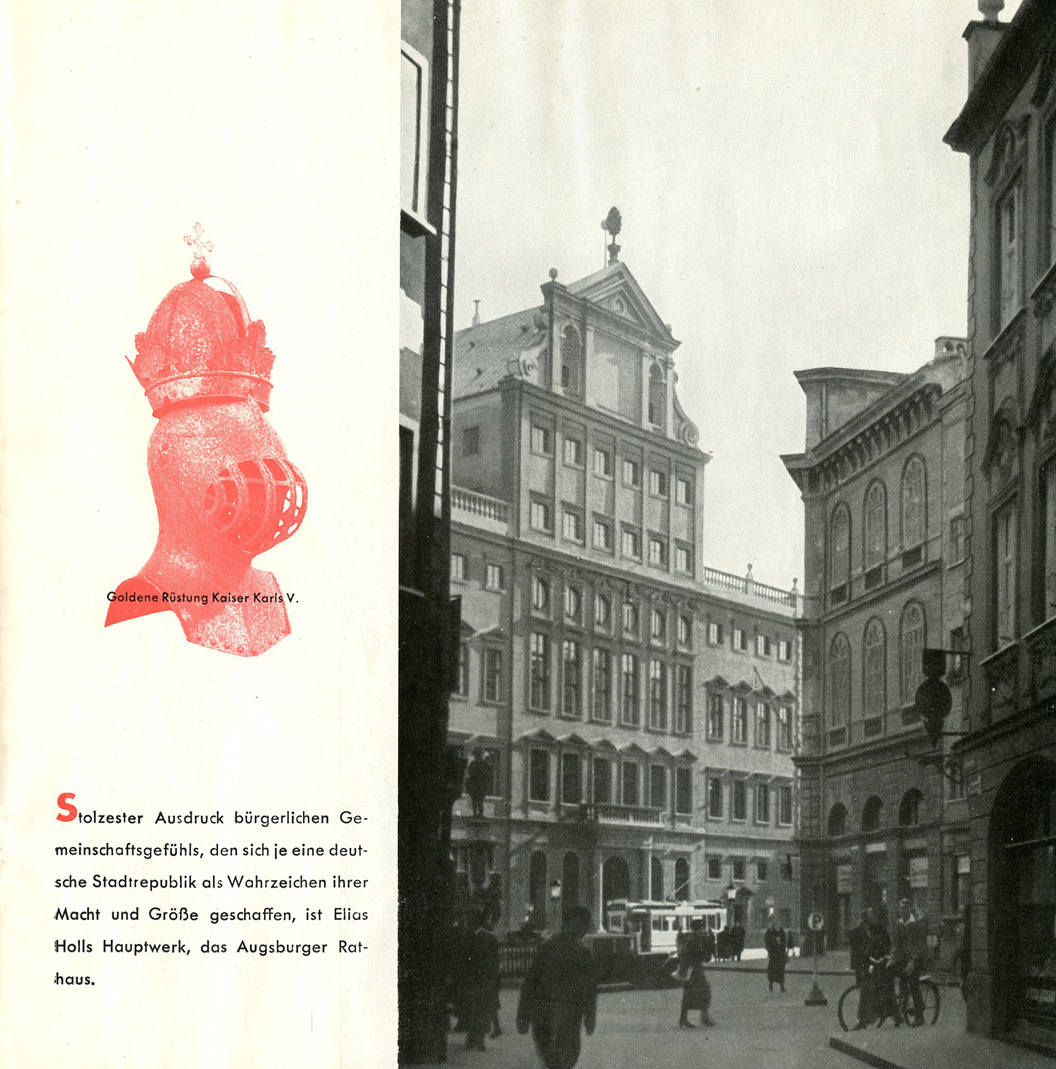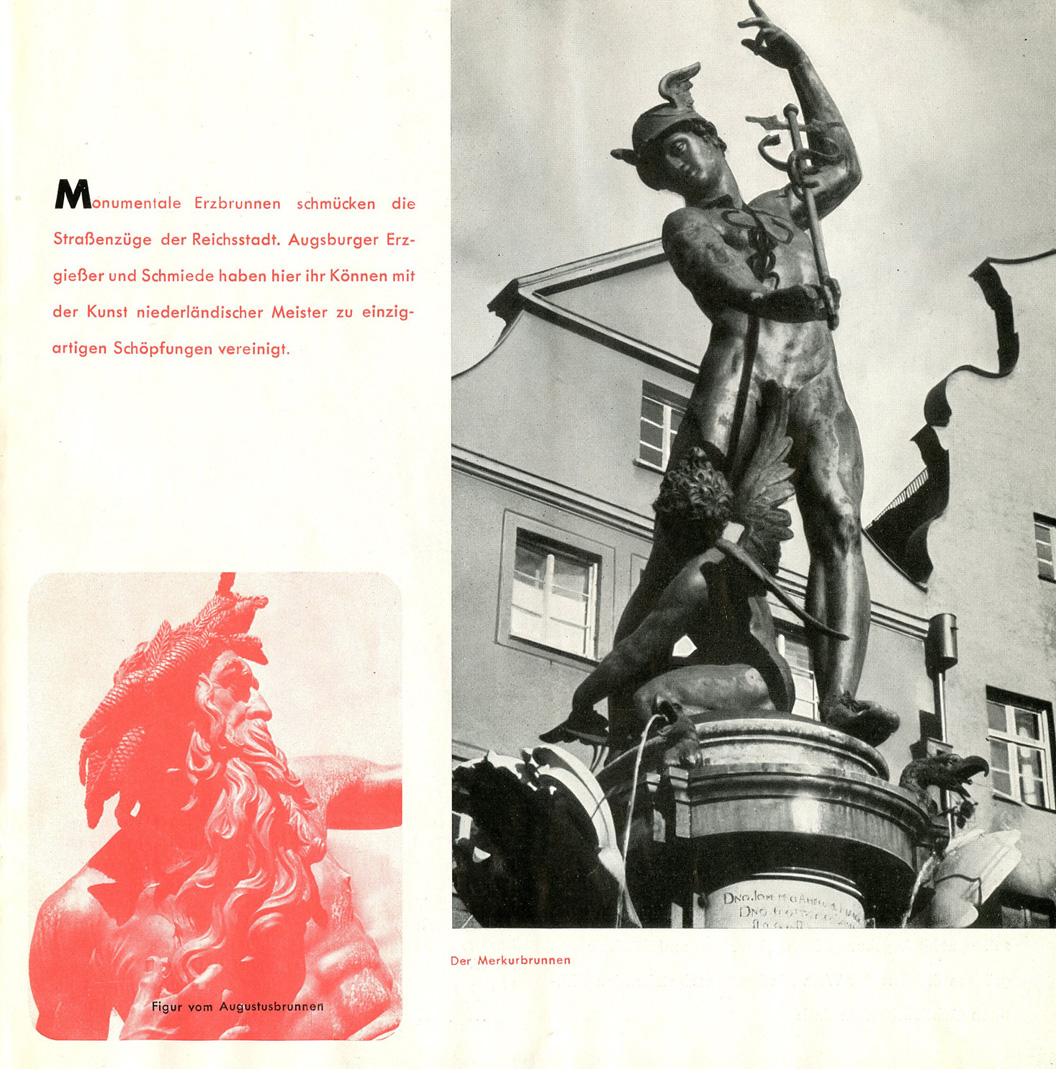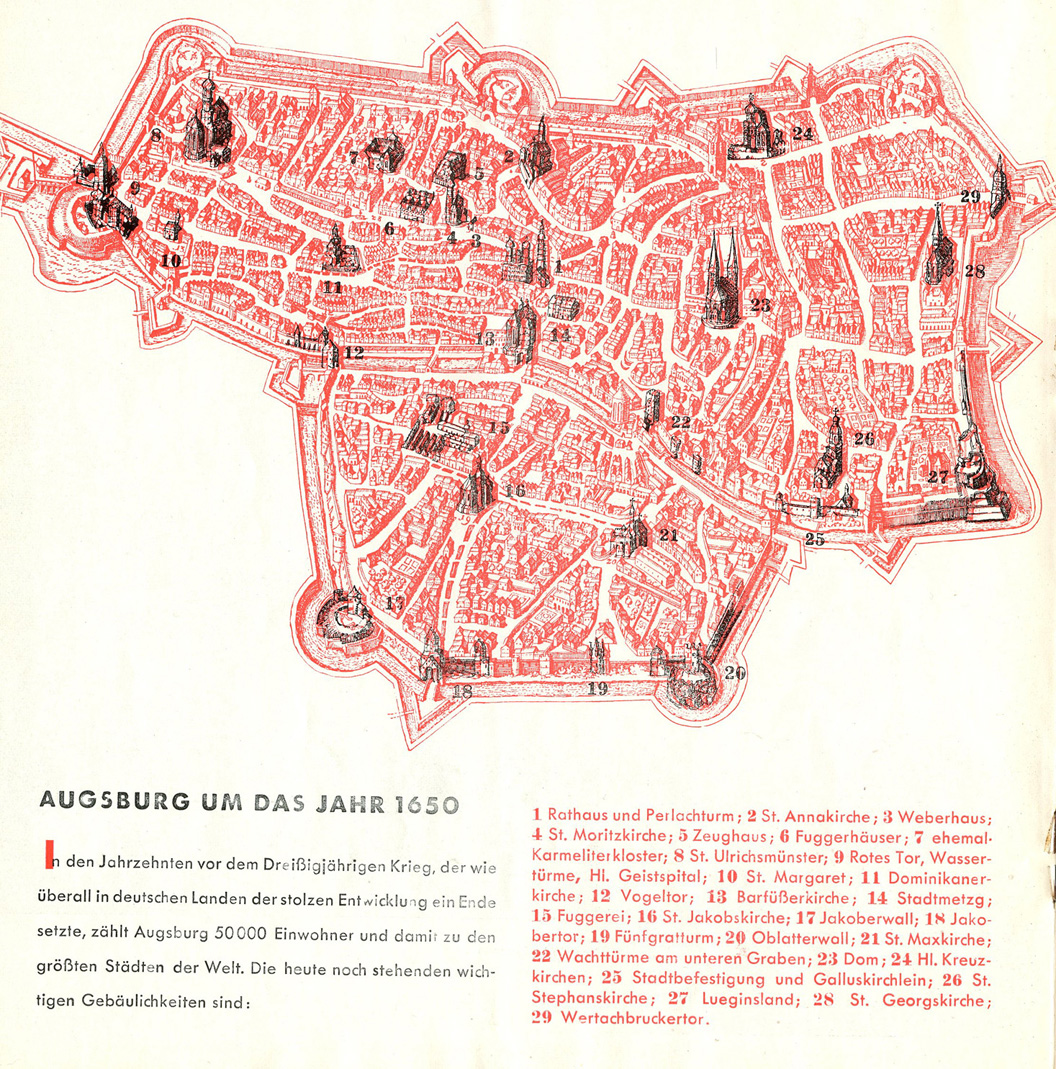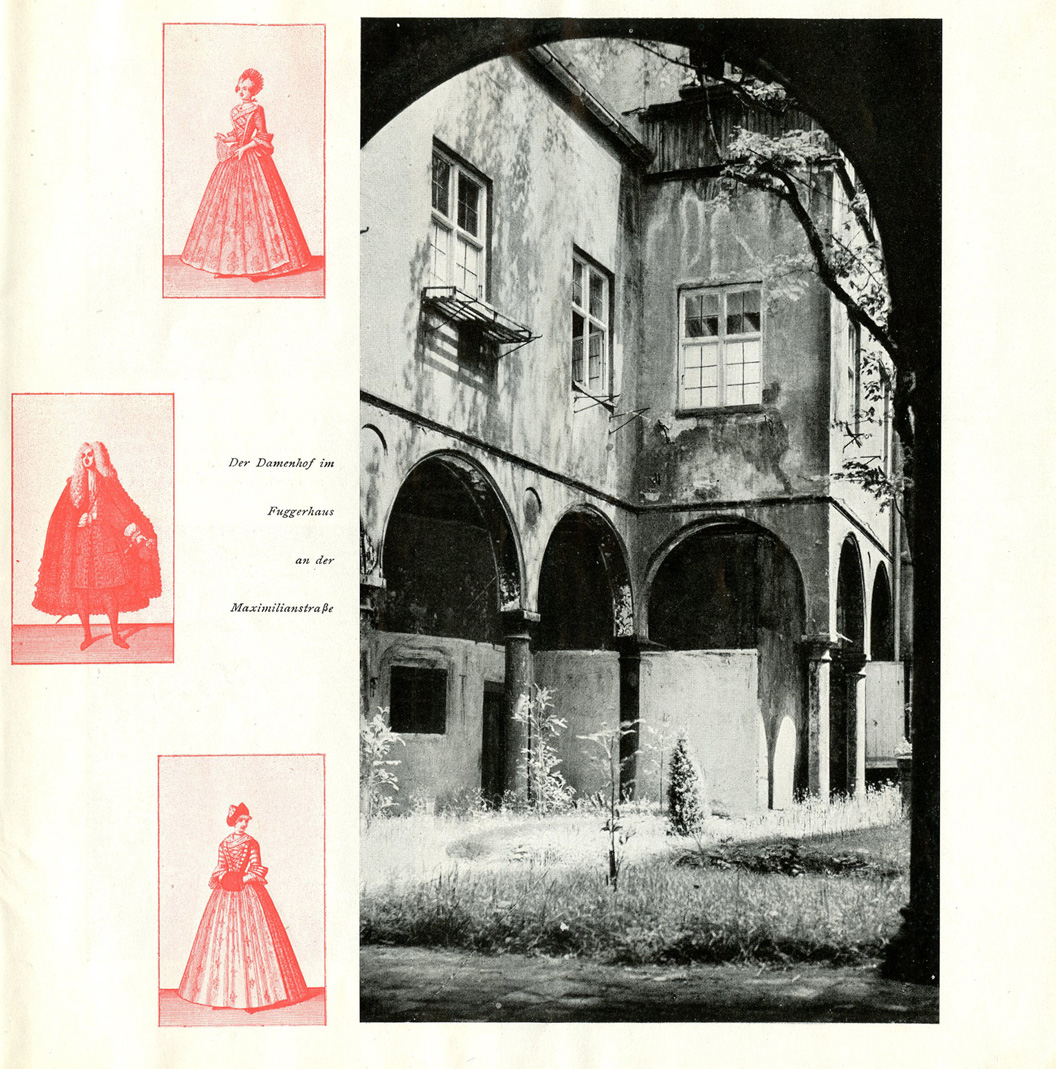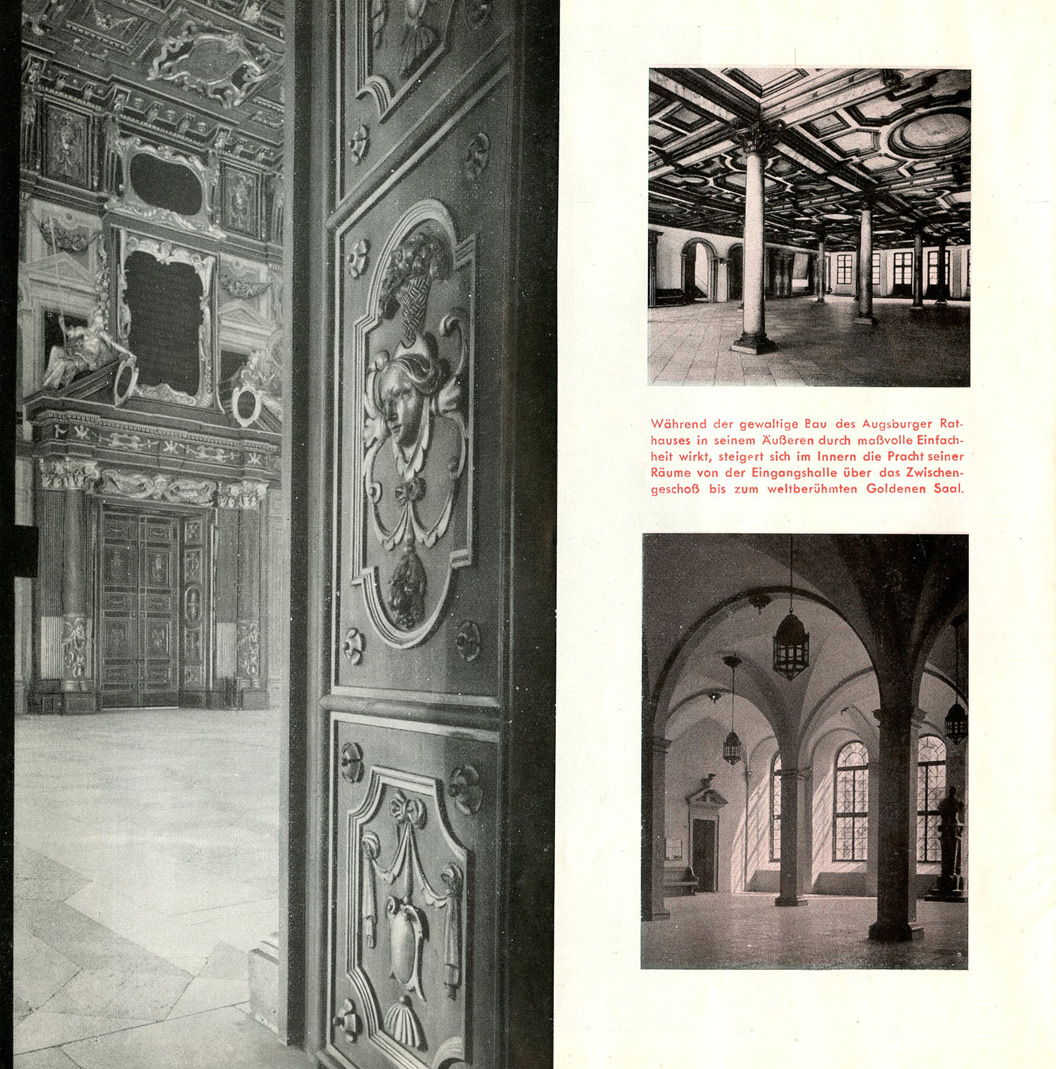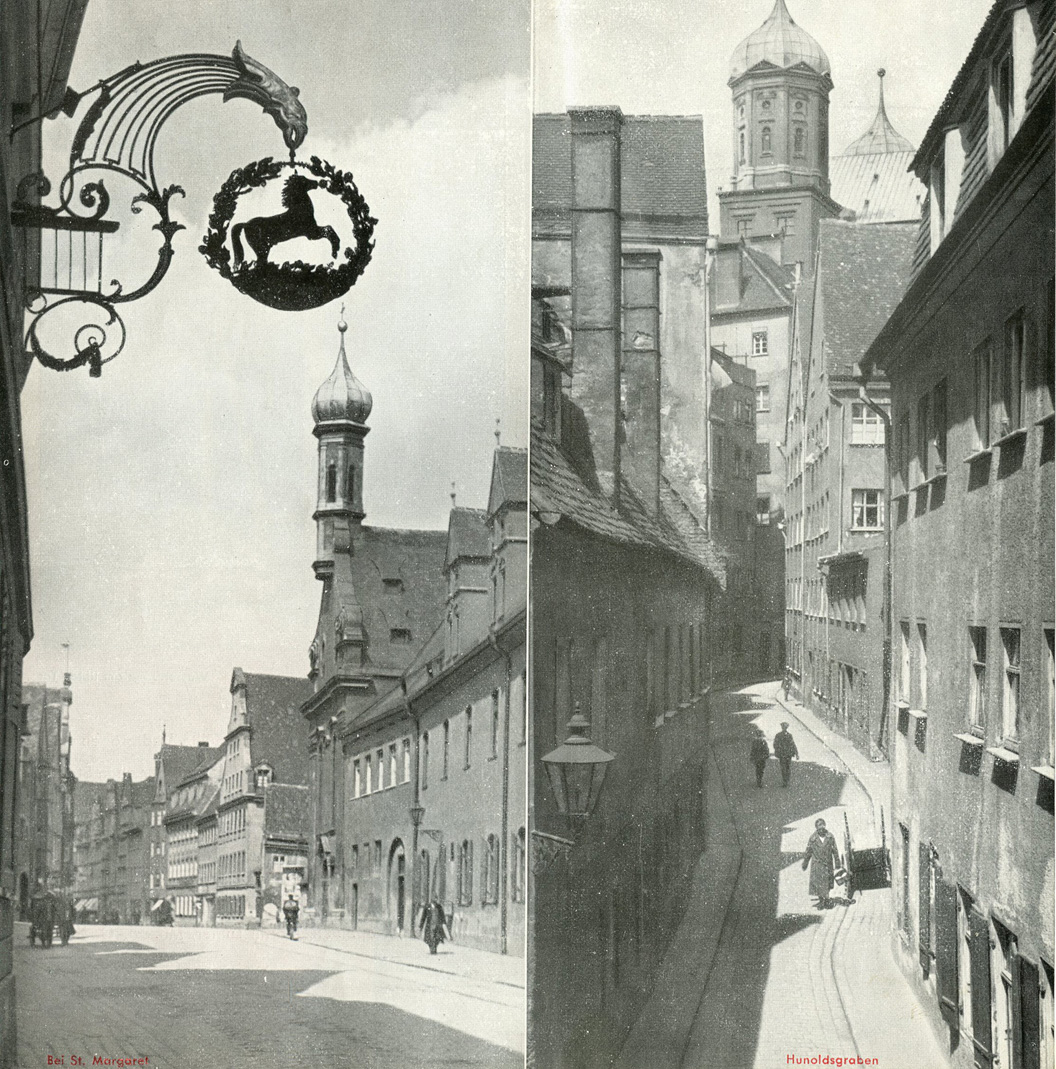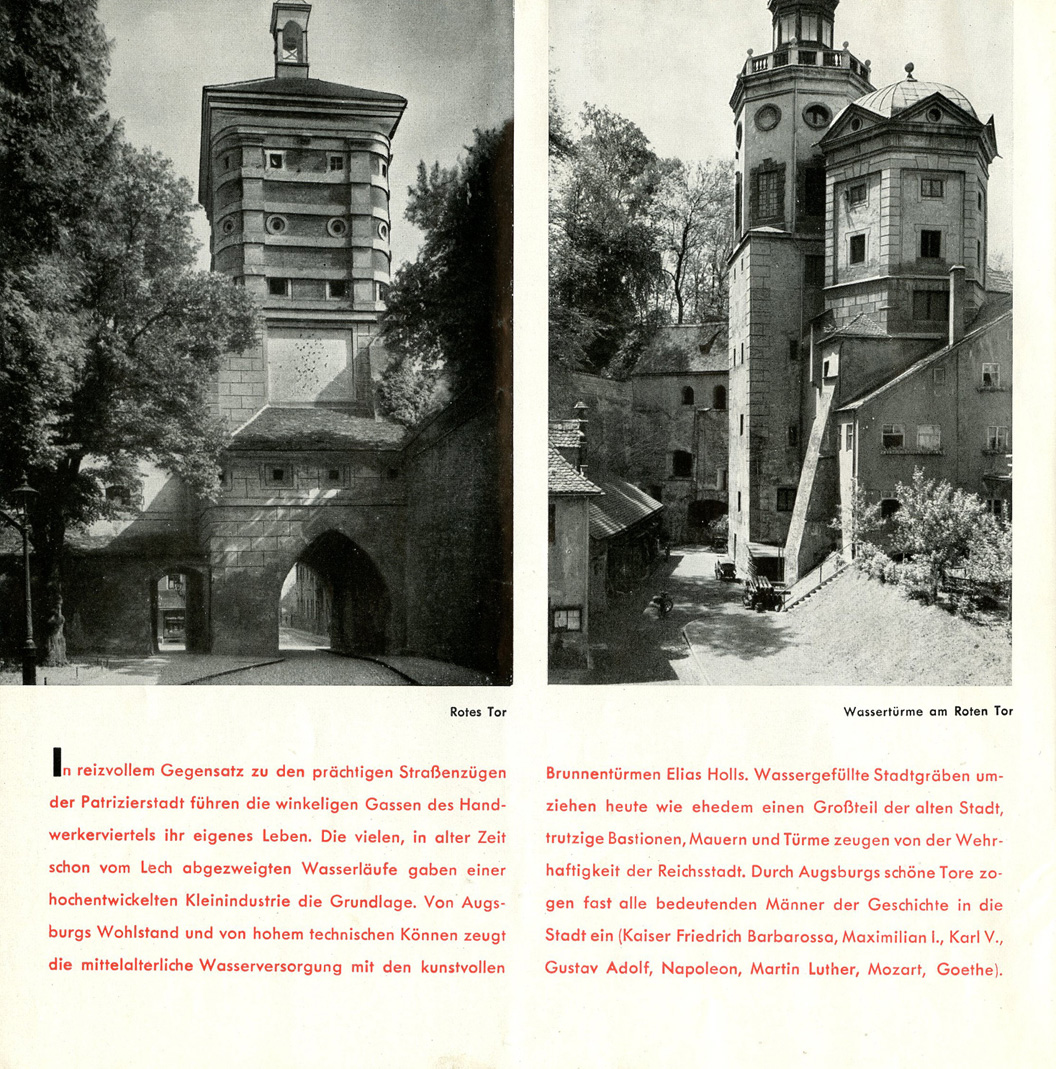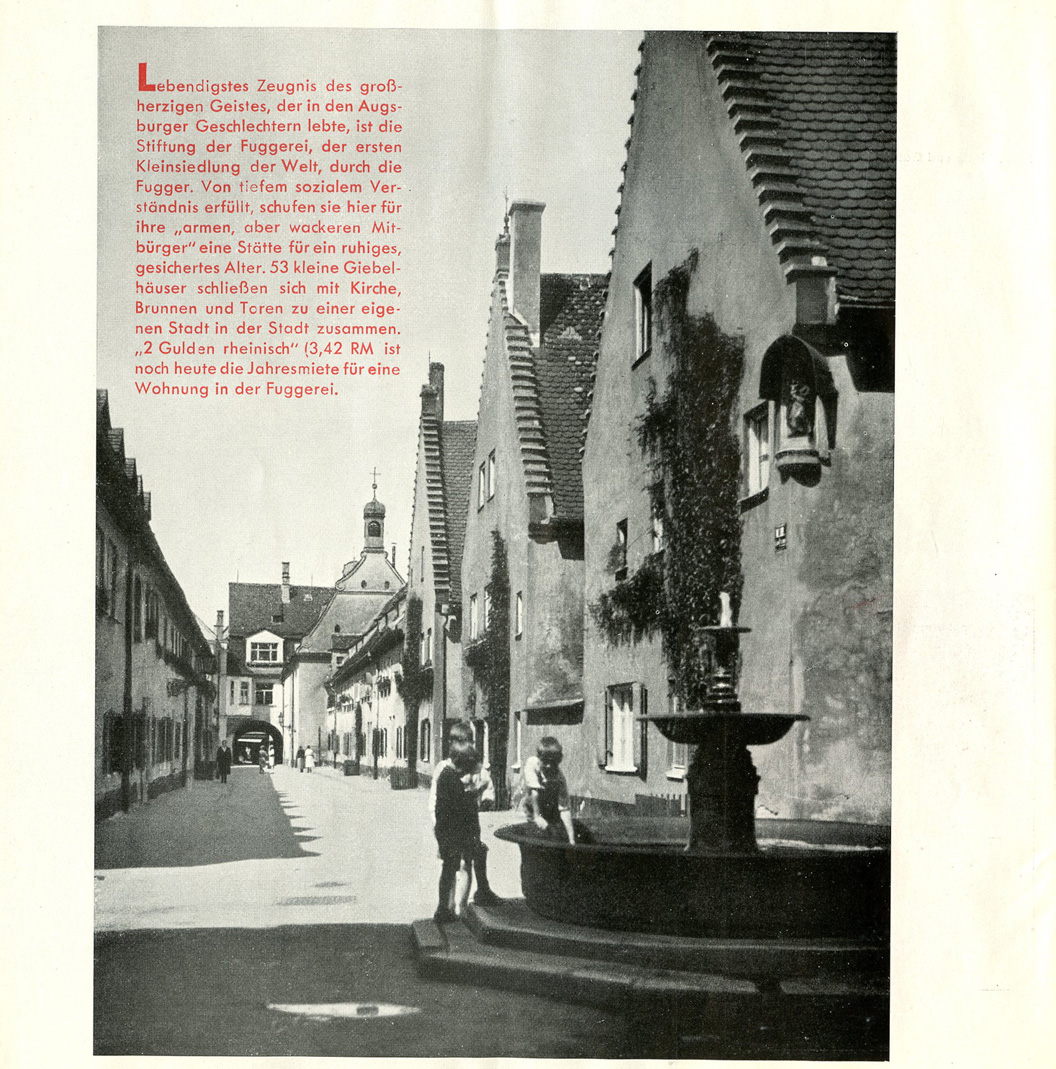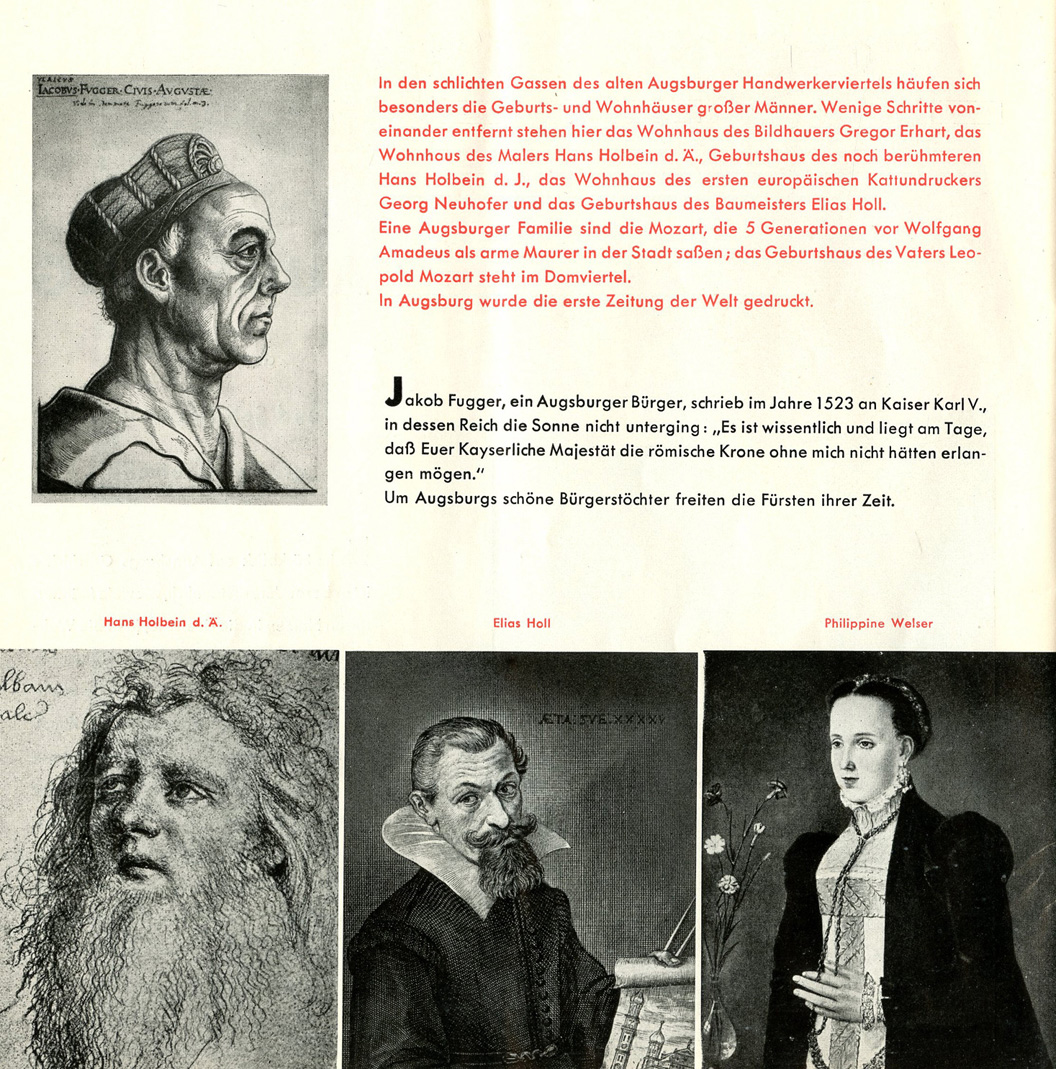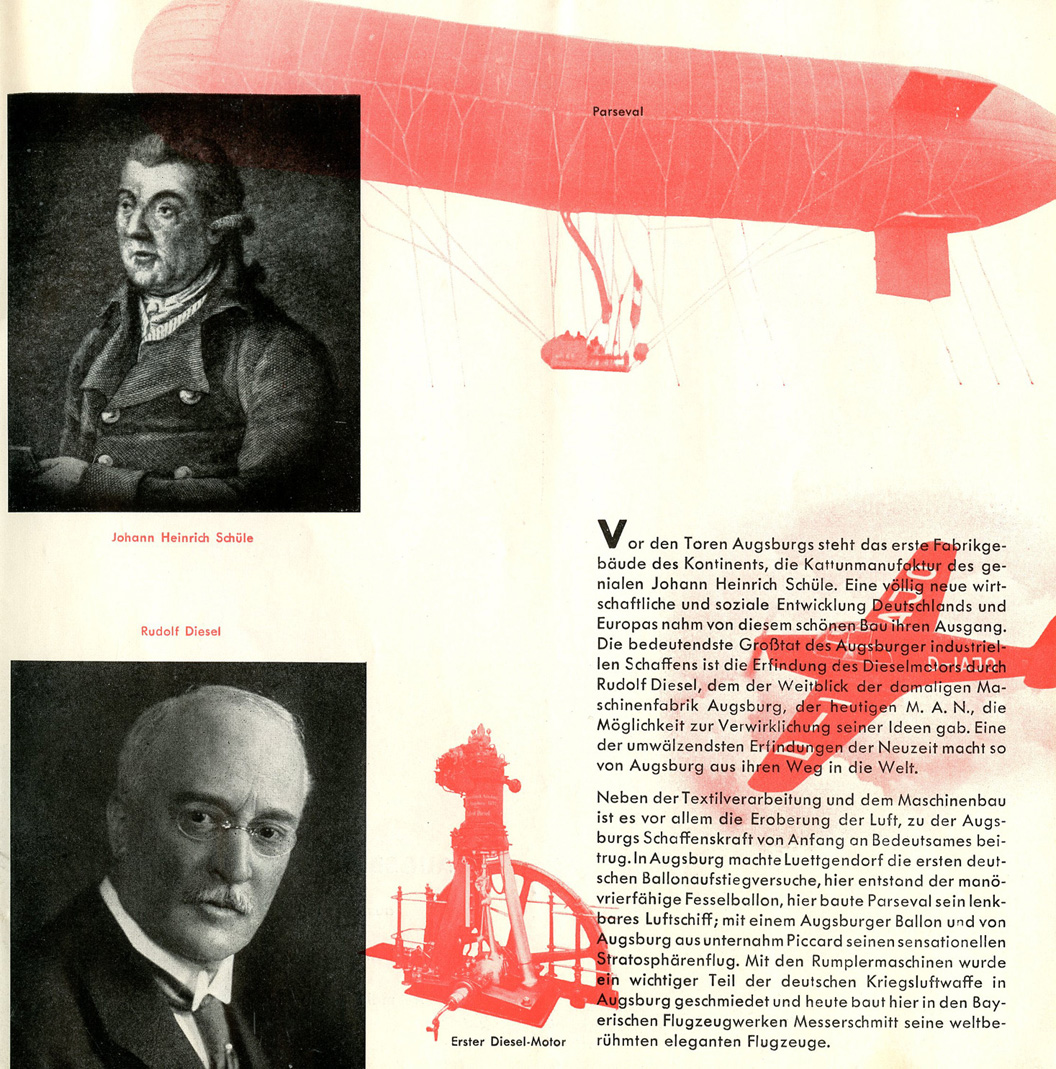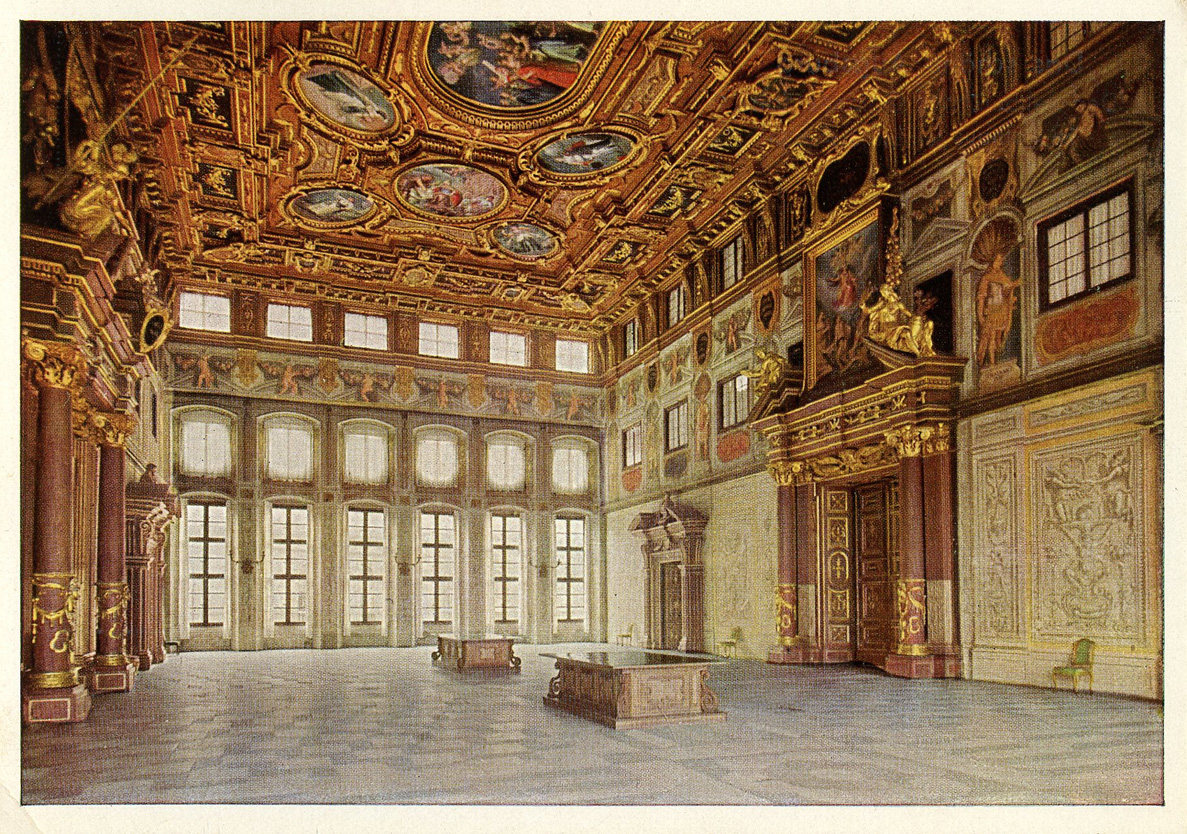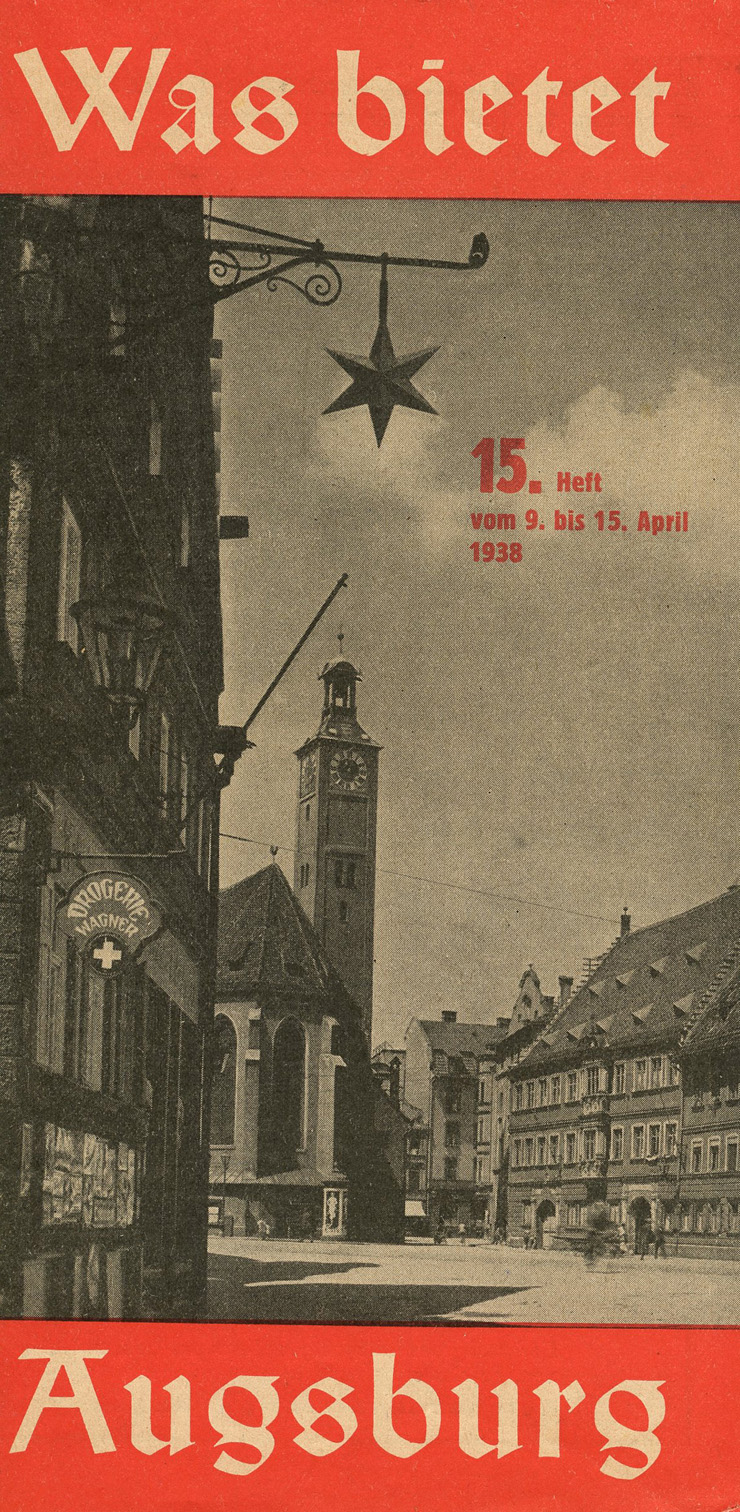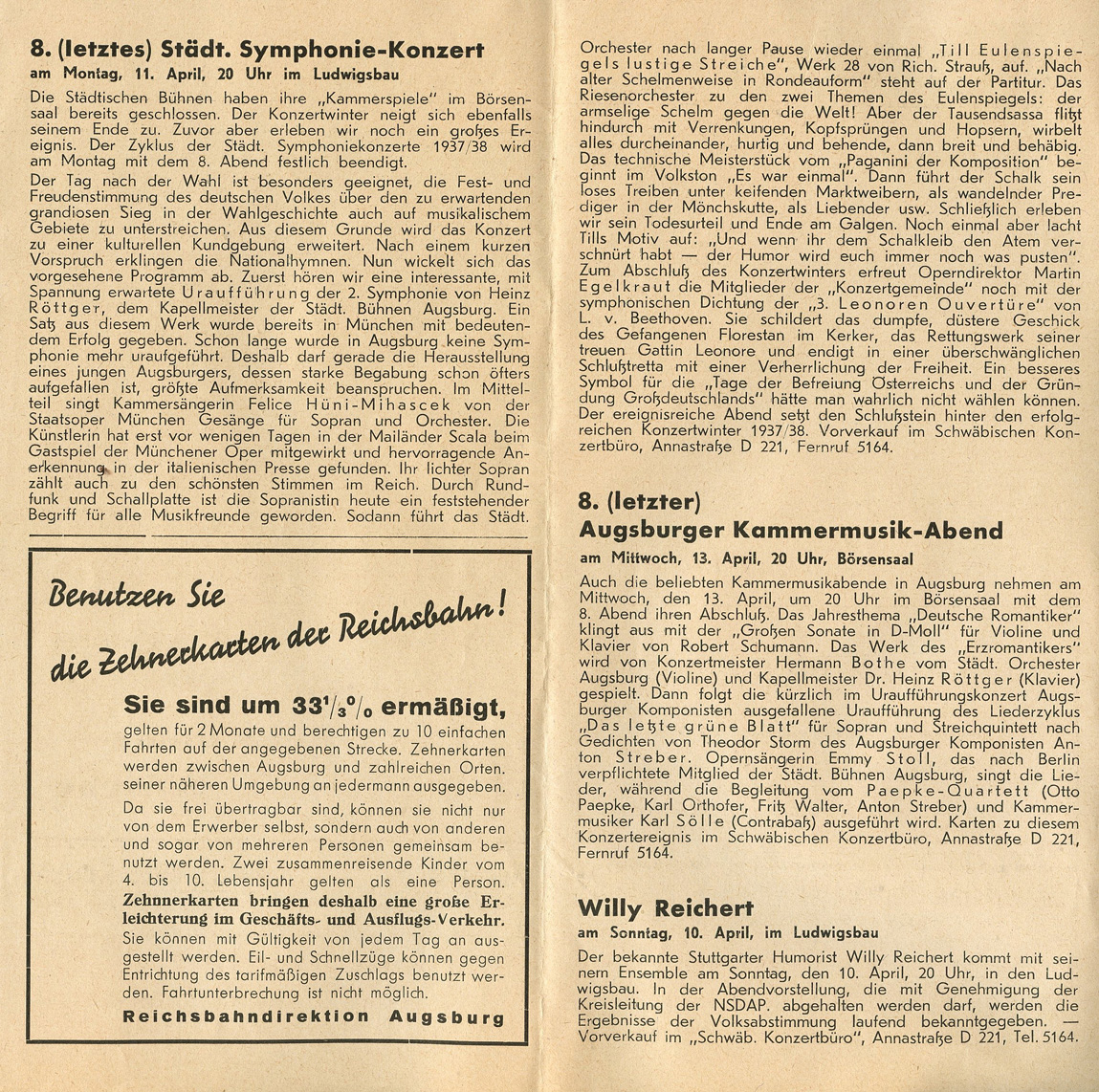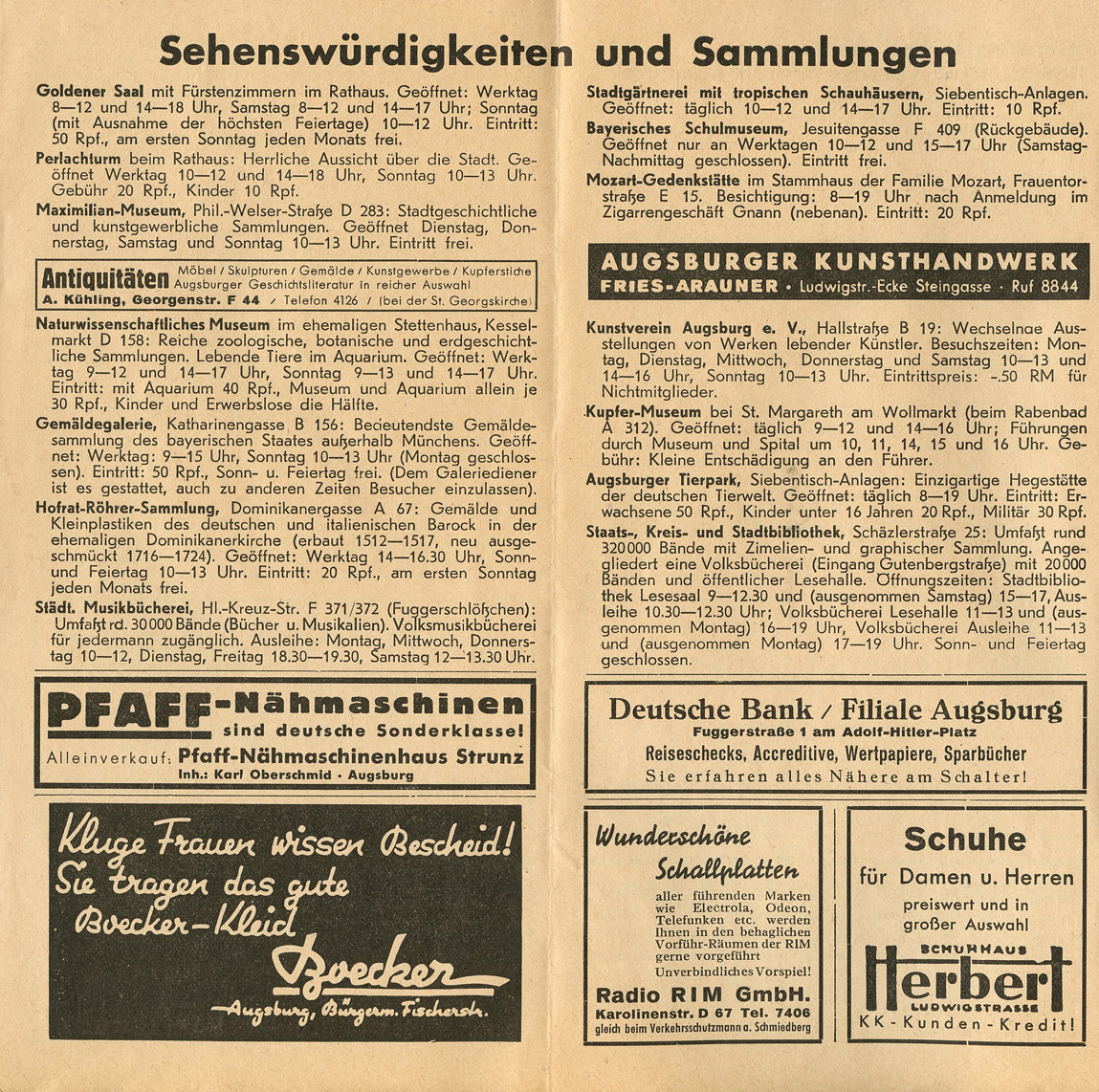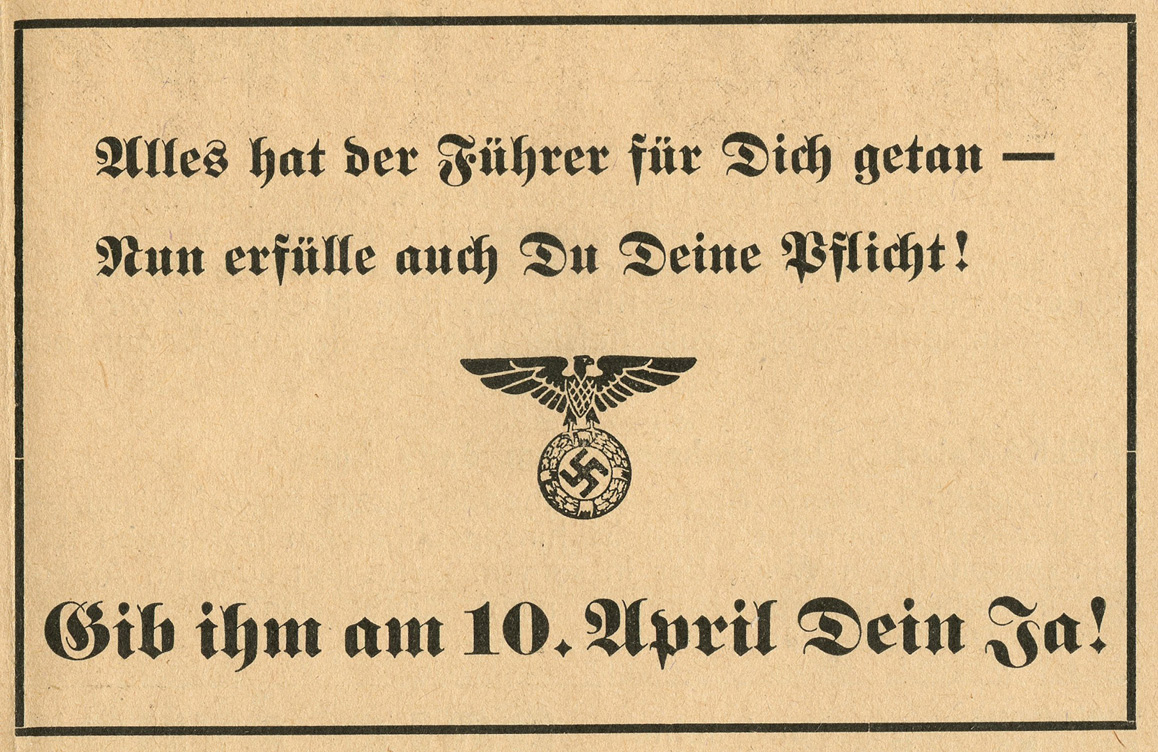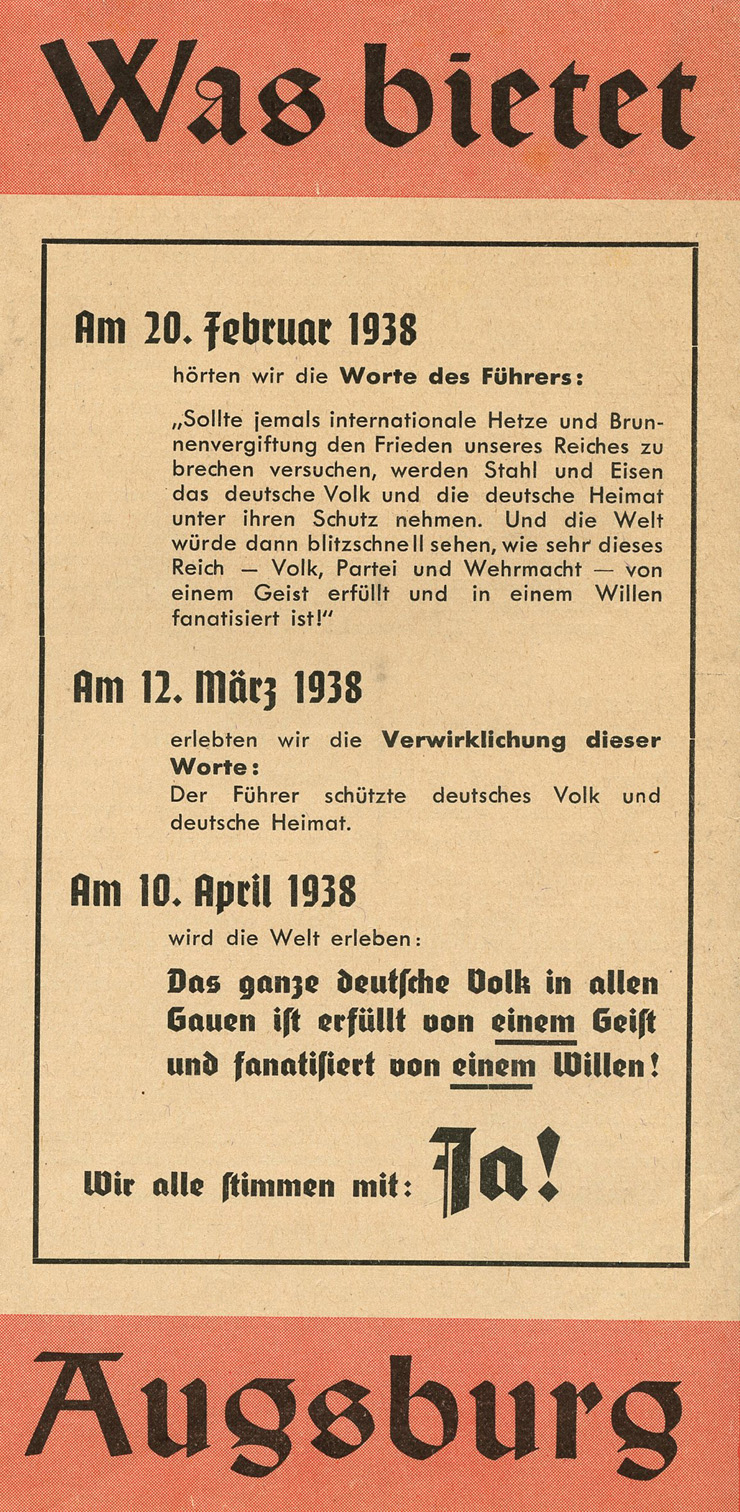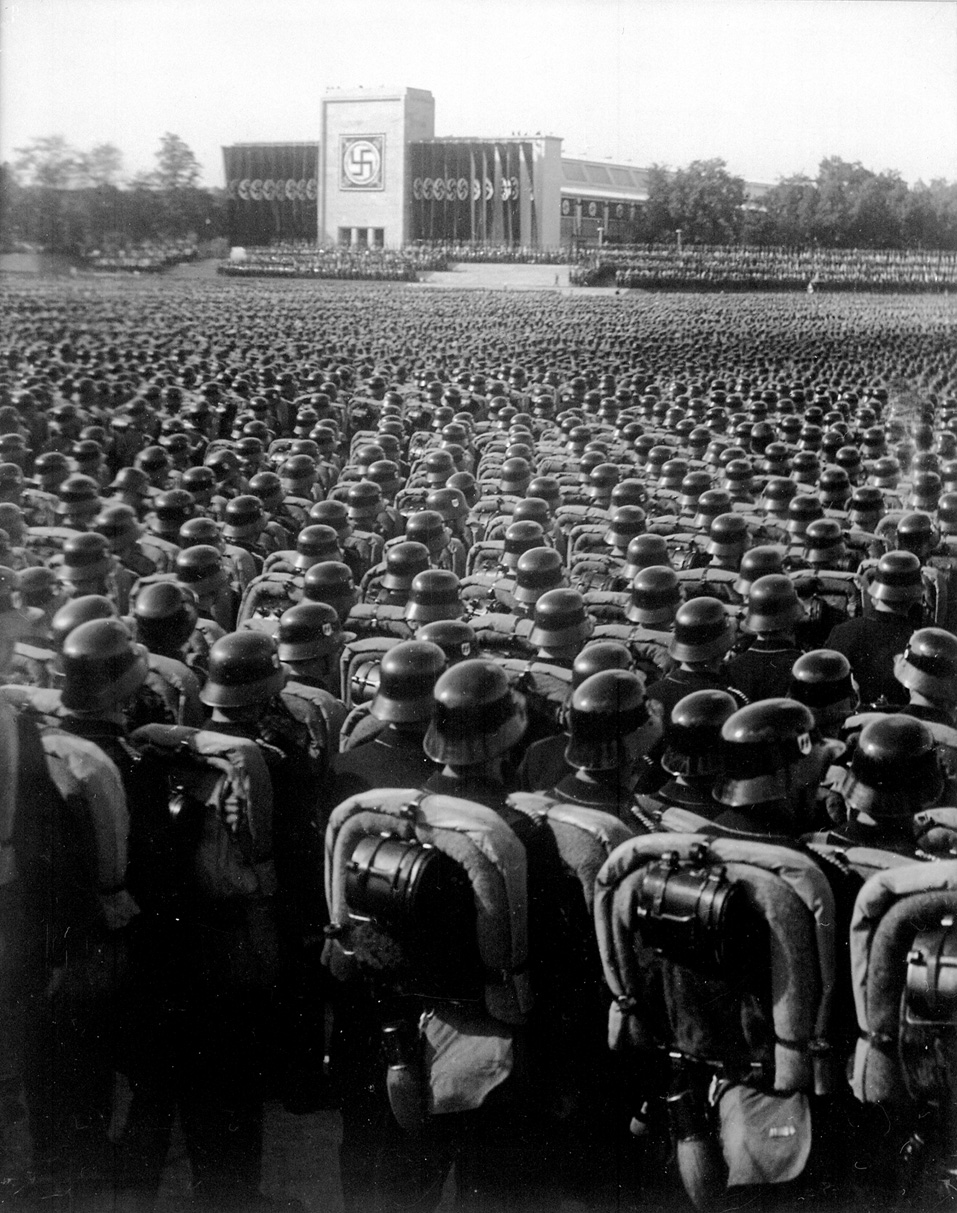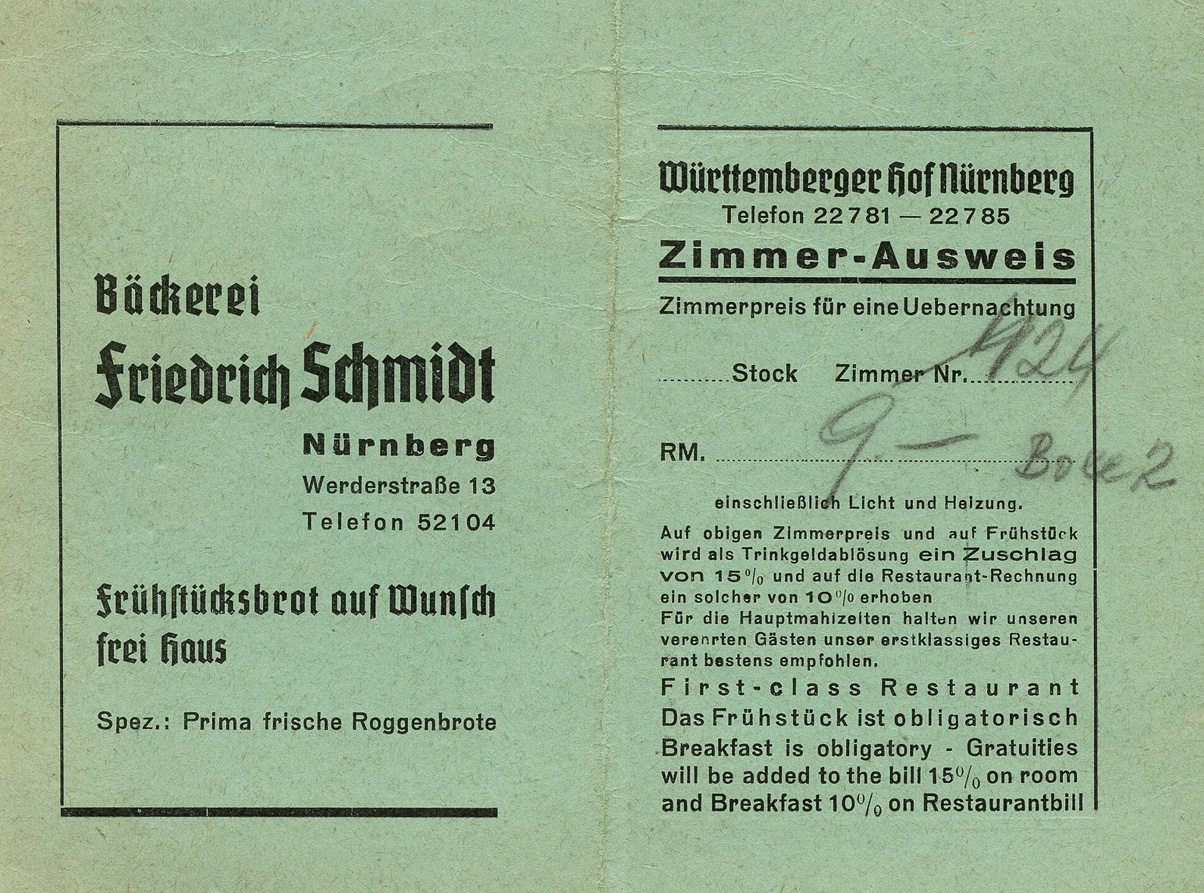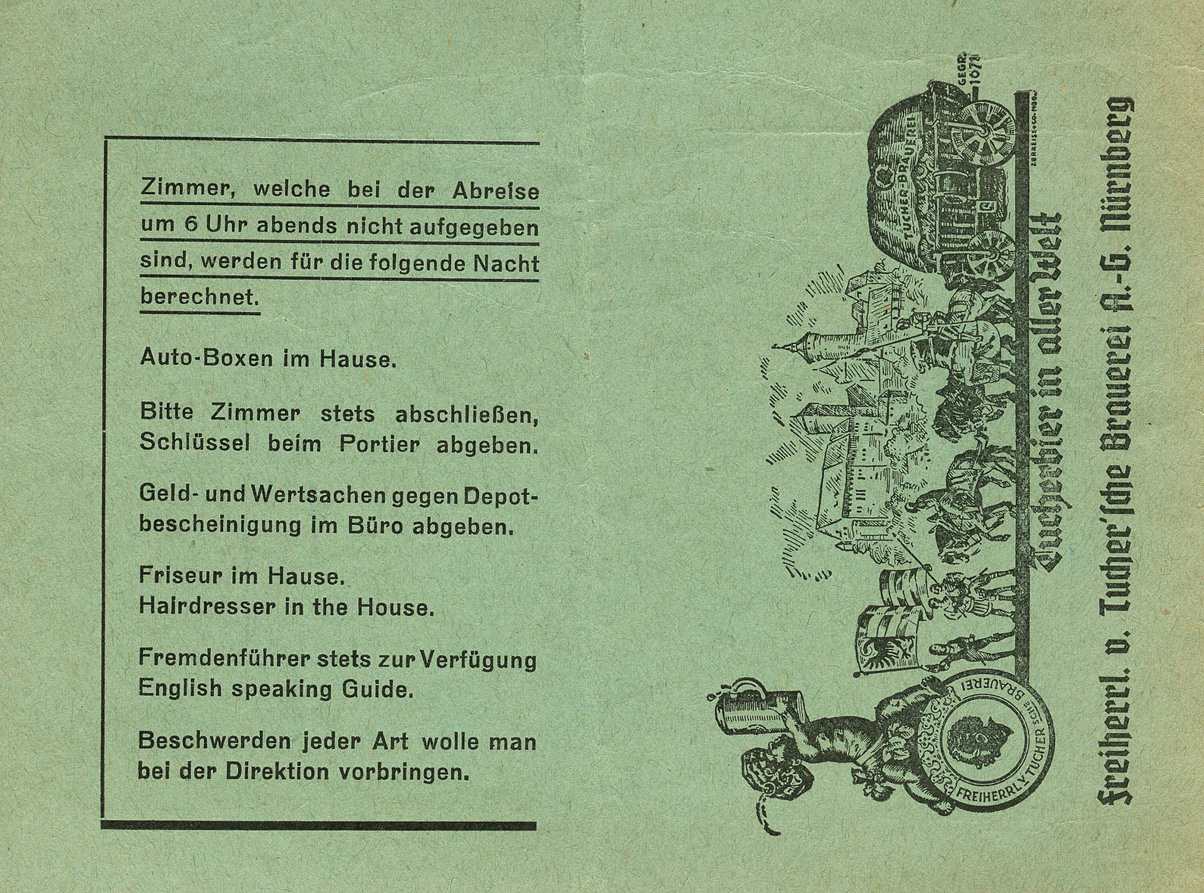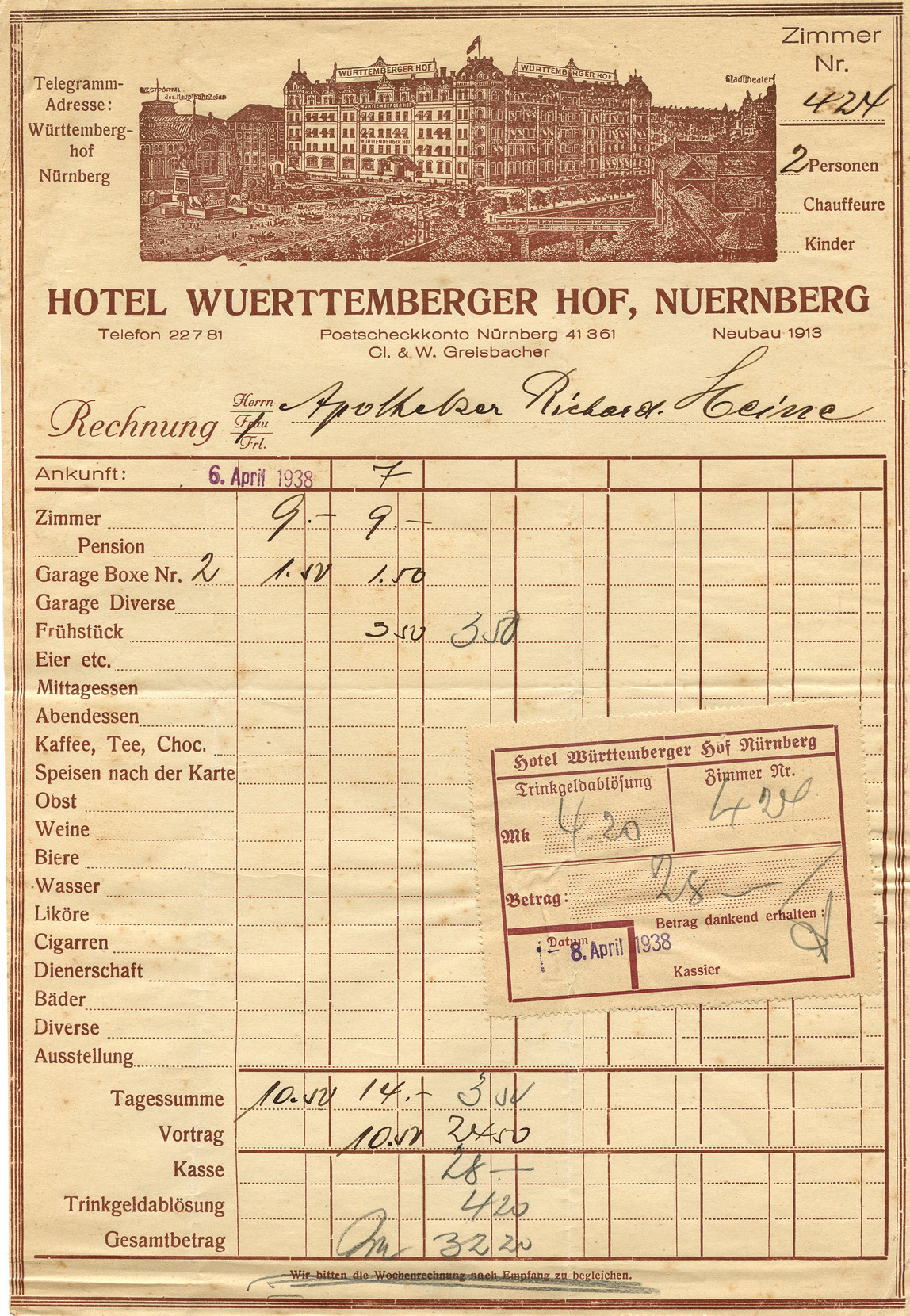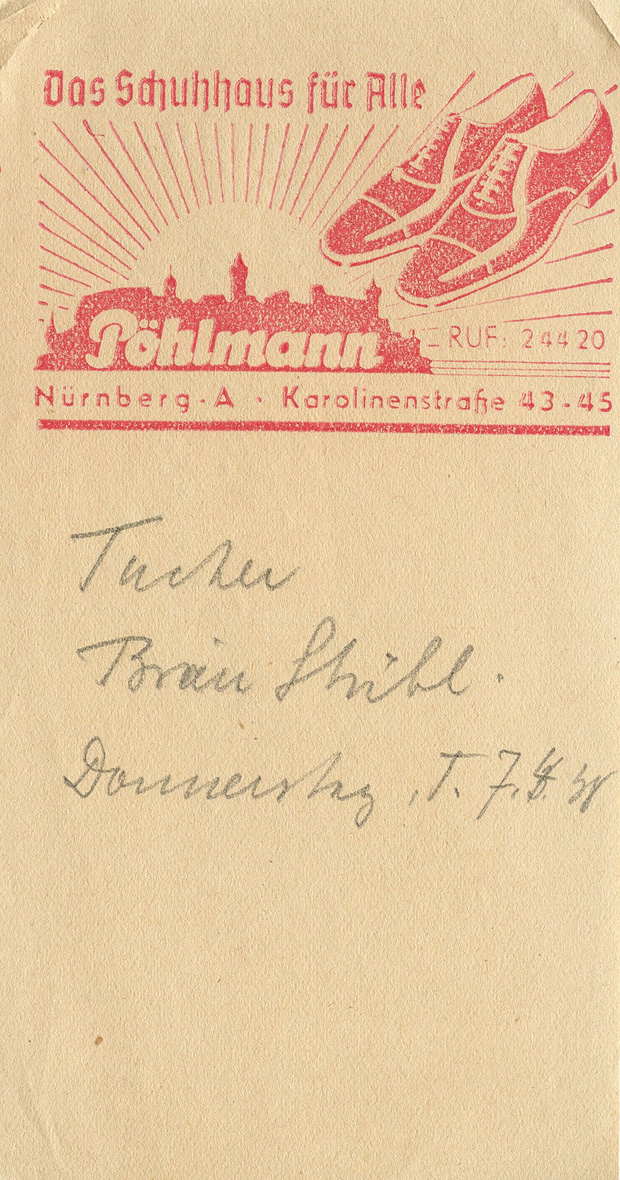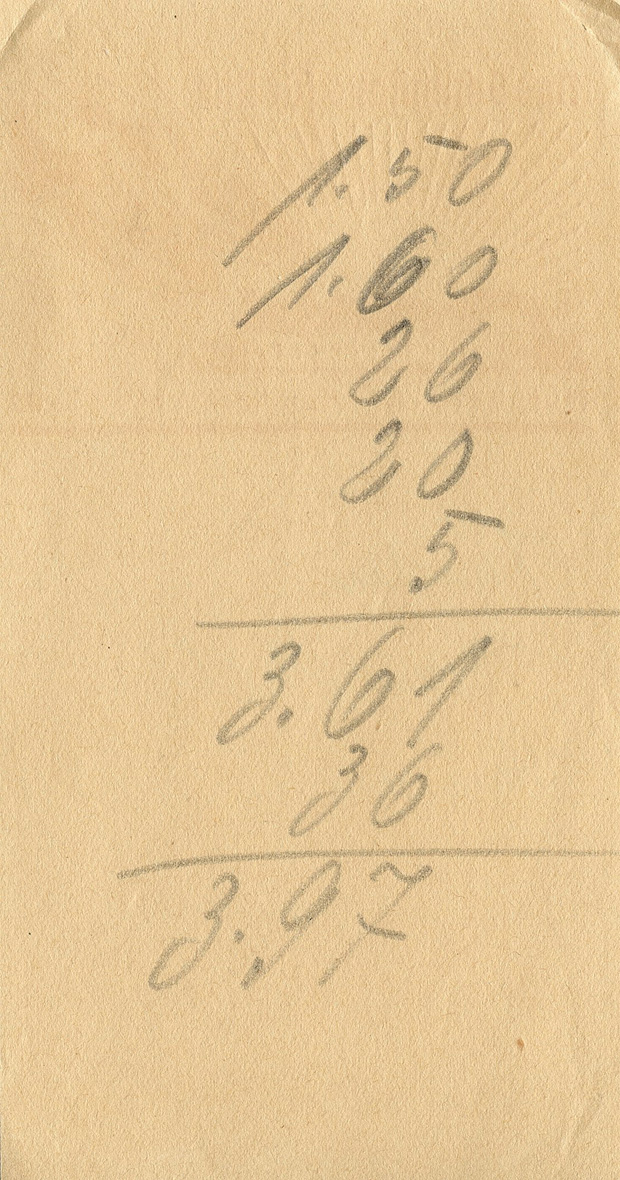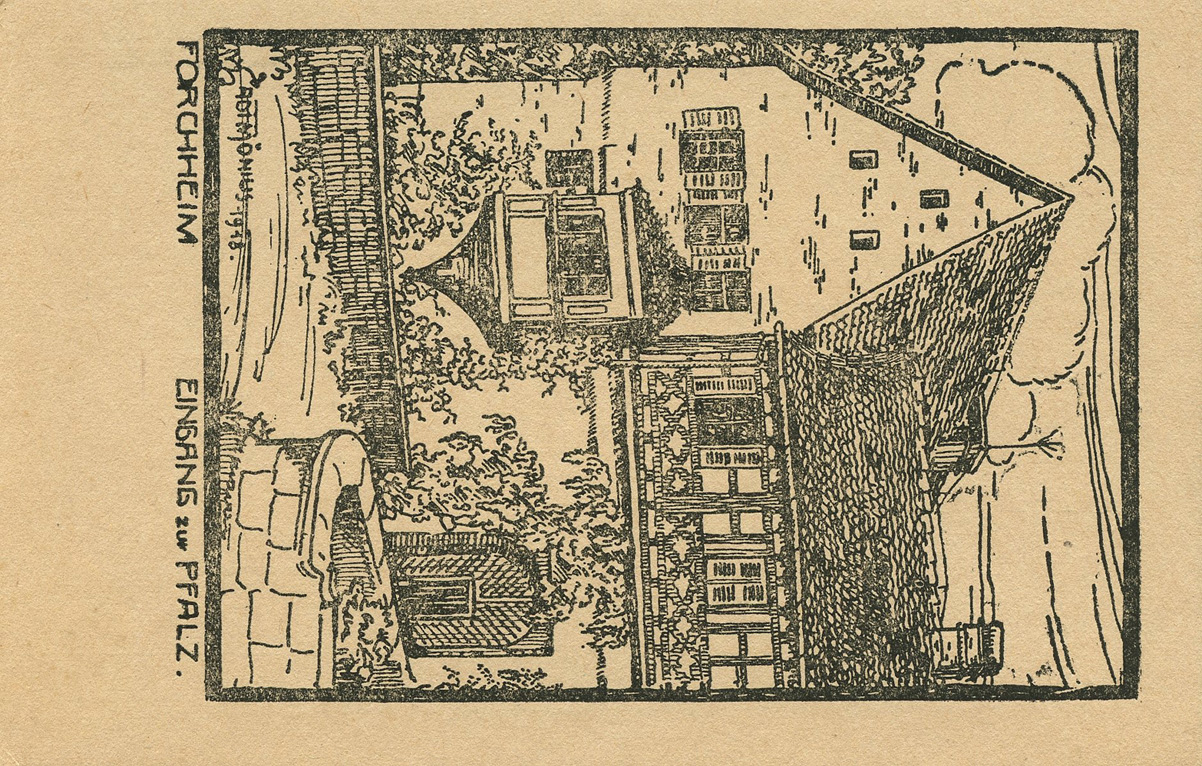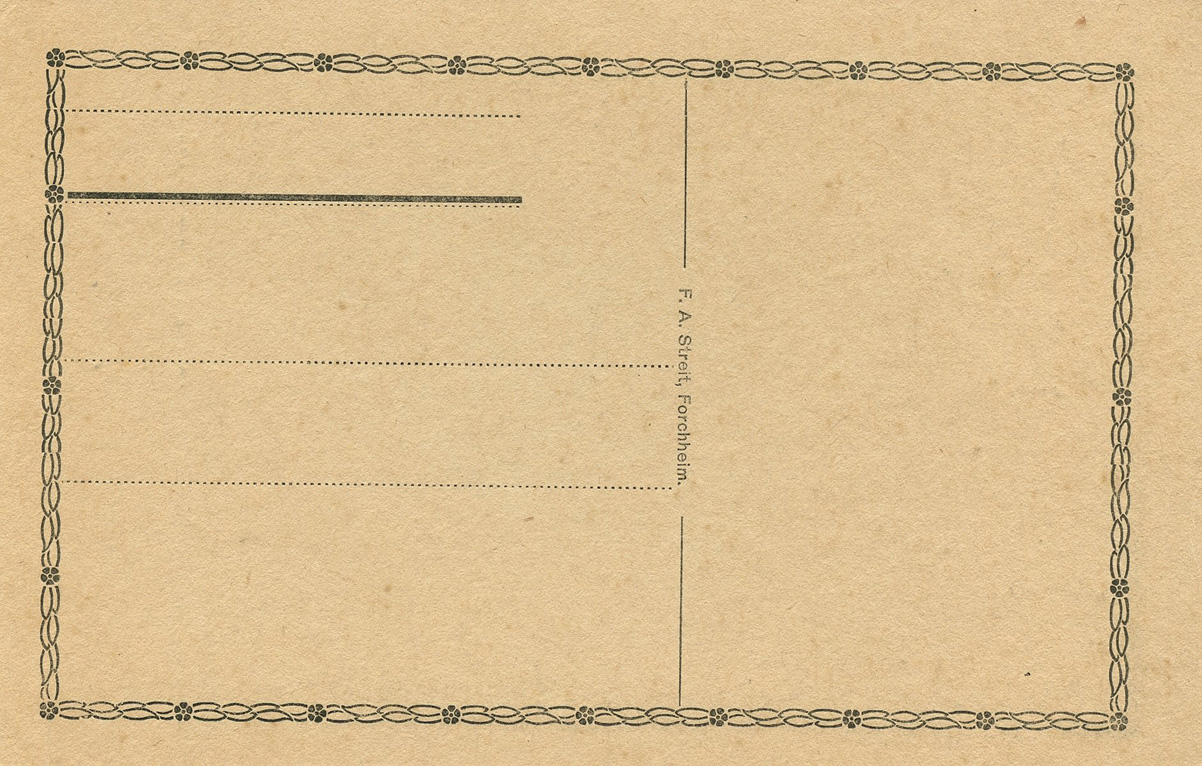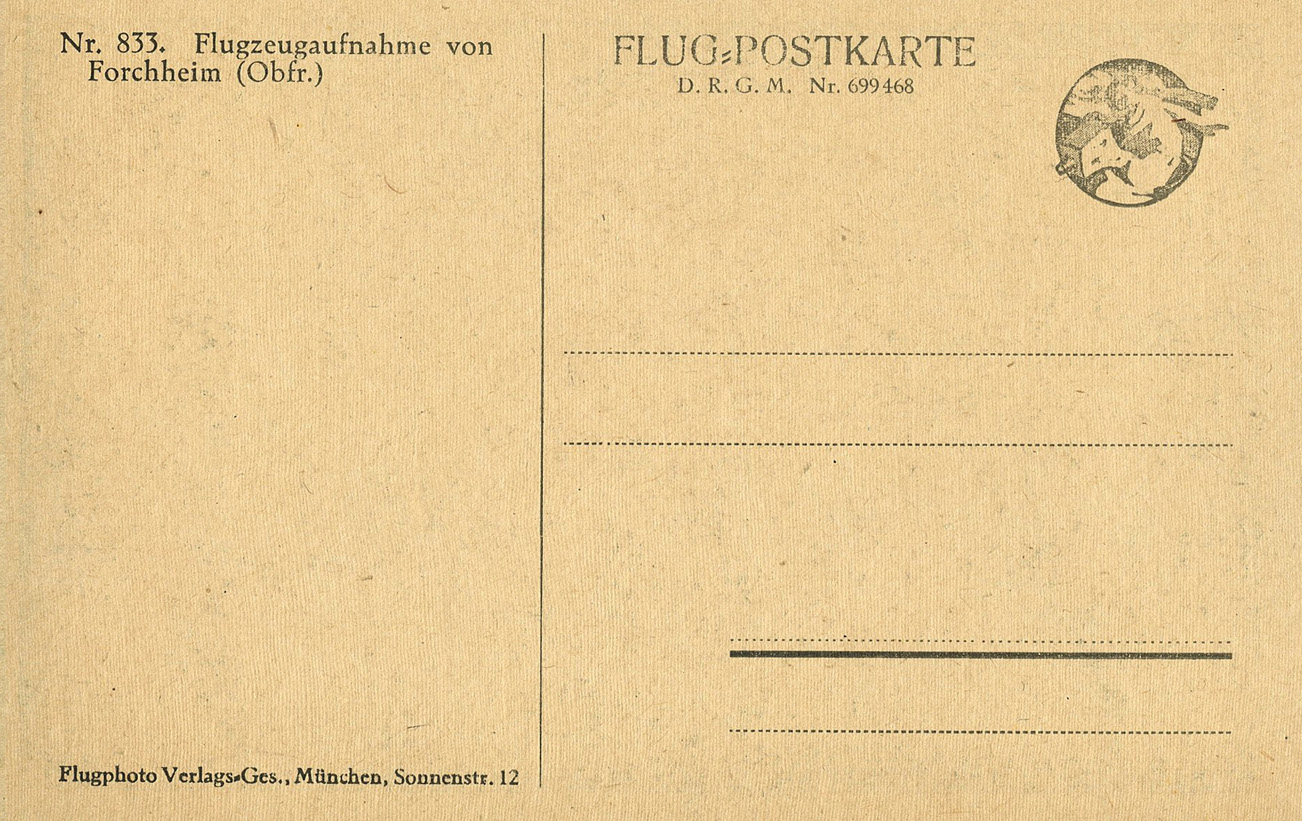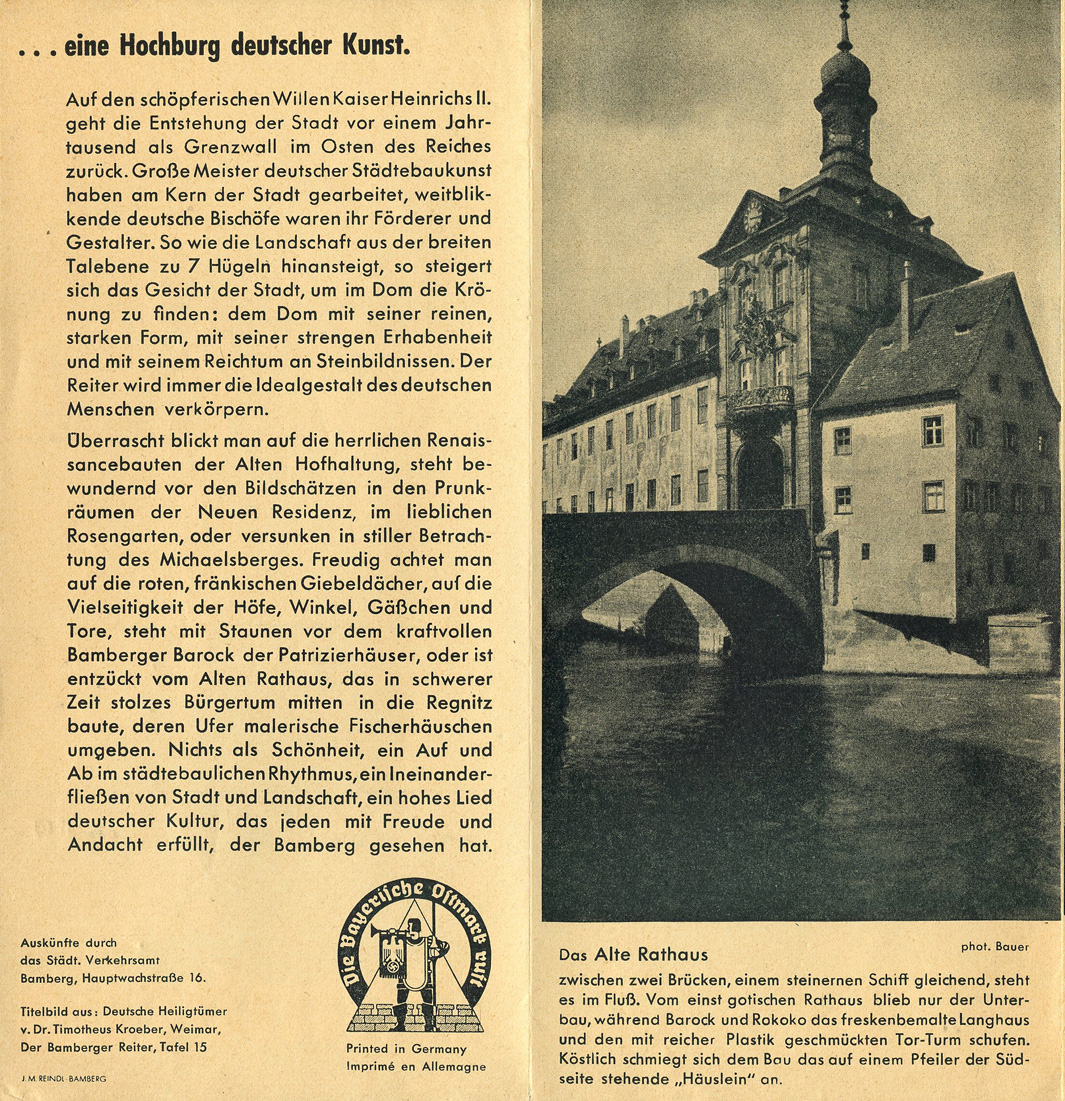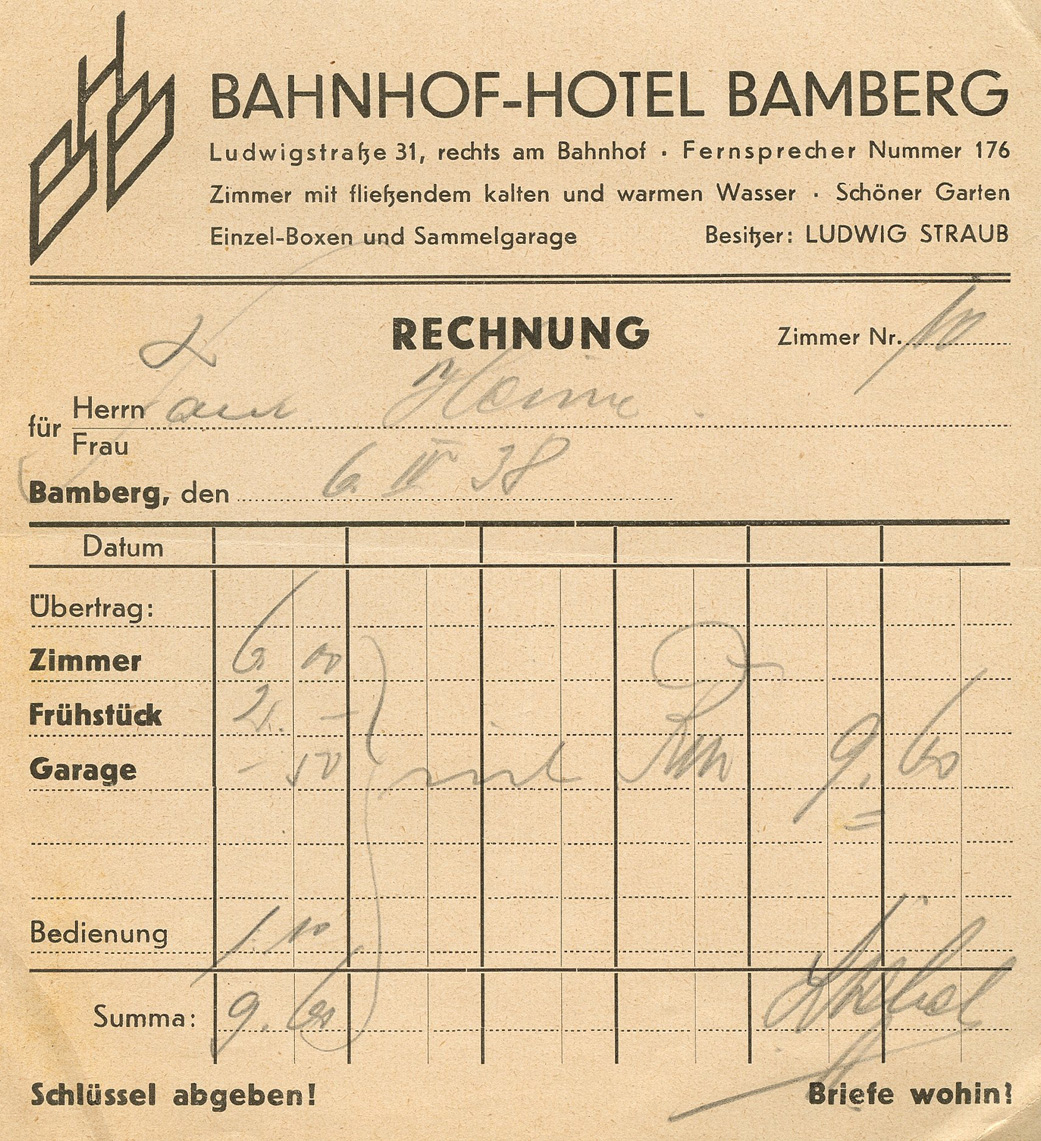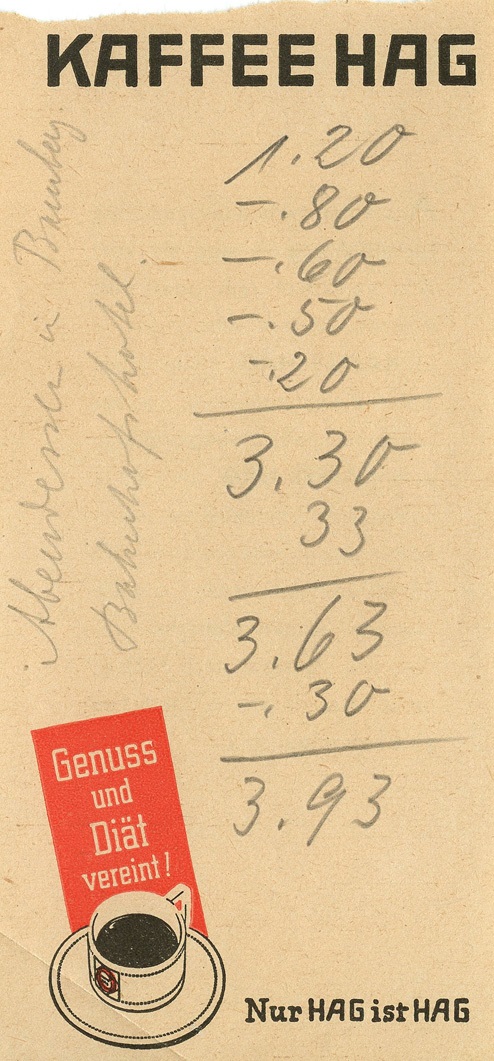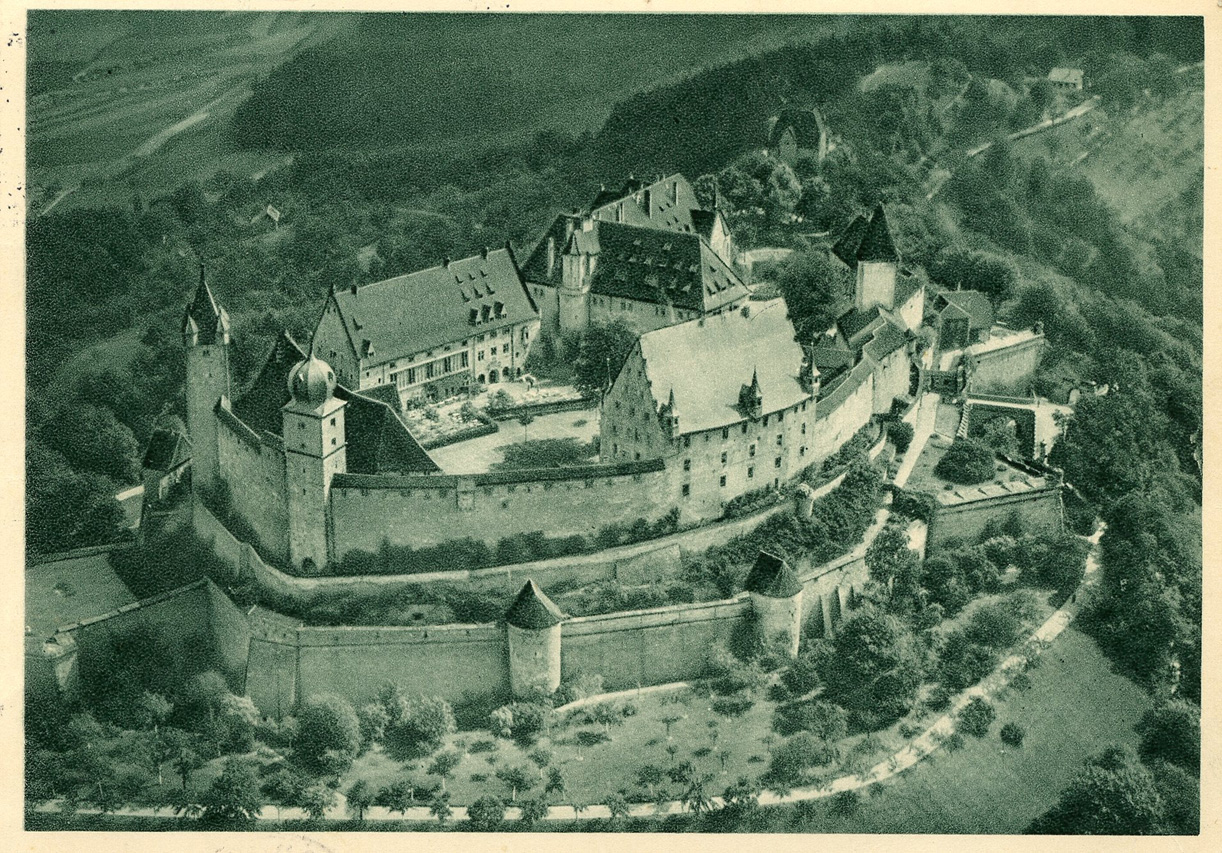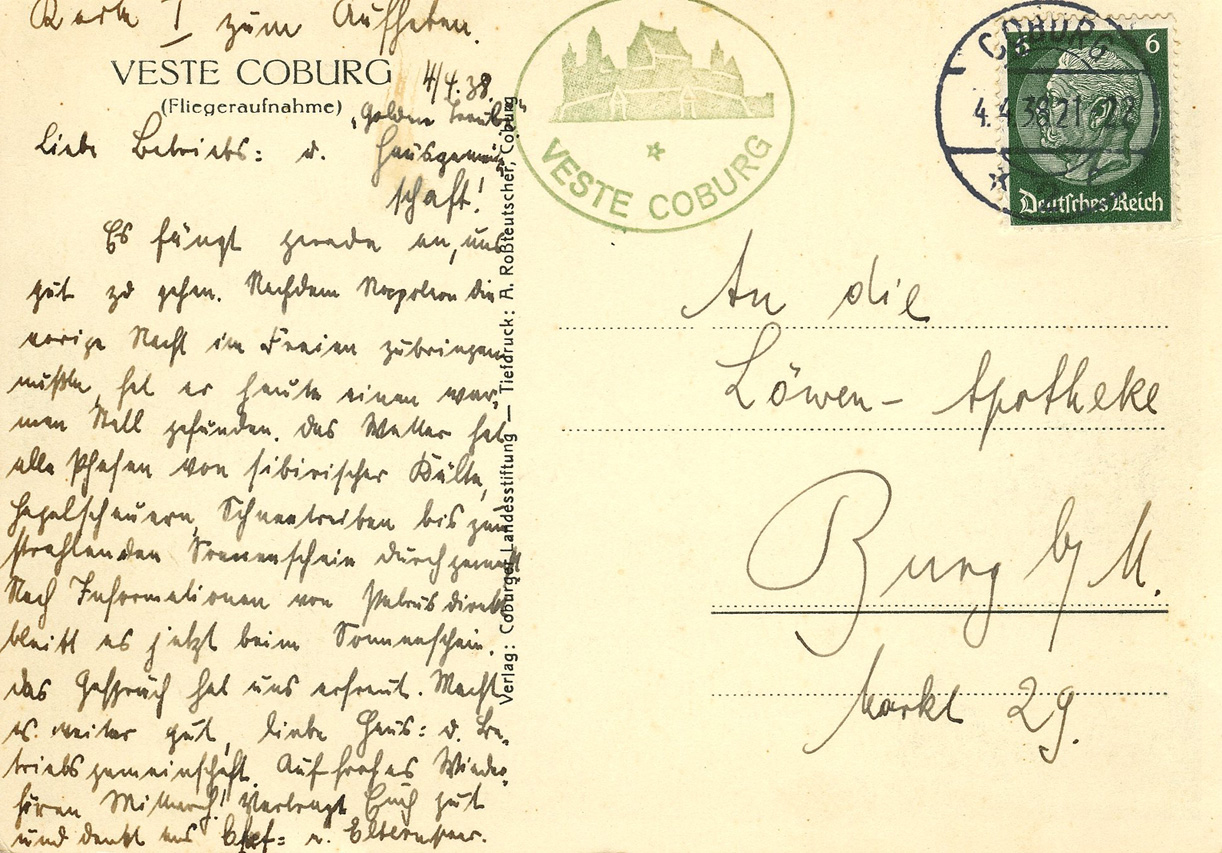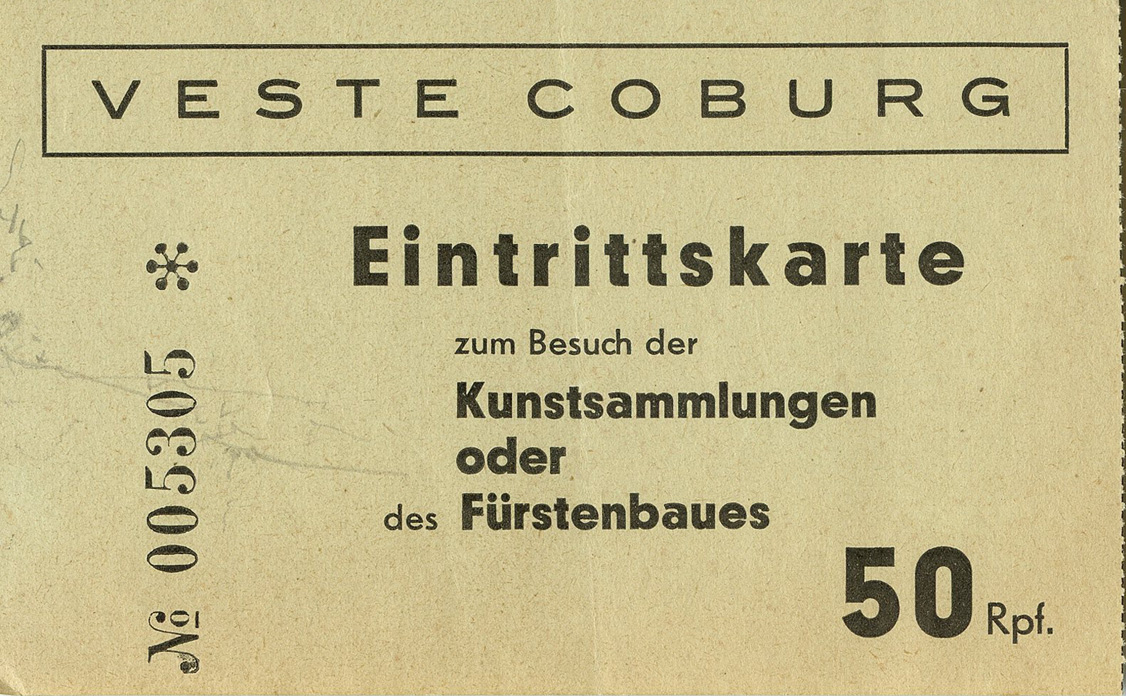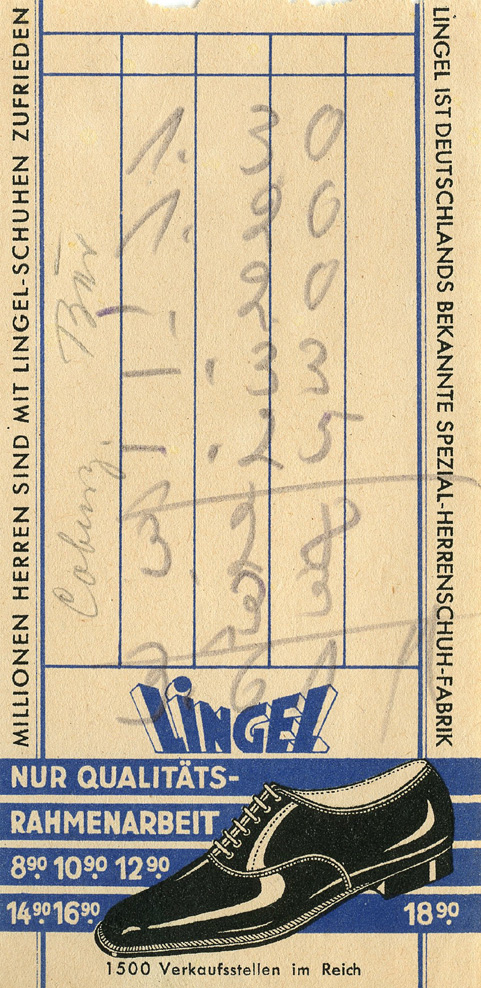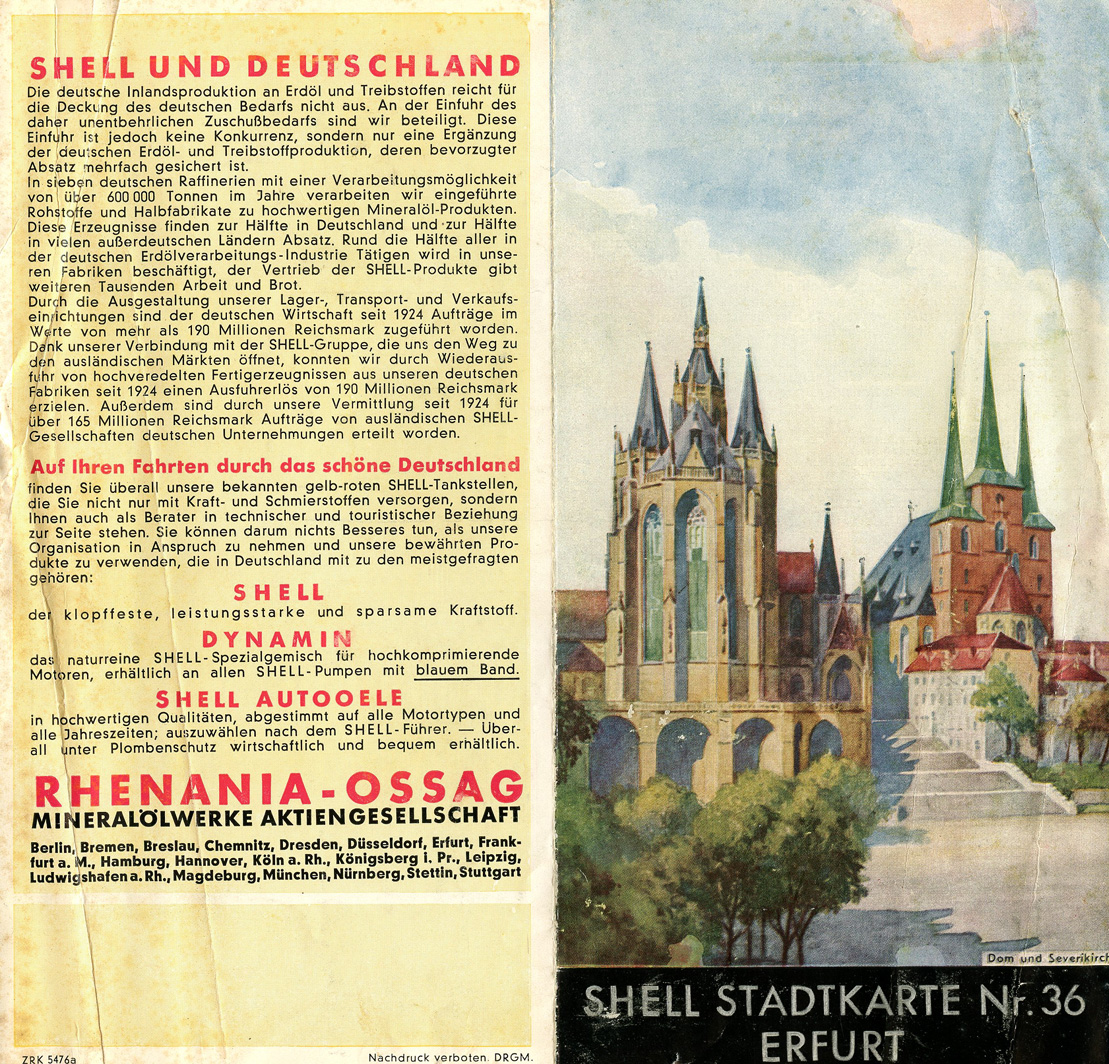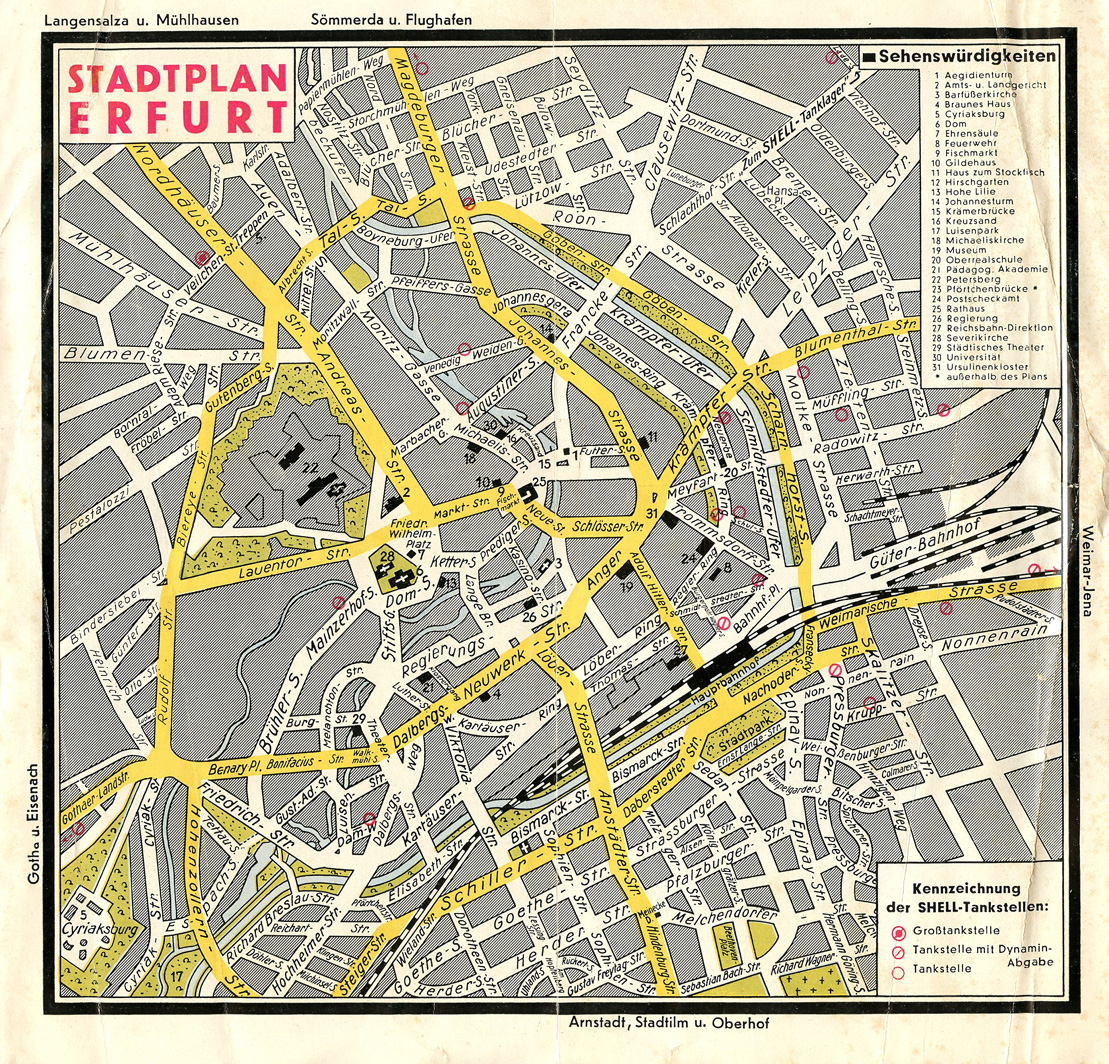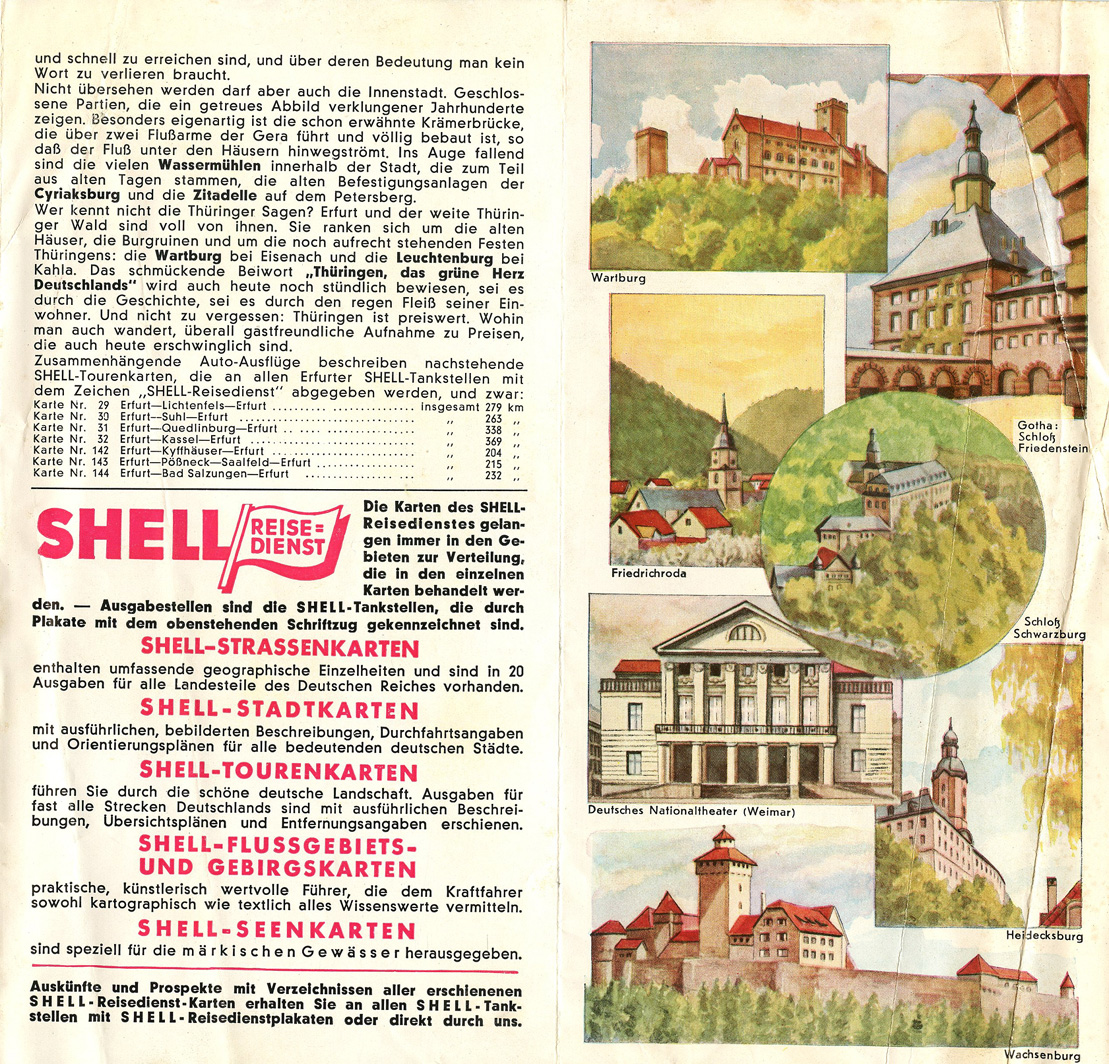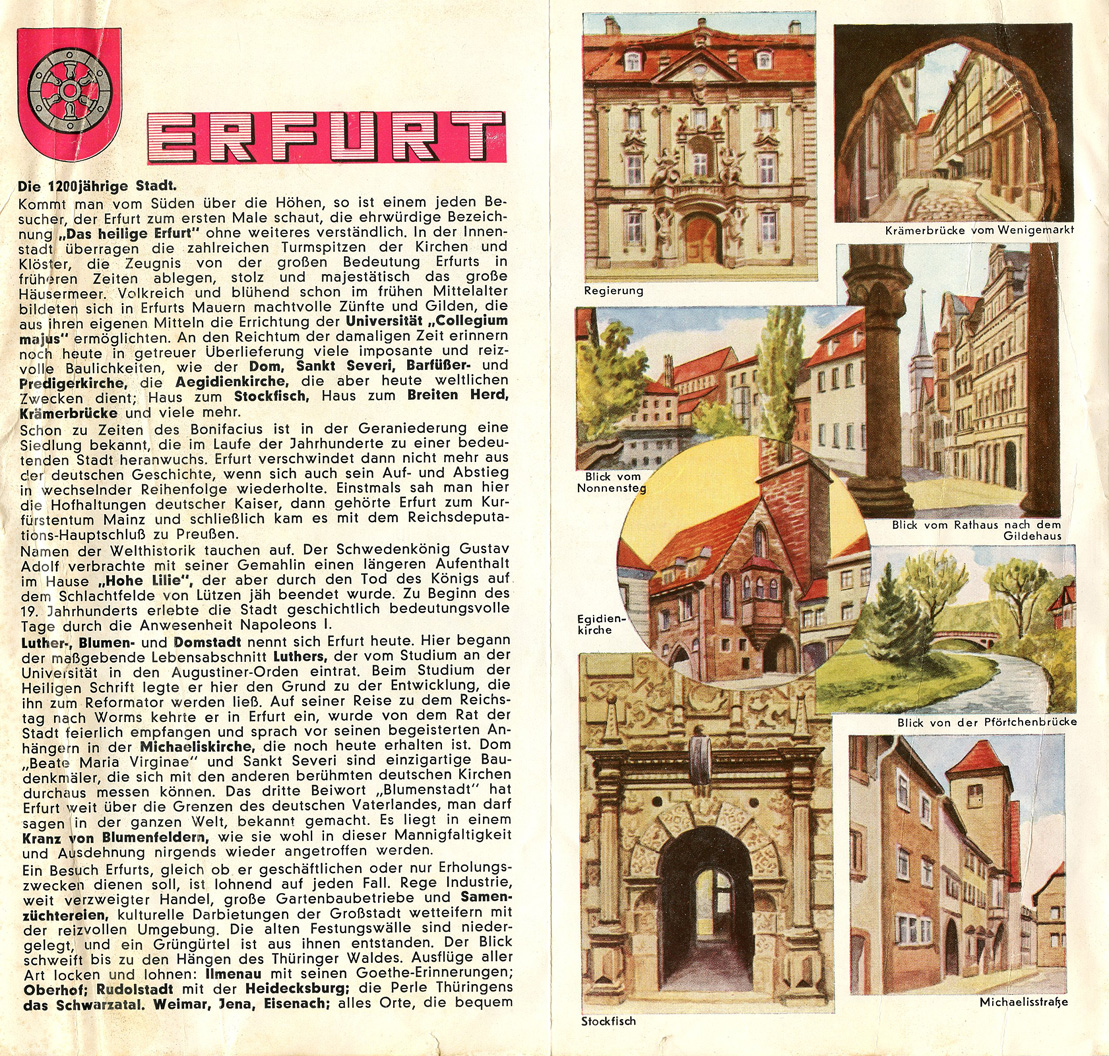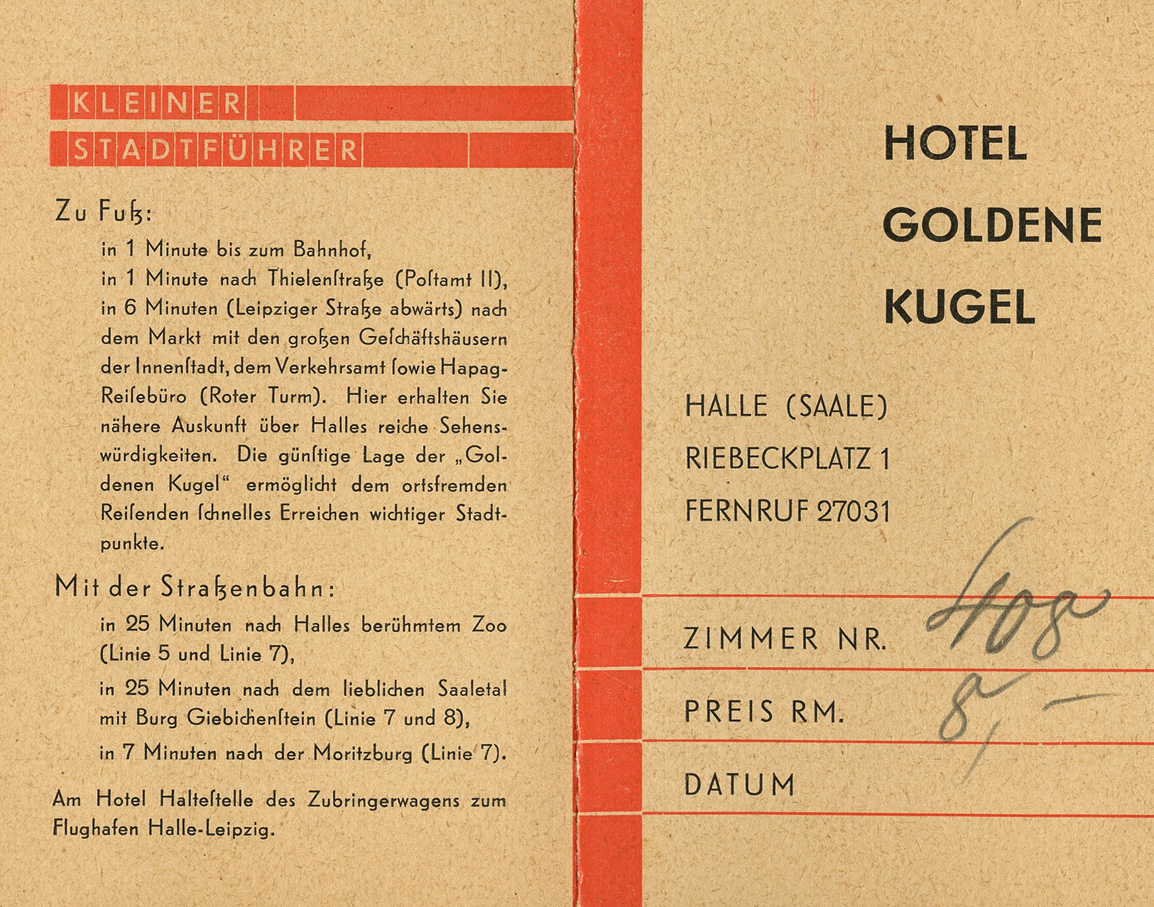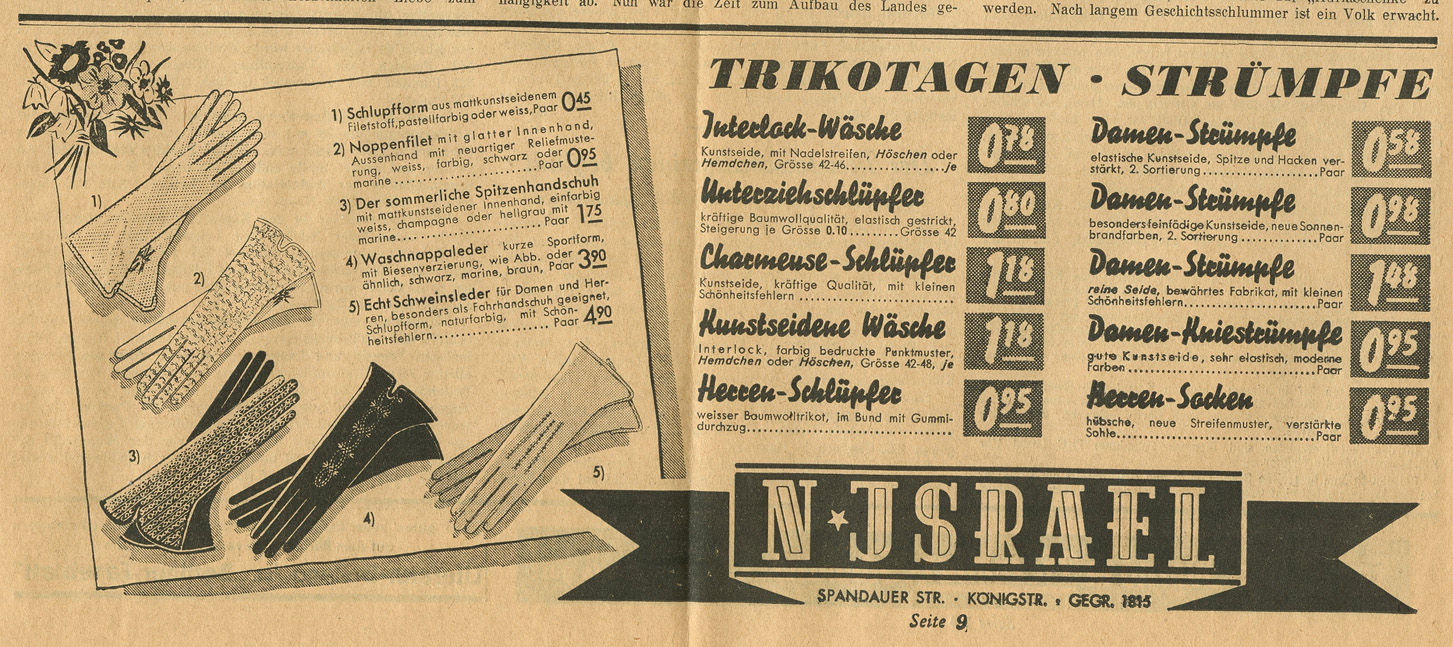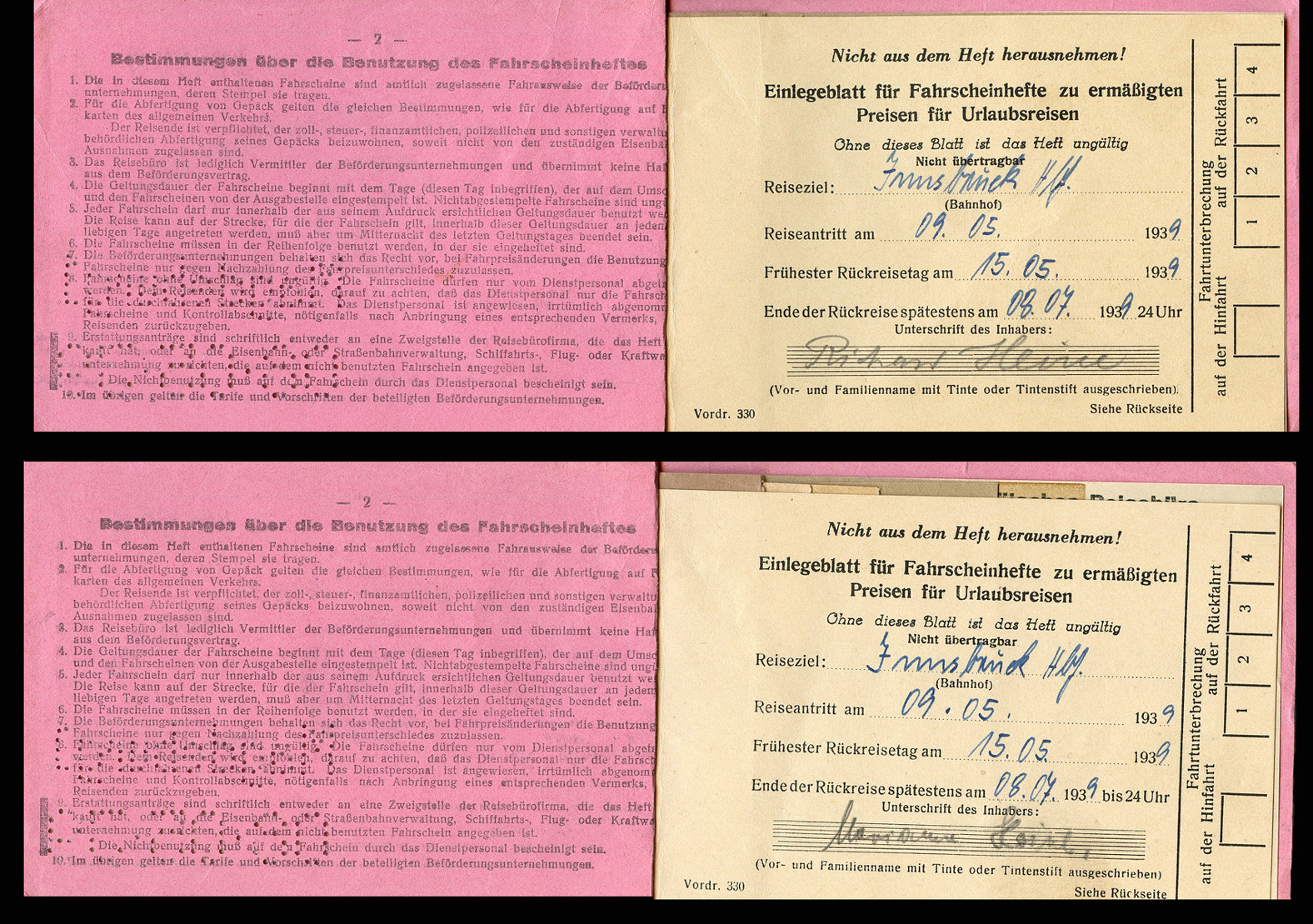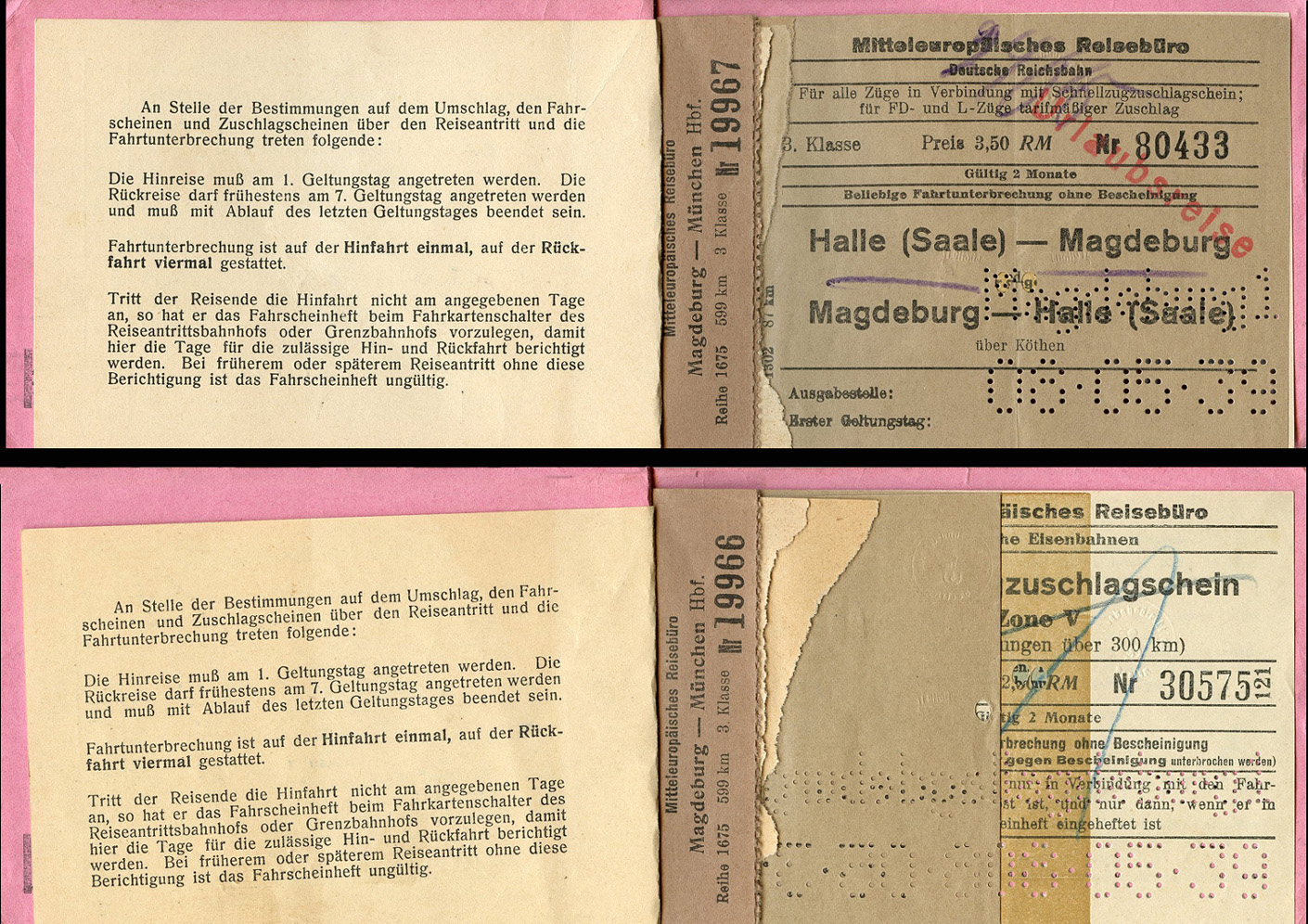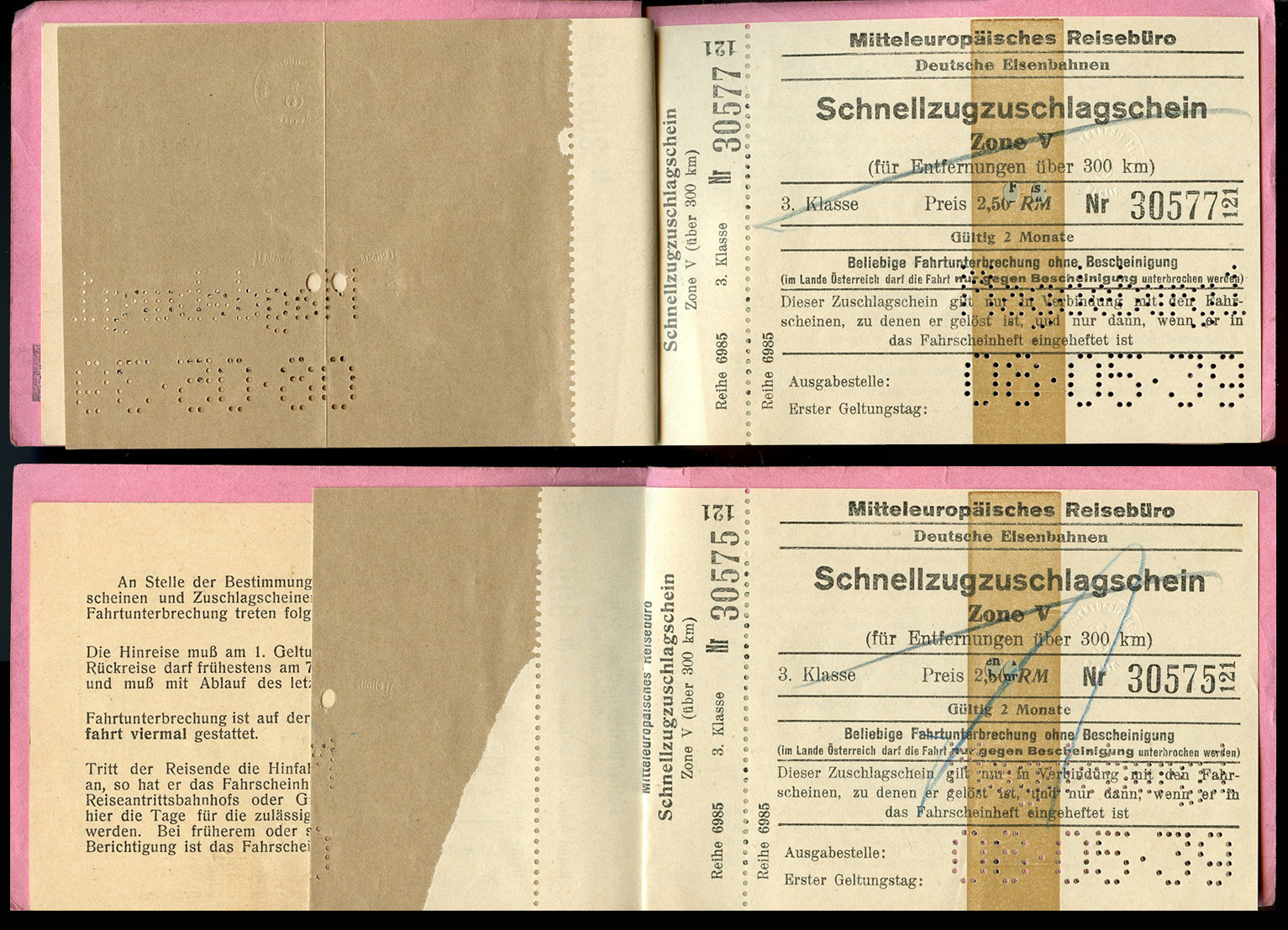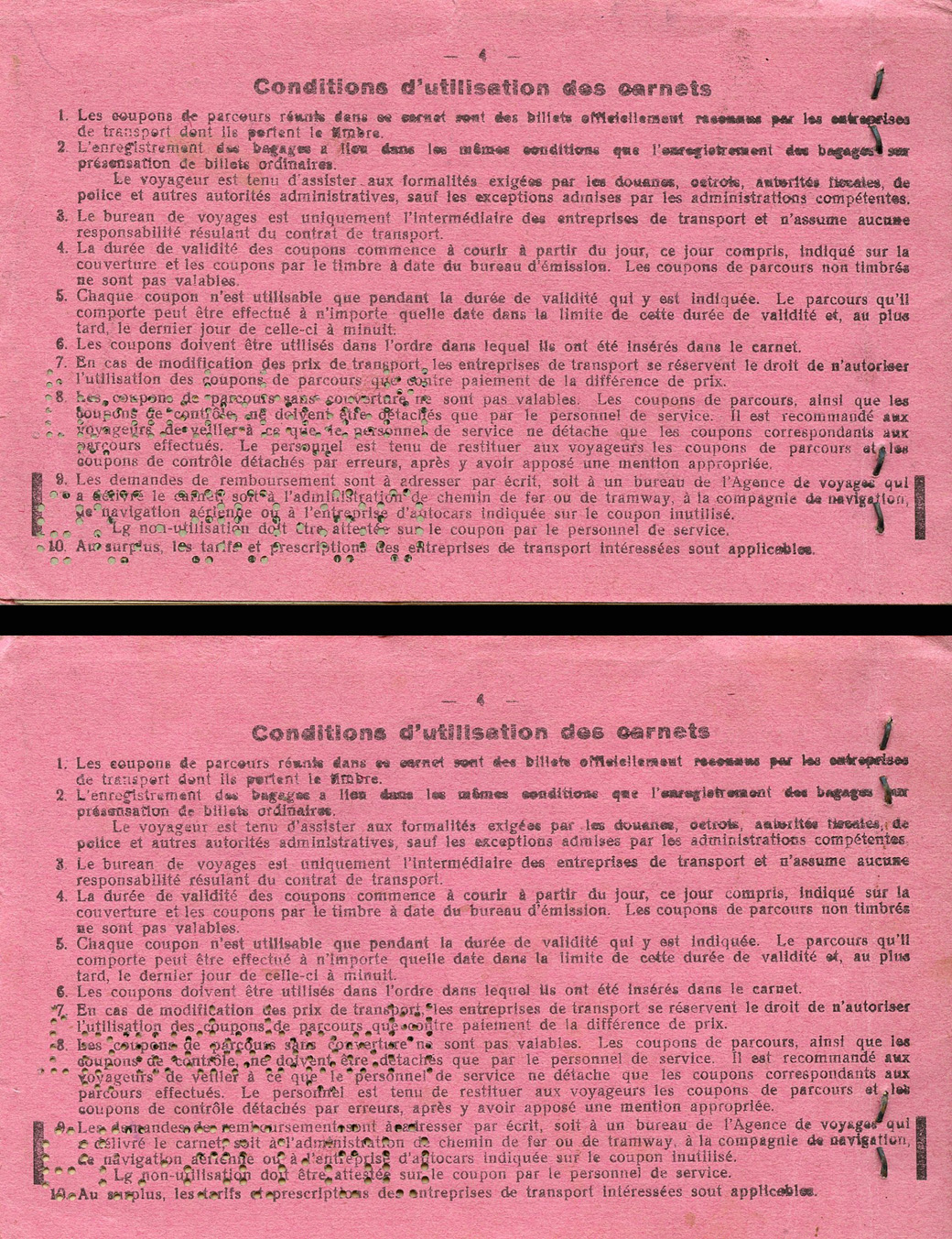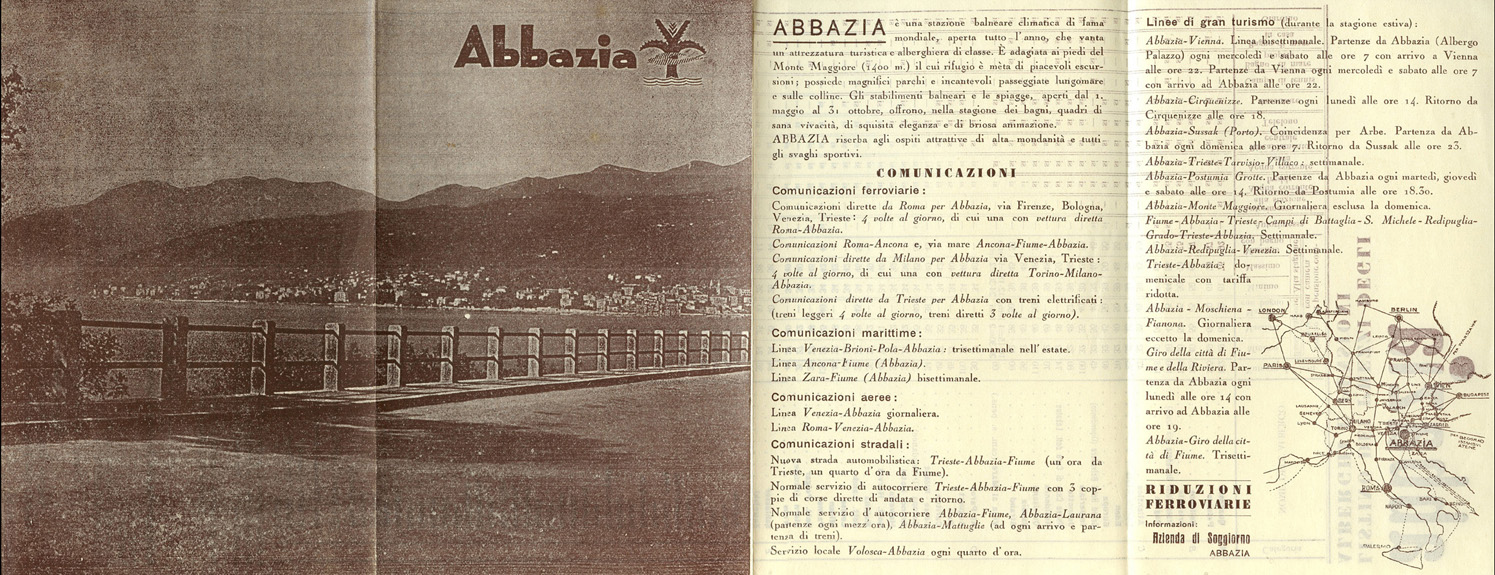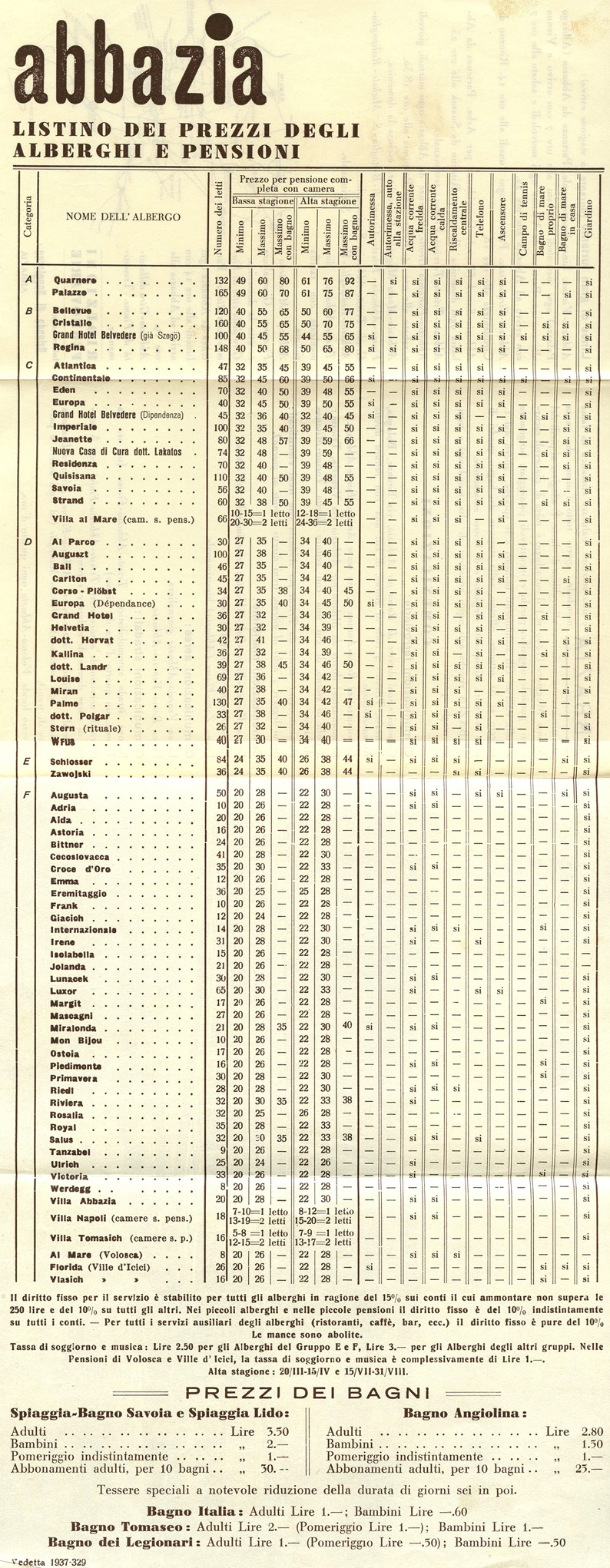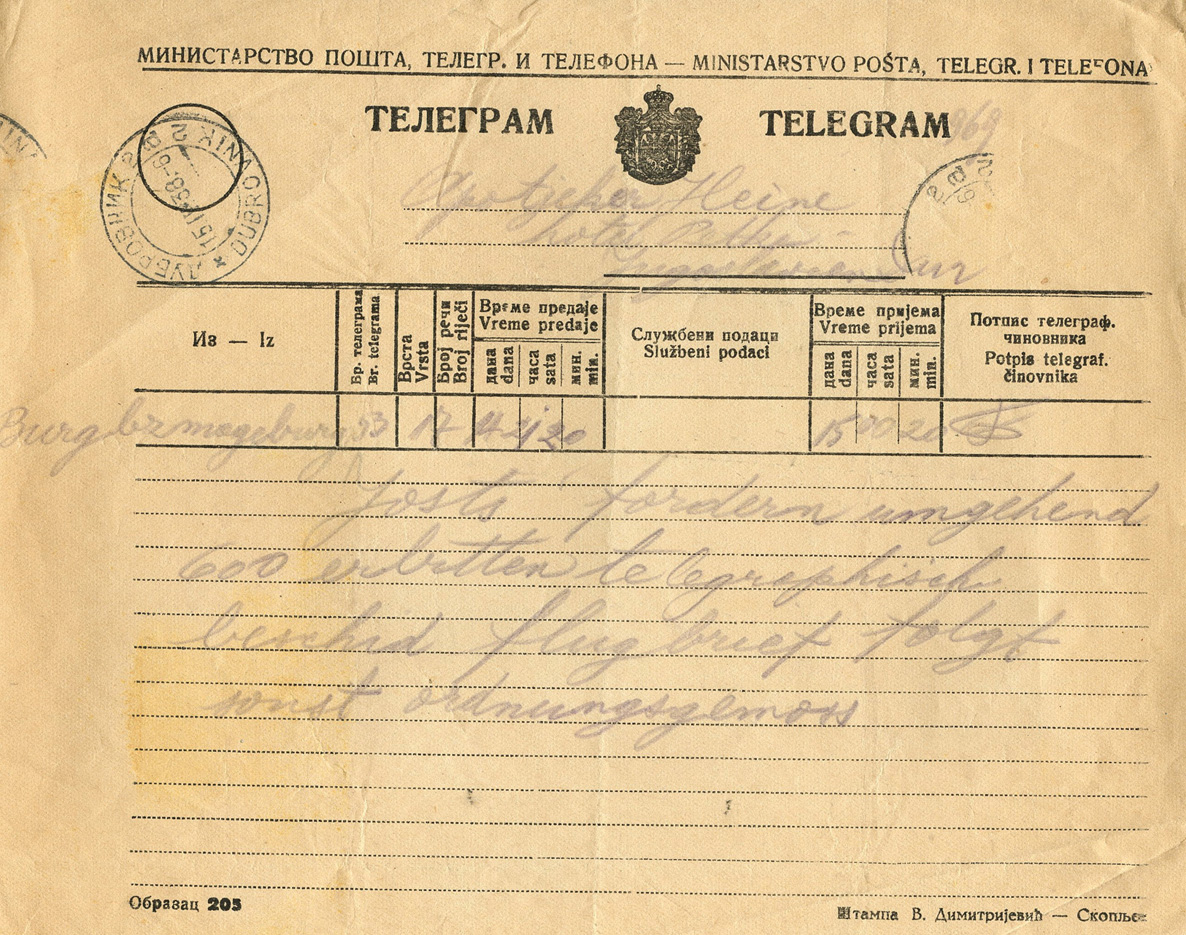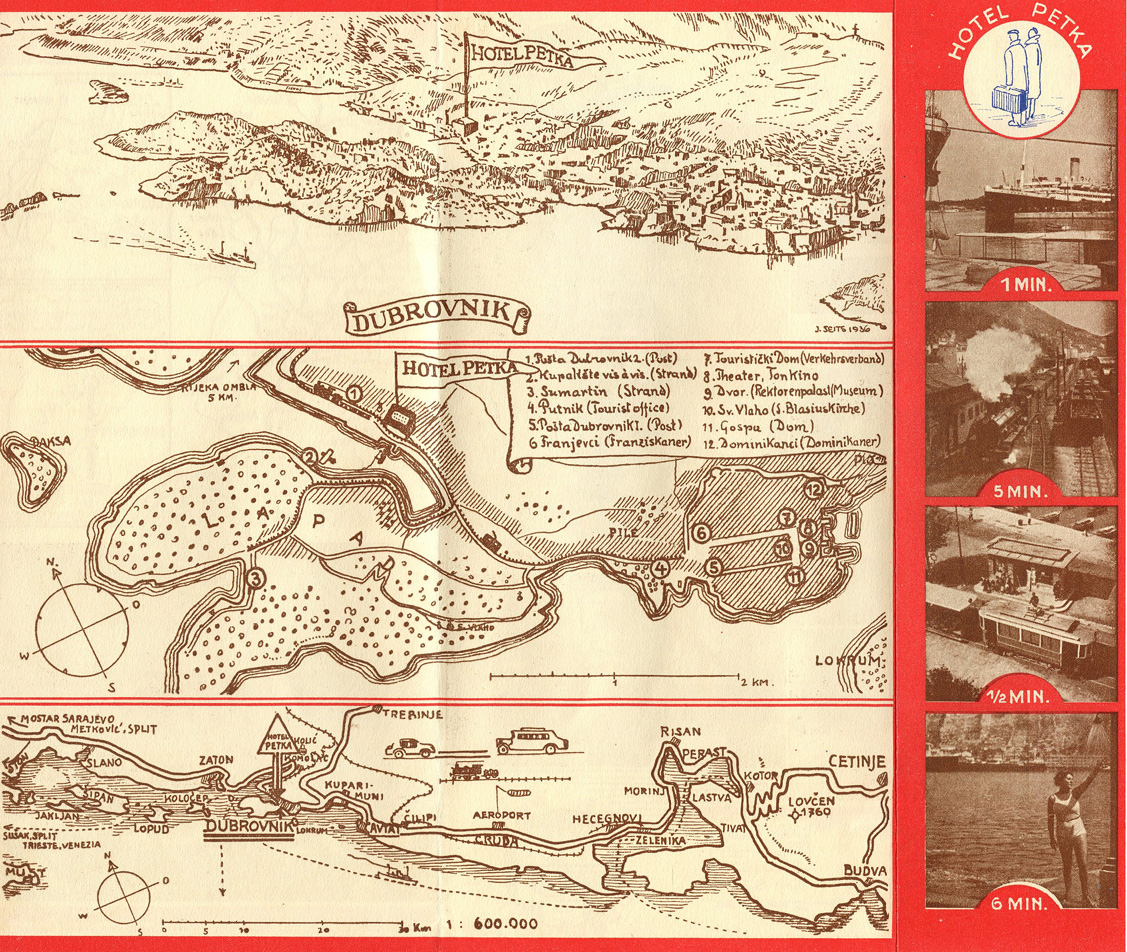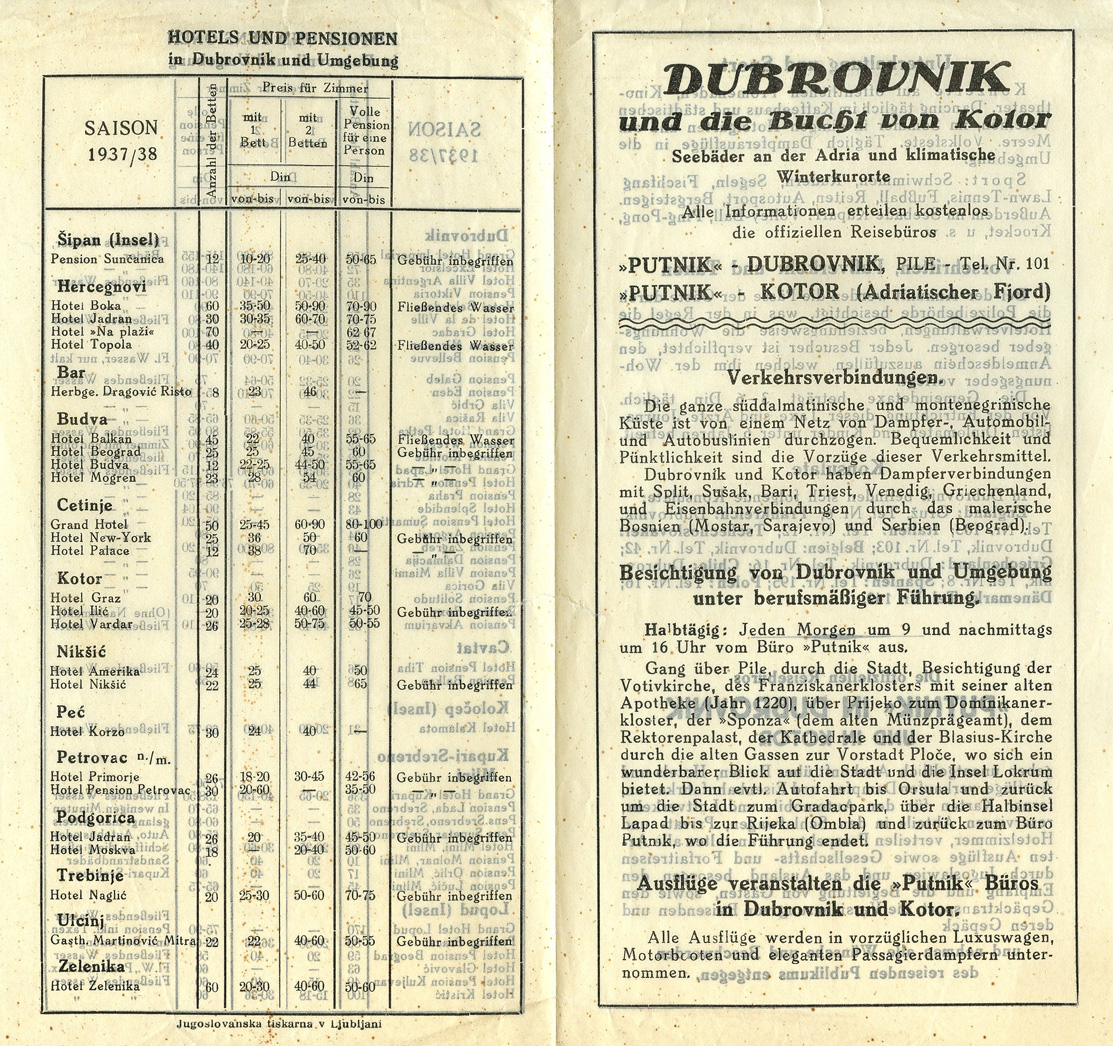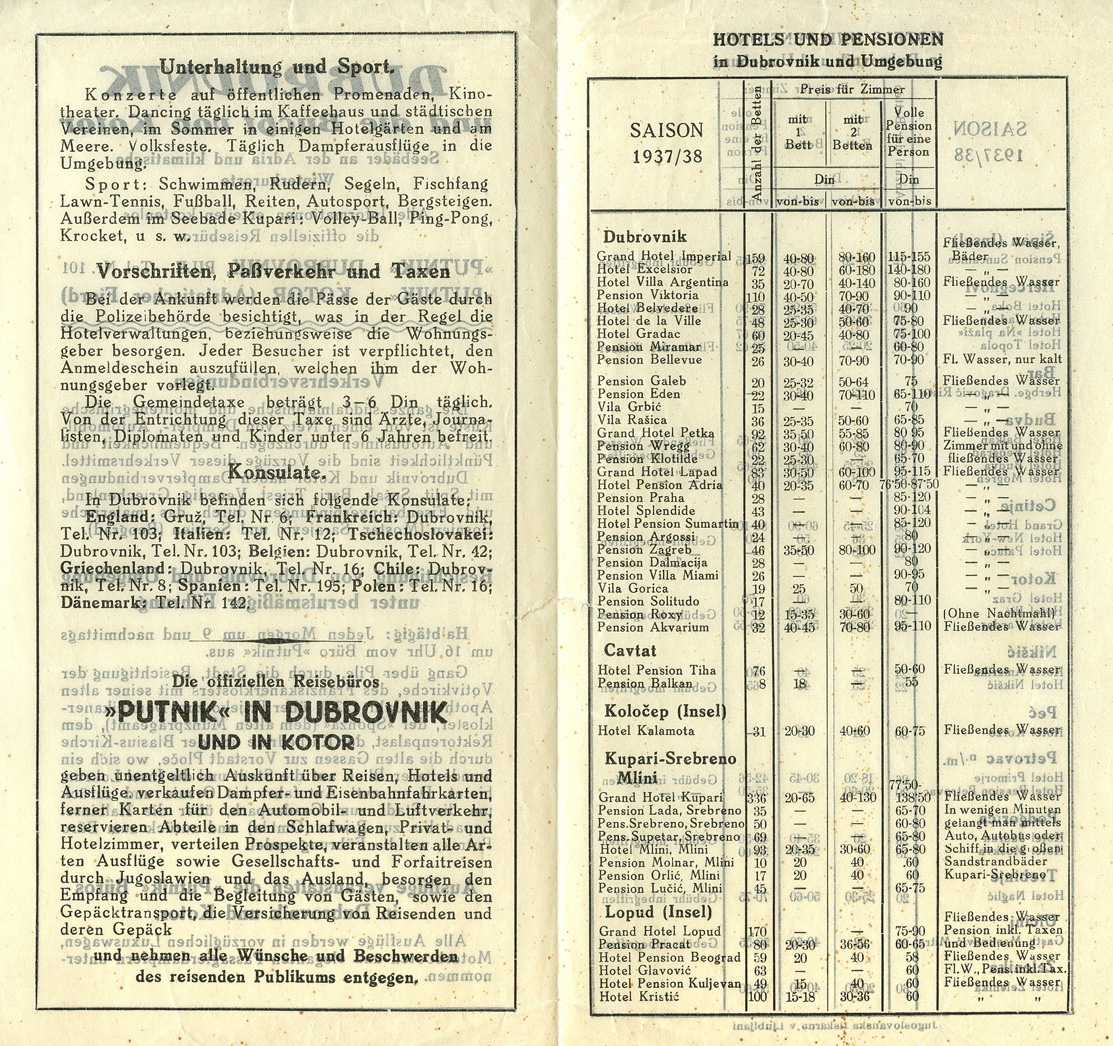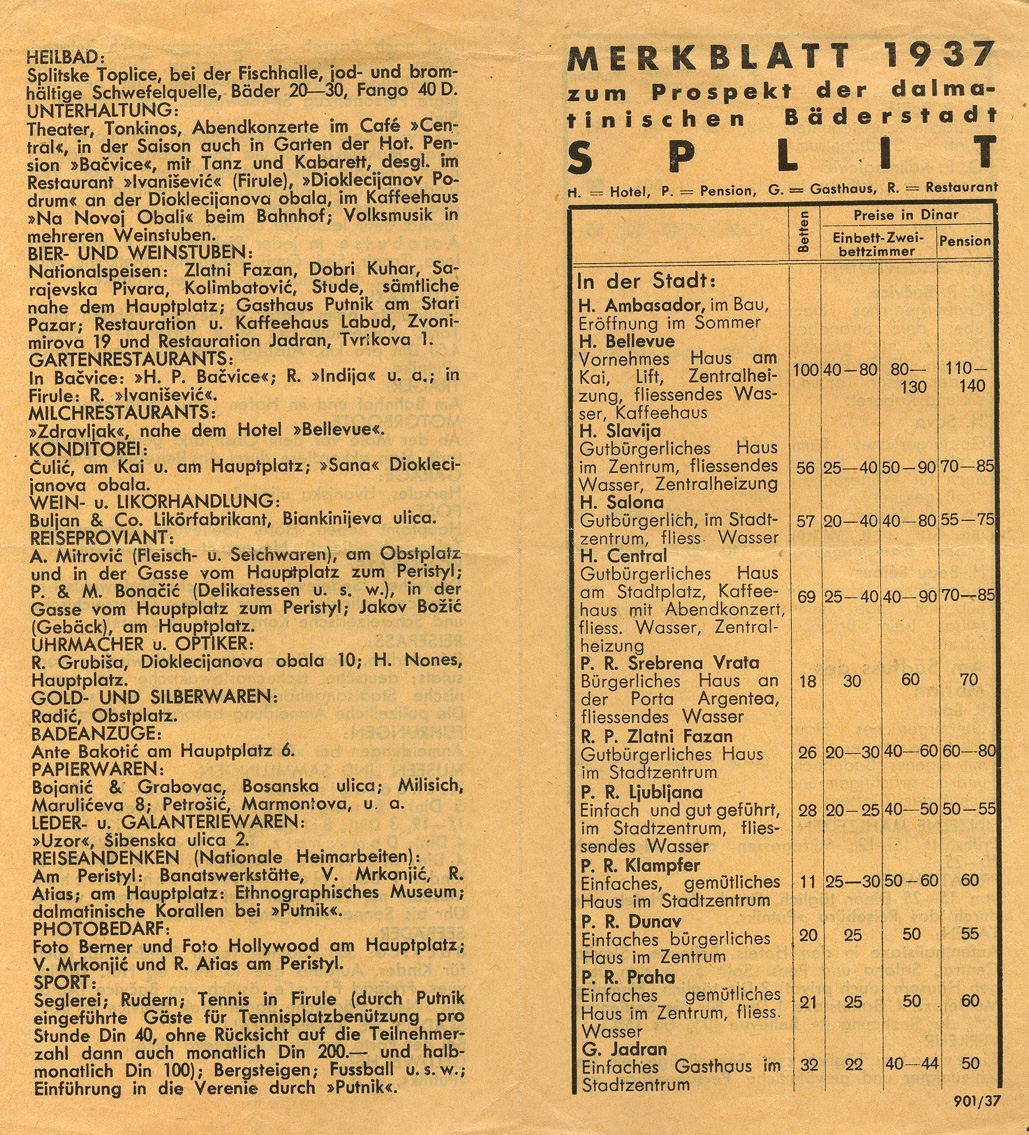
*Extra special thanks to Markus for the wonderful help and advice!
[Below: Schlöbckes Zeichenmappe (Schlöbckes Drawing Folder). Schlöbckes is the last name of the maker, and as you can see here his first name is Johannes from Hannover.]
[Below: Close-up. 'Reise' means journey, then you can see the names of two people 'Marianne' and 'Napoleon'. Then we see some of the places they visited, from Suhl (Thuringia) to Nuremberg and on to Augsburg (both of which are in Bavaria).]
[Below: Here is a modern map showing the trip. It would take three and a half hours to make the trip today. It is roughly 188 miles (304 km).
[Below: Inside of folder empty.]
[Below: Inside with contents.]
[Below: Back of folder.]
[Below: A sample of the contents splayed out.]
[Below: After they probably got out of their car and stretched their legs, they needed a few beers, so they went to the 'Brauerei Kaltenhausen bei Hallein - Salzburg' (Kaltenhausen Brewery near Hallein - Salzburg). Hallein is a town in Salzburg. Here are two receipts from the brewery. Also note the word 'Gegründet 1475' which means 'Founded 1475'! Now that's old...]
[Below: This receipt from Salzburg says:
'Valutenumsatzsteuer im Abfindungswege entrichtet.
('Valuten' means foreign currency.
[Below: Next we move to Linz, the capital of Upper Austria and third-largest city in Austria. From Salzburg to Linz is 82 mile (132.3 km). Also note that Adolf Hitler moved to Linz with his family in 1898.]
[Below: On June 16, 1939 our travelers went to the Hotel Achleitner in Linz. 'Zimmer Auszug' means 'Room statement'. With taxes this room only cost them 14 Schillings, a big discount compared the last hotel which charged them 23 Schillings.]
[Below: Next our travelers moved into Germany, below I present you with the papers and souvenirs of their journey. We'll start in the south and go up from there. First, Fürstenfeldbruck, a town in Bavaria, Germany, located 32 kilometers (around 20 miles) west of Munich. It is the capital of the district of Fürstenfeldbruck.]
[Below: Postcard showing the historic Marthabräu, Fürstenfeldbruck, postmarked April 9, 1938. I'm not sure where this postcard fits in, maybe it is just something they got in the mail, but you'll note the last name 'Apotheker', which means 'pharmacist', is found on many of the hotel receipts. In Germany in the past, they would sometimes add the profession to the name. This can be seen on many gravestones where the profession was also written. Anyway, note the flag outside the Marthabräu.]
[Below: Reichsdienstflagge (Reich Service Flag) is the type outside the Marthabräu.]
[Below: Receipt from Leonhard Plonner from April 9, 1938. Plonner was a merchant by profession, but from 1919 to 1929 he was also the mayor of Fürstenfeldbruck.]
[Below: Receipt reverse. It says:
'Kraftfahrzeuge
Modernst eingerichtete Werkstätte und Kundendienststation Garagen - Tankstelle
Nachtdienst
Reichhaltiges Zubehör und Ersatzteile - Lager
Das bekannt leistungsfähigste Fachgeschäft des Bezirks'
(Motor vehicles
State-of-the-art workshop and customer service station Garages - petrol station
Night Service
Wide range of accessories and spare parts - stock
The best-known high-performance specialty store in the district).]
[Below: Leonhard Plonner.]
[Below: Next, we move on to Munich, Bavaria's capital.]
[Below: Postcard showing 'Blick auf die Frauenkirche vom neuen Rathaus' (View of the Women's Church from the new town hall), although that is what locals call it, its official name is 'Cathedral of Our Dear Lady'.]
[Below: Postcard reverse. It says: 'München im Bild - Zeichnung v. O. Schwager... Neuen Rathaus. Militärverlag München.' (Munich in pictures - Drawing by O. Schwager... New Town Hall. Military Publishing House Munich).]
[Below: Postcard of Munich.]
[Below: Postcard reverse.]
[Below: Receipt from the Hotel Kaiserhof in Munich. It shows that our travelers stayed here April 9-10, 1938. It lists: 'Übertrag' (Carryover - this means the price for last night's room carried over to the next day), 'Zimmer' (Room) and 'Frühstück' (Breakfast).]
[Below: Postcard, it says: 'München Isarpartie mit Gebirge' (Munich Isar section with mountains). The Isar is the river shown here.]
[Below: Postcard reverse. Although it was made out, it was never sent for whatever reason.]
[Below: Another receipt from the Hotel Kaiserhof. They returned about two weeks later, staying on April 22nd and 23rd.]
[Below: Next we move on to the beautiful city of Augsburg, a city in the Bavarian part of Swabia, Germany, around 50 km (31 miles) west of the Bavarian capital Munich.
Interestingly, there was a witch craze in Augsburg in the late 16th century which led to several witch hunts. After the 1585–1588 plague epidemic, southeast Germany was overtaken by brutal witch hunts.
Of historic note, in 1941 Rudolf Hess took off from a local Augsburg airport and flew to Scotland.
Augsburg had some very important military factories within it, like the 'MAN' factory, the largest maker of engines for U-boats and the Messerschmitt aircraft firm, which was headquartered in Augsburg.]
[Below: Here is a beautiful booklet showing off the many cultural treasures of Augsburg.]
[Below: A nice full color postcard.]
[Below: Postcard reverse. This says:
'Das Schöne Augsburg
(The beautiful Augsburg
[Below: This is a cool booklet. See below to see why. This says:
'Was bietet
(What does Augsburg have to offer?)]
'Veranstaltungen
(Events of
And further down:
'Großdeutschlands Fremdenverkehr
(Greater Germany's tourism
And further down:
'Unser Kampfruf für die Abstimmung am 10. April:
(Our battle cry for the vote on April 10:
This is referring to the April 10, 1938 referendum on the Austrian Anschluss with Germany. Nearly 100% of Austrians voted to join Germany. Historically the country had always been one country, only through war defeats was it broken up.
Another cool ad for the Anschluss. This says:
'Alles hat der Führer für Dich getan --
(The Führer has done everything for you --
[Below: Back of pamphlet. More Anschluss advertising. This says:
'Am 20. Februar 1938
Am 12. März 1938 erlebten wir die Verwirklichung dieser Worte:
Am 10. April 1938 wird die Welt erleben:
Wir alle stimmen mit: Ja!'
(On February 20, 1938
On March 12, 1938, we witnessed the realization of these words:
On April 10, 1938, the world will experience: We all agree: Yes!)]
[Below: Next we move to the city of Passau. Passau is a German city on the Austrian border, in Bavaria. When he was but a few years old, Adolf Hitler and his family lived in Passau from 1892 until 1894. He would later return and give four speeches in Passau. Heinrich Himmler also stayed in the city for a time. Passau is very picturesque, partly due to its Gothic and baroque architecture. Its strategic position made it a place of great wealth, from Roman times and up. Many Danube river cruises begin at Passau.]
[Below: Our travelers didn't leave us much from their time in Passau, just a receipt of some kind. This says: 'Reisebüro u. Wechselstube Passau' (Travel agency and exchange office Passau).]
[Below: Receipt reverse. Most young people cannot begin to even do the simple math found here. About three-quarters of Chicago Public Schools students cannot read at grade level on the Illinois Assessment of Readiness in 2023. Nearly 83% did not meet proficiency in math. It is an epidemic of idiocy.]
[Below: Next they traveled to beautiful Nuremberg. Where the magical rallies of the National Socialists were held. ]
[Below: The breathtaking 1935 Nuremberg rally.]
[Below: This booklet (back/front) is from the 'Württemberger Hof Nürnberg' hotel resturaunt. It says: 'Zimmer-Ausweis - Zimmerpreis für eine Uebernachtung' (Room ID - Room rate for one night).]
[Below: Inside of the booklet. The top says: 'Zimmer, welche bei der Abreise um 6 Uhr abends nicht aufgegeben sind, werden für die folgende Nacht berechnet' (Rooms that are not vacated at 6 p.m. will be charged for the following night).]
[Below: 'Württemberger Hof Nürnberg' hotel & restaurant receipt from April 6, 1938.]
[Below: A Nuremberg shoe store receipt. It says: 'Das Schuhhaus für Alle' (The shoe store for everyone).]
[Below: Reverse of receipt, some math writ by a forgotten hand.]
[Below: Next we move on to Forchheim, a town in Upper Franconia in northern Bavaria. Forchheim is a former royal city, sometimes referred to as the 'Gateway to the Franconian Switzerland', which refers to the breathtaking natural beauty to the north east of the town.]
[Below: Postcard, it says 'Forchheim - Eingang zur Pfalz' (Entrance to the Palatinate). The Palatinate is historic region of Germany.]
[Below: Postcard reverse. Yeah, nothing to see here...]
[Below: Another postcard, this one shows the sleepy town of Forchheim from the air.]
[Below: Postcard reverse. It says: 'Flugzeugaufnahme von Forchheim' (Aerial view of Forchheim).]
[Below: Bamberg is a town in northern Bavaria, Germany. Bamberg is said to be one of Germany's most beautiful towns, with medieval streets and buildings.]
[Below: Here is a booklet from Bamberg (back/front).]
[Below: Pages within the booklet.]
[Below: Pages within the booklet.]
[Below: Pages within the booklet. Is the guy with the horn and swastika banner cool or what?]
[Below: Close-up.]
[Below: Receipt from the 'Bahnhof-Hotel Bamberg'. Schlüssel abgeben! Briefe wohin? (Return the keys! Letters to anywhere). From April 6, 1938.]
[Below: Receipt from a decaffeinated coffee called 'Kaffee Hag'. It's a funny name in English, because 'hag' means an old crone. The receipt also says 'Genuss und Diät vereint! Nur HAG ist HAG' (Enjoyment and diet combined! Only HAG is HAG). I'm guessing this is from Bamberg because someone has written in pencil on the side 'Abendessen in Bamberg Bahnhofshotel' (dinner in Bamberg Bahnhofshotel)...]
[Below: Next we move to the city of Coburg. Coburg is a town located on the Itz river in the Upper Franconia region of Bavaria.]
[Below: Postcard of Coburg. This is impressive.]
[Below: Reverse of postcard. It says: 'Veste Coburg - (Fliegeraufnahme)' = Coburg Fortress (aerial photograph). This was postmarked on April 4, 1938.
[Below: Ticket stub. Ah, yes, our assumptions were correct, they did visit the fortress. This says:
'Veste Coburg
(Coburg Fortress
[Below: Coburg had other significance as well. On October 14, 1922 Adolf Hitler led 800 men from the SA by train to Coburg for a weekend rally. The commies were waiting for them. Huge street battles ensues, with the National Socialists eventually being victorious. Adolf Hitler order the The Coburg Badge struck, it was to be the first badge recognized as a national award of the National Socialist party. It became one of the most coveted awards, showing you were there in the early days, risking life and limb. Below is the badge itself.]
[Below: Here is another, although different, receipt from 'Kaffee Hag'. This one says: 'Schont Ihr Herz' (Easy on the Heart). Again someone wrote the location on the receipt, this time Coburg.]
[Below: Reverse of receipt.]
[Below: Here is another shoe store, this time called 'Lingel'. Again someone wrote the location of Coburg on the receipt.]
[Below: Here's a Lingel shoe store.]
[Below: Here's an ad for Lingel shoes.]
[Below: Next we move to the city of Erfurt, a city in the central German state of Thuringia. Martin Luther was ordained here and the monastery where lived as a monk is here as well. ]
[Below: Booklet and map of Erfurt.]
[Below: Pages within.]
[Below: Pages within.]
[Below: Pages within.]
[Below: Next we move to the city of Halle, a city in central Germany.]
[Below: Booklet (back/front) from the 'Hotel Goldene Kugel'.]
[Below: Inside booklet 'Ein Willkommensgruss unseren verehrten Gästen' (A welcome to our esteemed guests).]
[Below: Finally we've made it to the capital of Germany, Berlin.]
[Below: A page from the newspaper 'Berliner Tagblatt' (Berlin Daily Paper), from April 24, 1938. The headliner says 'Albanien bereit zur Königshochzeit' (Albania ready for royal wedding)]
[Below: Close-up]
[Below: Interesting advertisement from a Jewish department store, in fact, one of the largest in Europe.]
[Below: I don't know about you, but after all this traveling I need a beer! How about a Gösser? Thus ends our 1938 vacation...]
[Below: For reasons unknown, our travelers went to Madgeburg and bought train passes in May 1939. Magdeburg is a central German city on the Elbe River.]
[Below: Here are two little booklets used in May 1939 that say 'Mitteleuropäisches Reisebüro' (Central European Travel Agency).]
[Below: Page two of the booklet. A the top it says:
'Nicht aus dem Heft herausnehmen! Einlegeblatt für Fahrscheinhefte zu ermäßigten Preisen für Urlaubsreisen'
(Do not remove from the booklet! Insert sheet for ticket booklets at discounted prices for holiday trips)
In the center it says things like 'Reiseziel' (Destination - which in this case is Innsbruck)'Reiseantritt am' (Departure on)'Frühester Rückreisetag am' (Earliest day of return on) and 'Ende der Rückreise spätestens am' (End of the return journey no later than).]
[Below: Next pages.]
[Below: If you look carefully you can see an eagle/swastika embossed seal on the page above, here is a close-up.]
[Below: Next pages.]
[Below: Next pages.]
[Below: Next pages.]
[Below: Back of booklets.]
[Below: Abbazia (Italian) is a town (currently) in western Croatia (at the time a part of Yugoslavia). A seaside resort on the Kvarner Gulf and known for its Mediterranean climate and its historic buildings reminiscent of the Austrian Riviera.]
[Below: Reverse of pamphlet, it says: 'Listino dei prezzi degli alberghi e pensioni' (Price list of hotels and guesthouses).]
[Below: Telegram to our avid traveler at the Hotel Petka, in Dubrovnik, a city in southern Croatia on the Adriatic Sea, April 15, 1938.]
[Below: Here's a pamphlet from the Hotel Petka in Dubrovnik.]
[Below: Inside pamphlet.]
[Below: This brochure says: 'Dubrovnik und die Bucht von Kotor' (Dubrovnik and the Bay of Kotor). This is printed on very thin paper, like rice paper. Reverse/cover.]
[Below: Brochure inside.]
[Below: Receipt for the Hotel Esplanade in Croatia's capital city of Zagreb, April 17, 1938.]
[Below: Travel guide book cover for Dalmatia. Dalmatia is located on the eastern shore of the Adriatic Sea in Croatia.]
[Below: Brochure of the Dalmatian spa town of Split. Although this was printed in 1937 it was still used in 1938. Reverse/front.]
[Below: Brochure inside.]

Wir kauften von Ihnen.'
'Umsatzsteuer' means sales tax.
'Valutenumsatzsteuer' is the sales tax you have to pay when you buy or sell a foreign currency.
We can assume the travelers changed Reichsmarks to Schillings).]

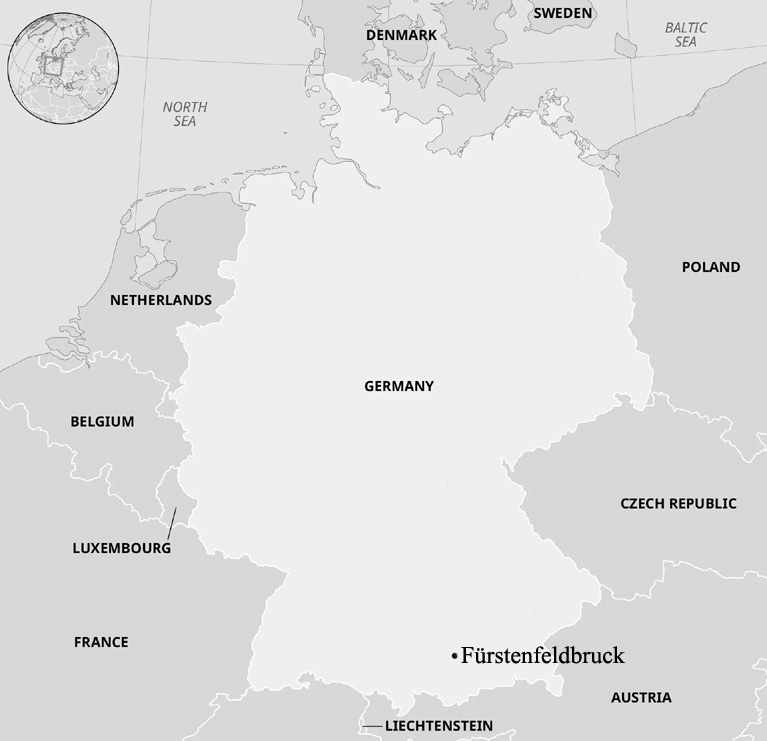
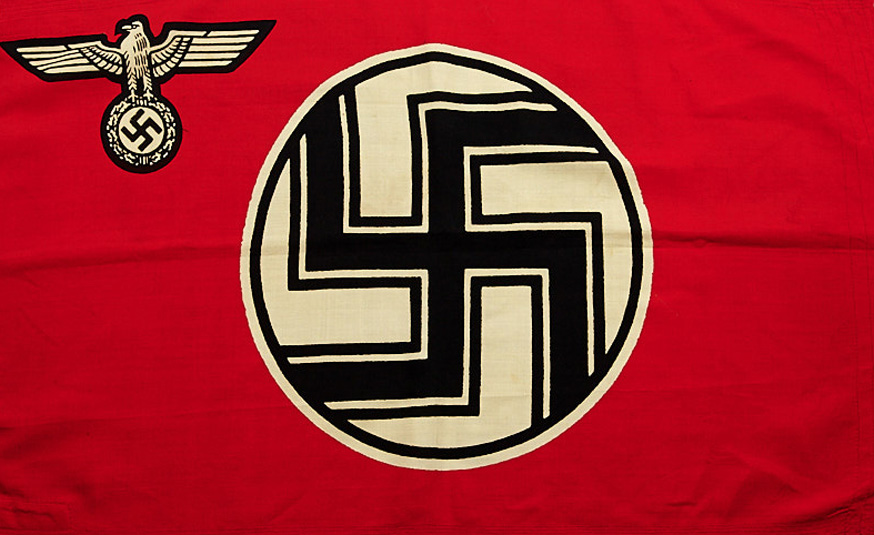
Fahrräder
Nähmaschinen
Separatoren
Kinderwagen
Schreibmaschinen
Bicycles
Sewing machines
Separators
Strollers
Typewriters



Der weltberühmte Goldene Saal
im Rathaus (erbaut 1615-1620)'
The world-famous Golden Hall
in the town hall (built 1615-1620)]
Augsburg'
der NSG "Kraft durch Freude"'
the NSG "Strength through Joy")
dankt Adolf Hitler'
thanks Adolf Hitler)
Ein Volk, ein Reich, ein Führer!'
One people, one empire, one leader!)
Nun erfülle auch Du Deine Pflicht!
Gib ihm am 10.April Dein Ja!'
Now do your duty!
Give him your yes on April 10th!)
hörten wir die Worte des Führers:
"Sollte jemals internationale Hetze und
Brunnenvergiftung den Frieden unseres Reiches zu
brechen versuchen, werden Stahl und Eisen
das deutsche Volk und die deutsche Heimat
unter ihren Schutz nehmen.
Und die Welt würde dann blitzschnell sehen, wie sehr dieses Reich -- Volk, Partei und Wehrmacht -- von einem Geist erfüllt und in einem Willen fanatisiert ist!
Der Führer schützte deutsches Volk und deutsche Heimat.
Das ganze deutsche Volk in allen Gauen ist erfüllt von einem Geist und fanatisiert von einem Willen!
we heard the words of the Führer:
"Should international agitation and
poisoning of wells try to break the peace of our nation,
steel and iron will protect
the German people and the German homeland
under their protection.
And the world would then see in a flash how much this Reich -- people, party and Wehrmacht -- is filled with one spirit and fanatical in one will!
The Fuehrer protected the German people and the German homeland.
That the entire German people in all districts are filled with one spirit and fanatically with one will!



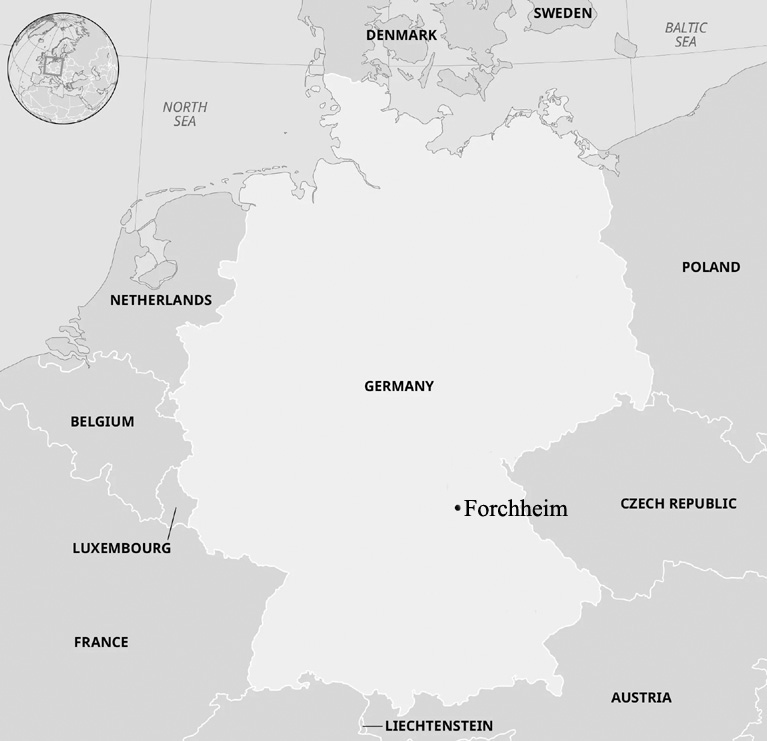

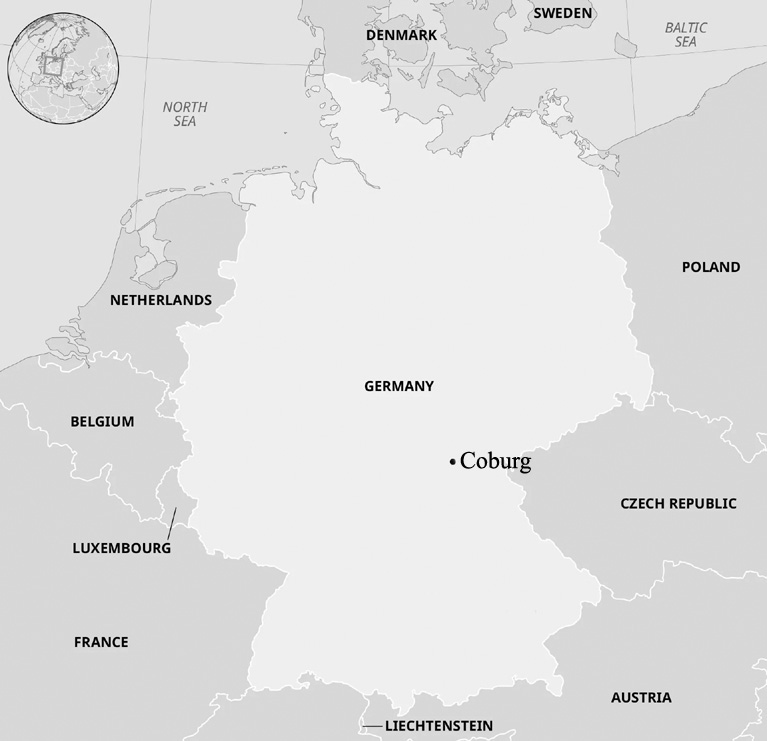
Note the odd green ink stamp saying 'Veste Coburg', this was most likely a special stamp done in the gift shop of the castle. Did they send this to someone at home? How did this postcard end up in their folder of souvenirs?]
Eintrittskarte
zum Besuch der
Kunstsammlungen
oder
des Fürstenbaues'
Entrance ticket
to visit the
art collections
or
the Prince's Building).]


